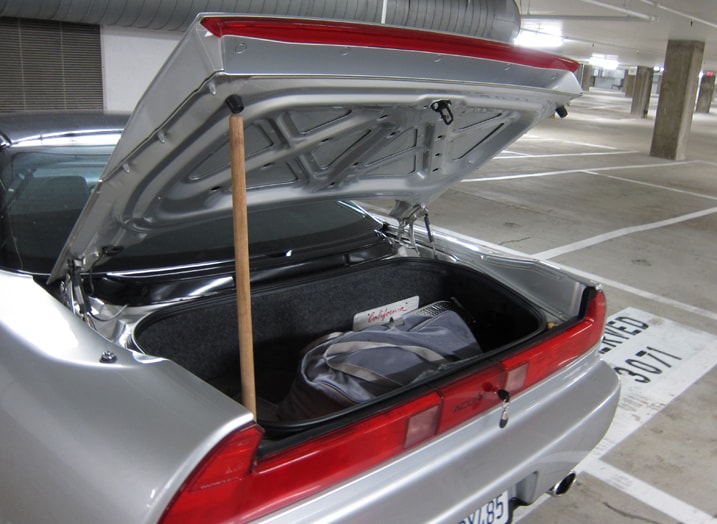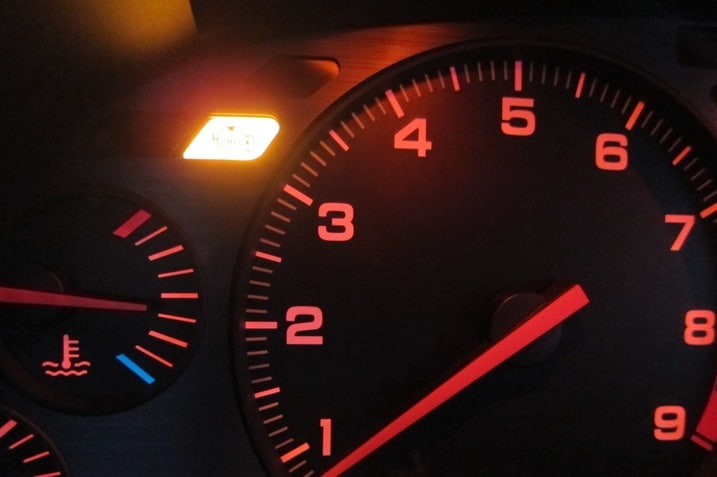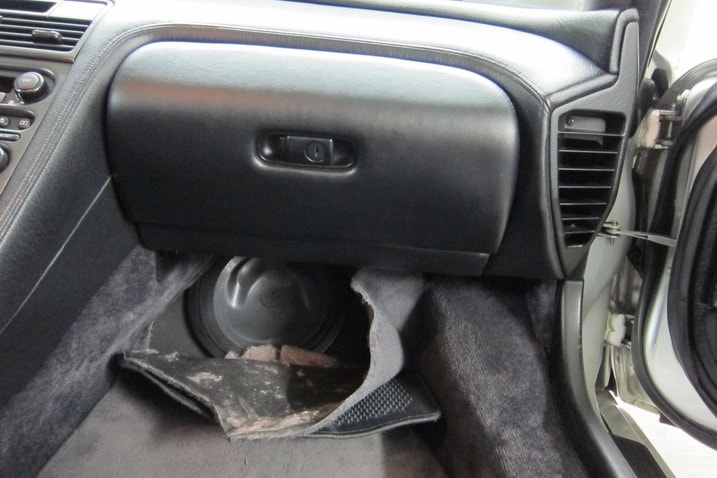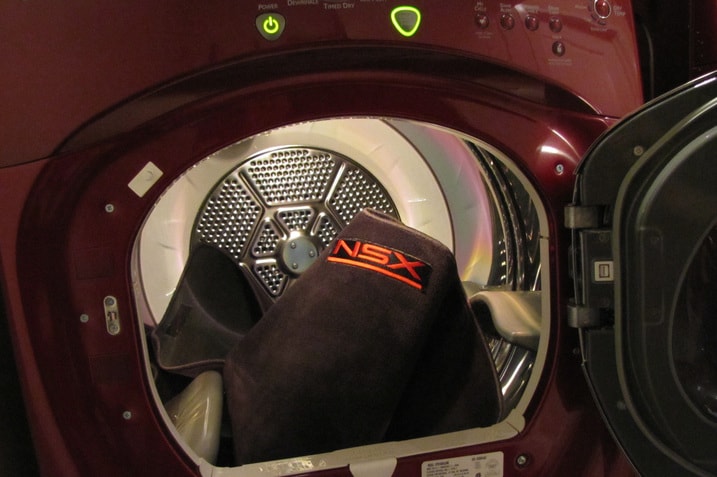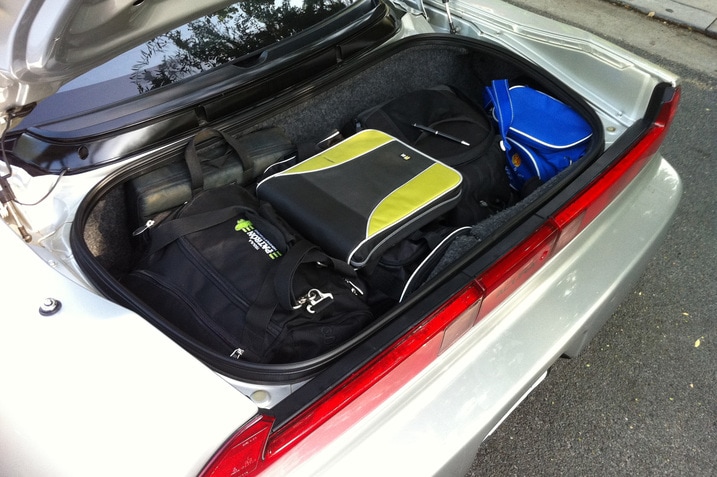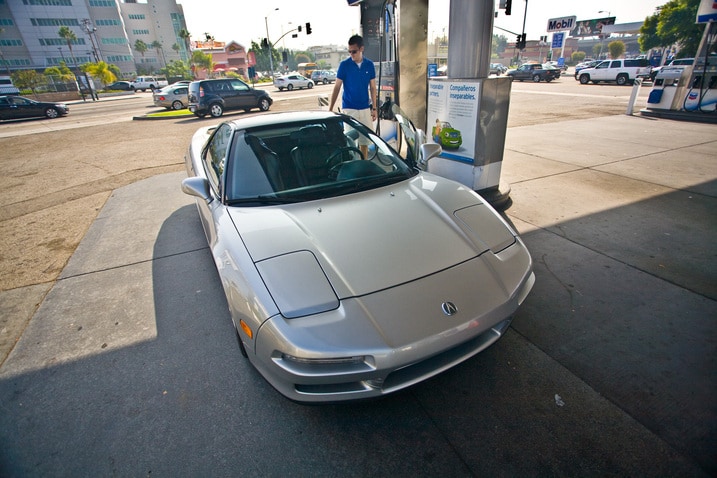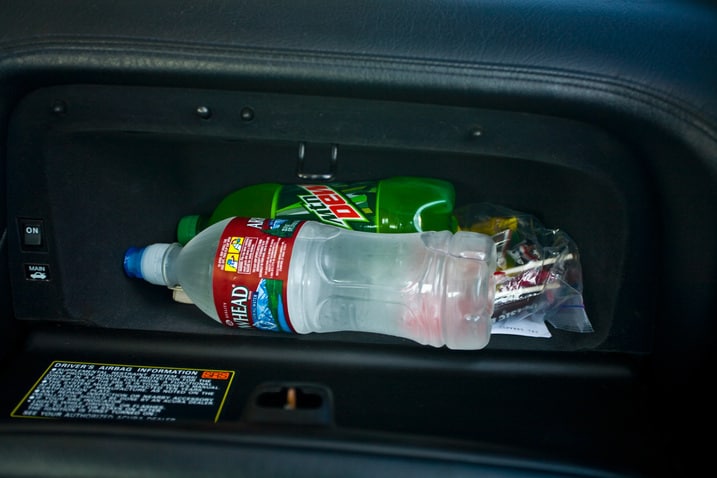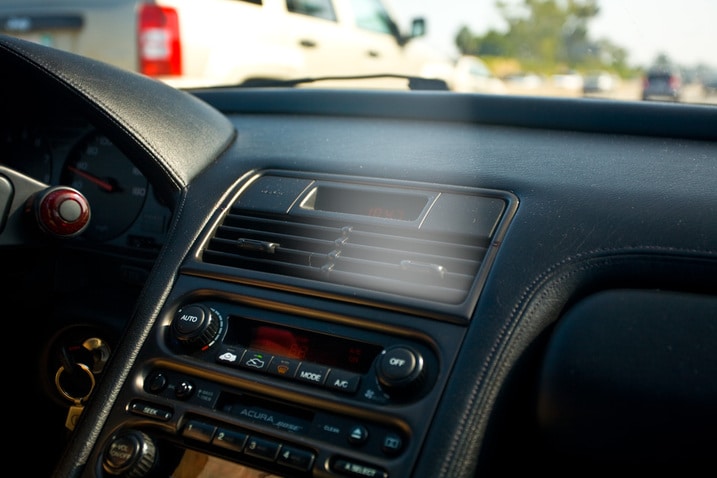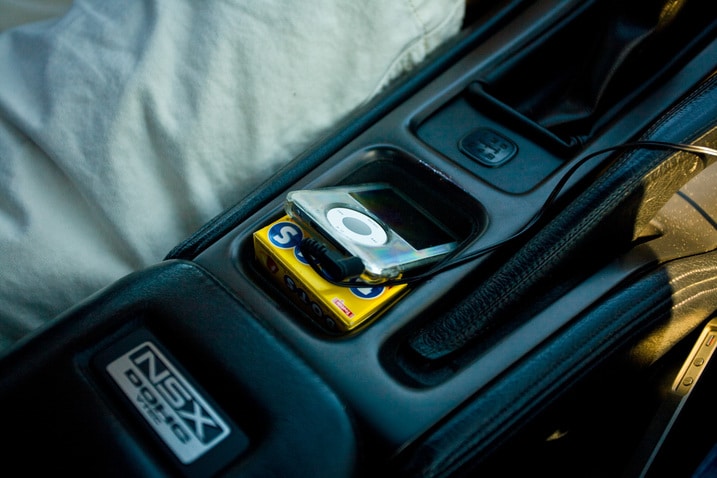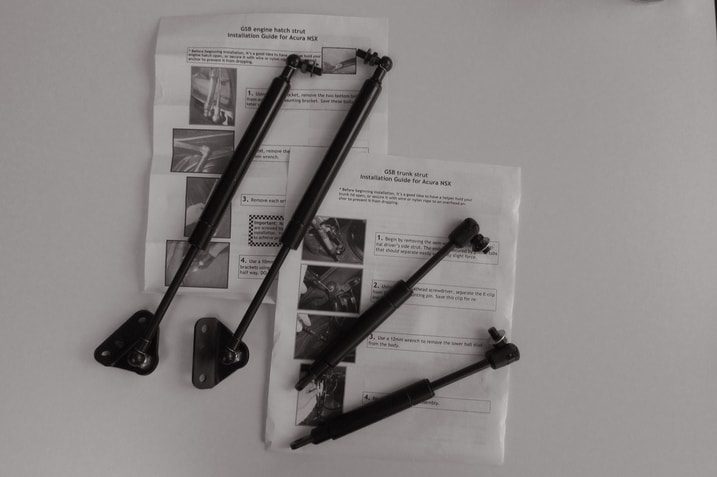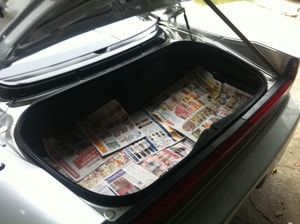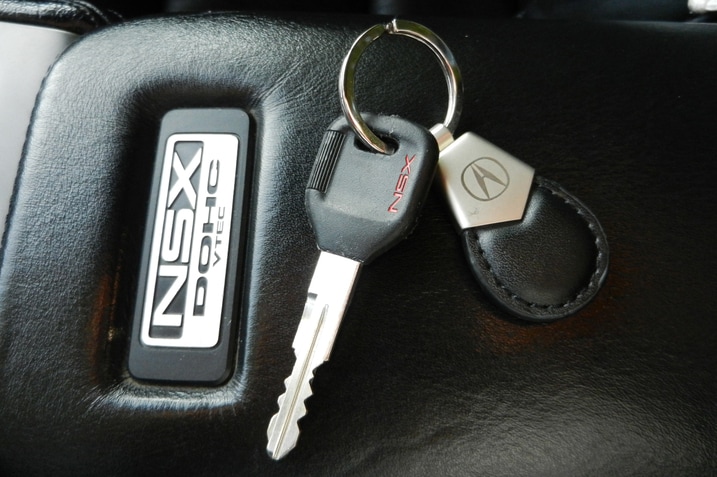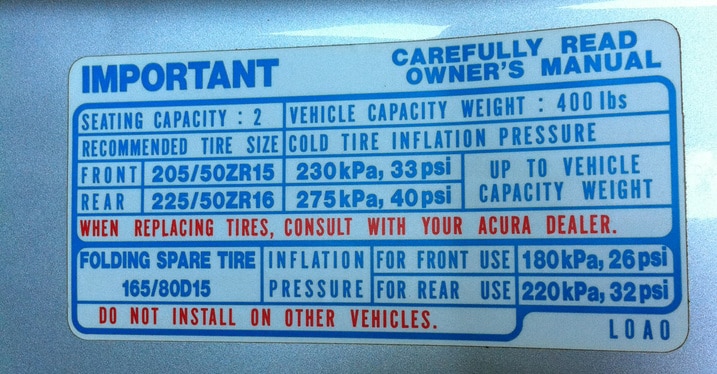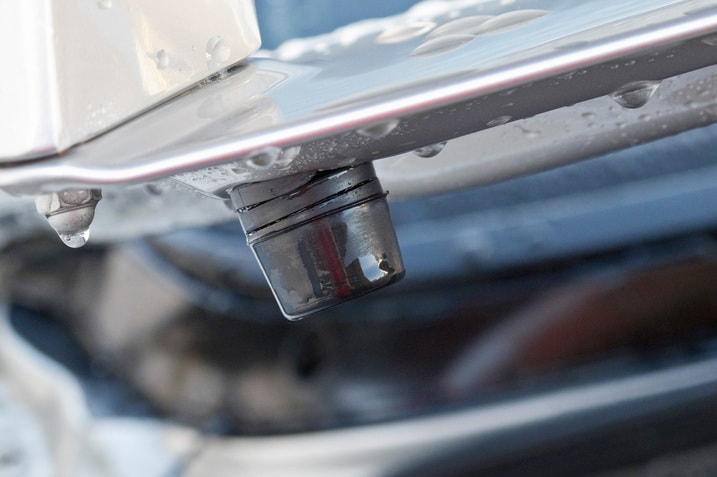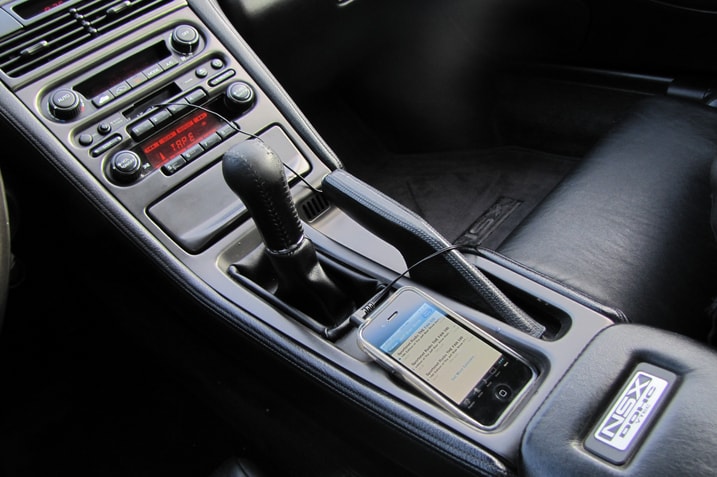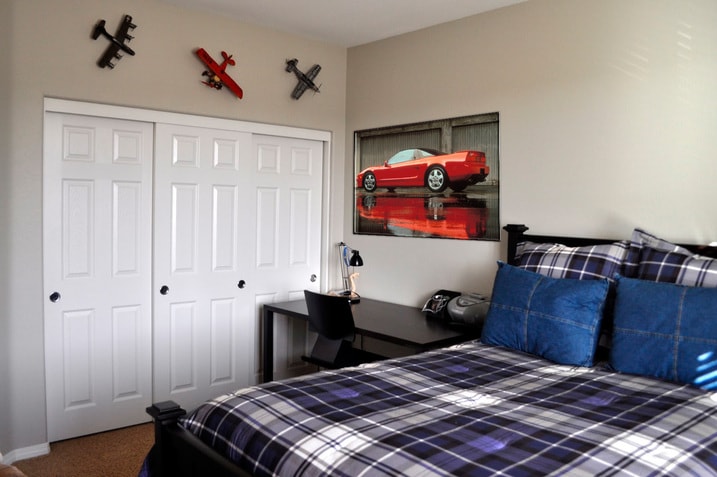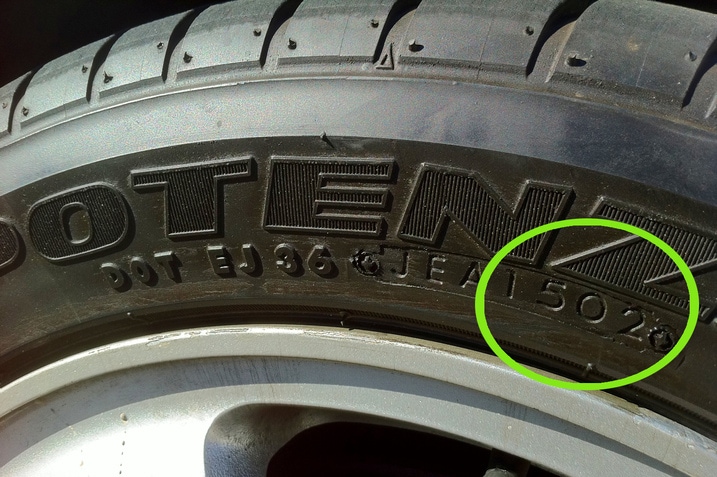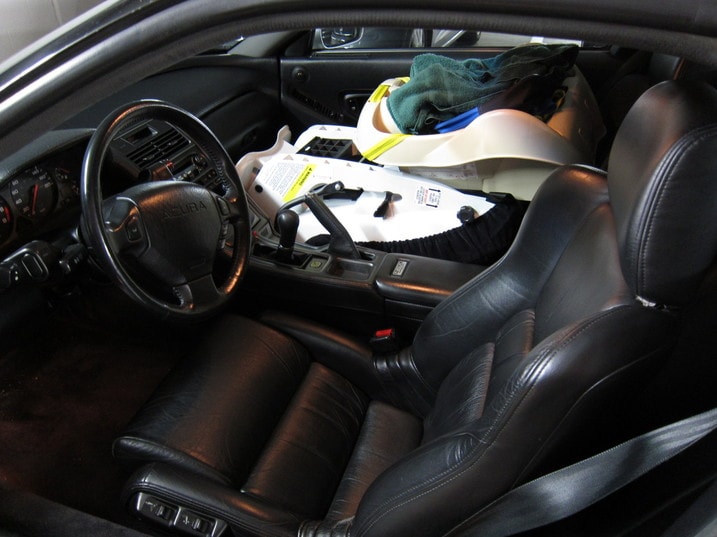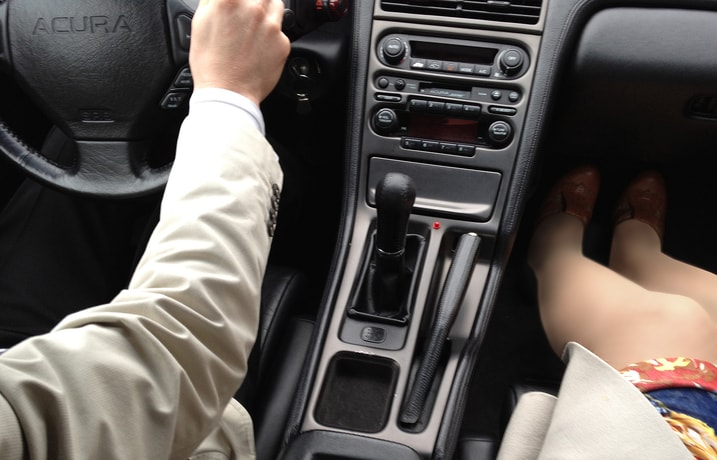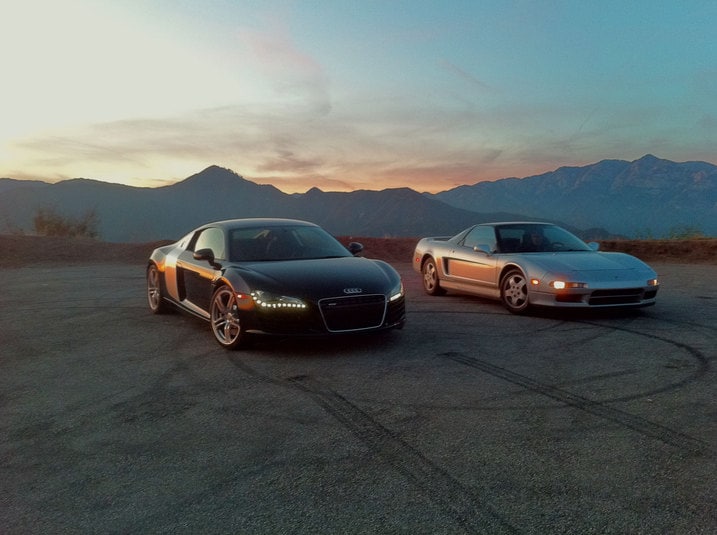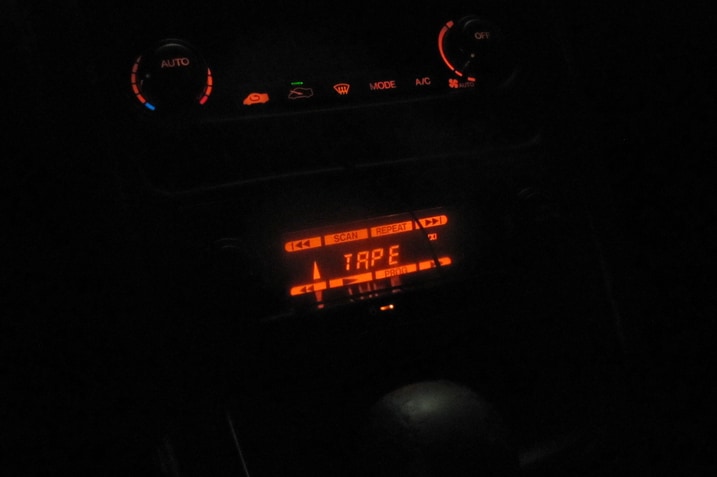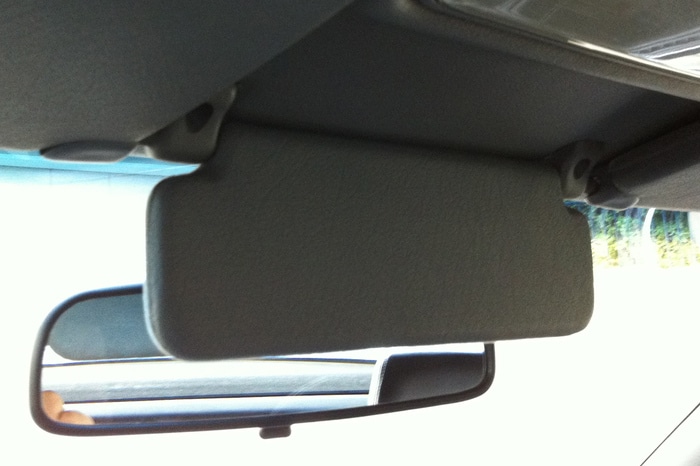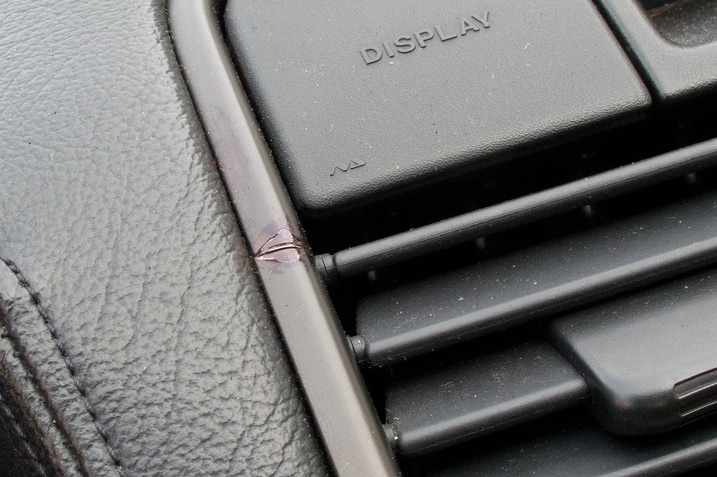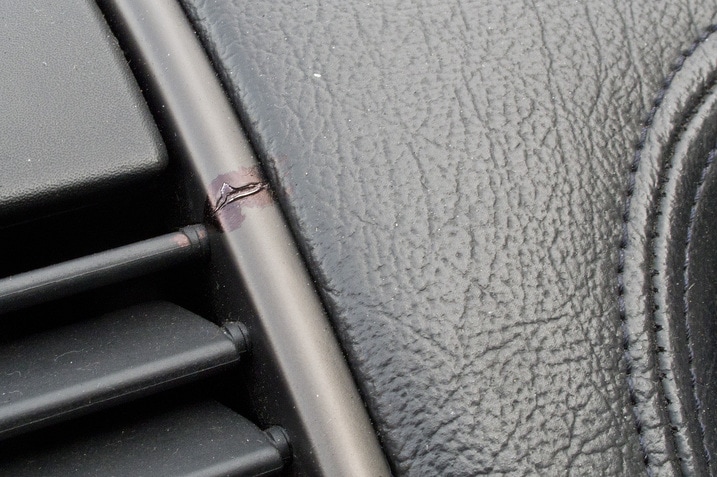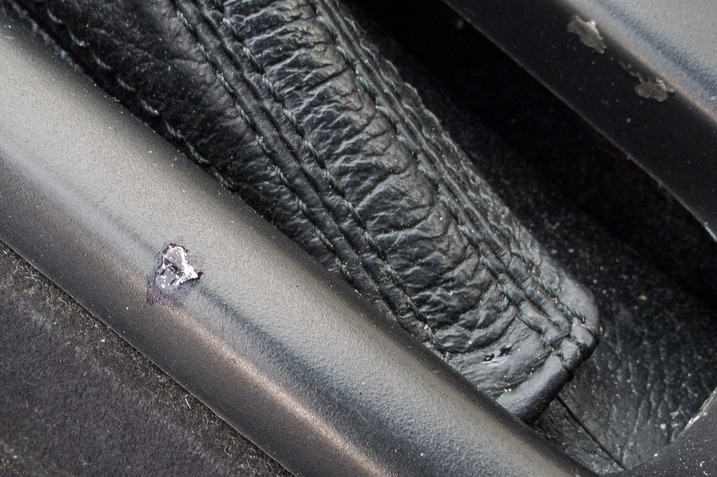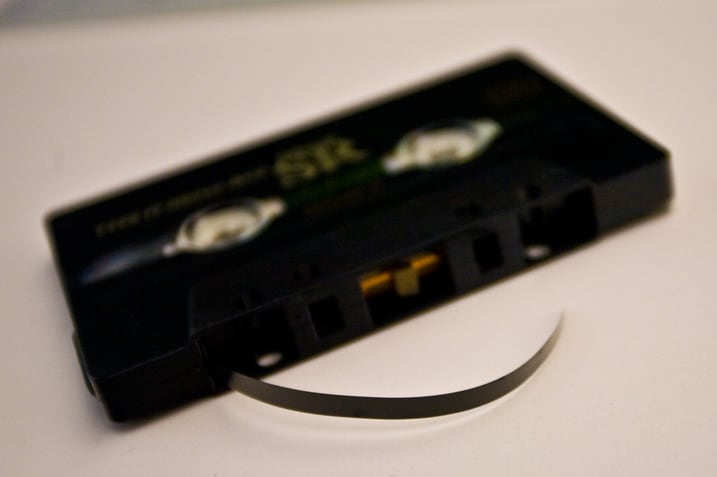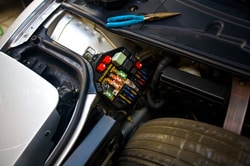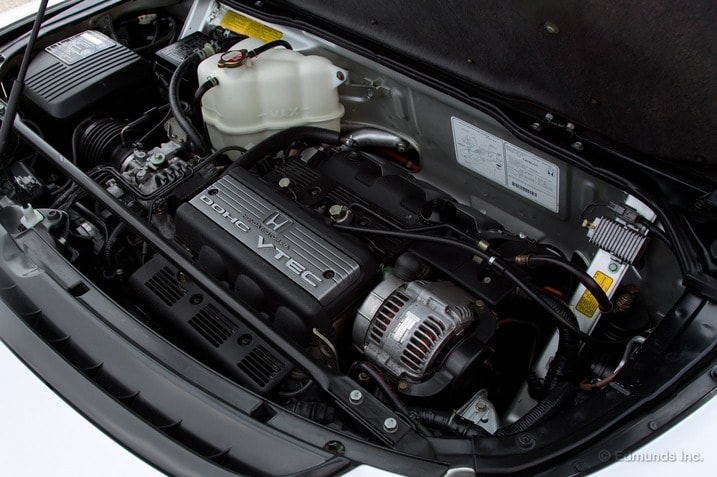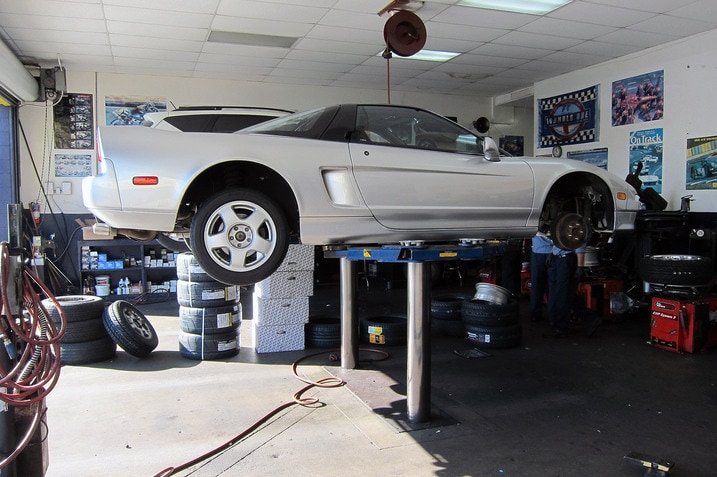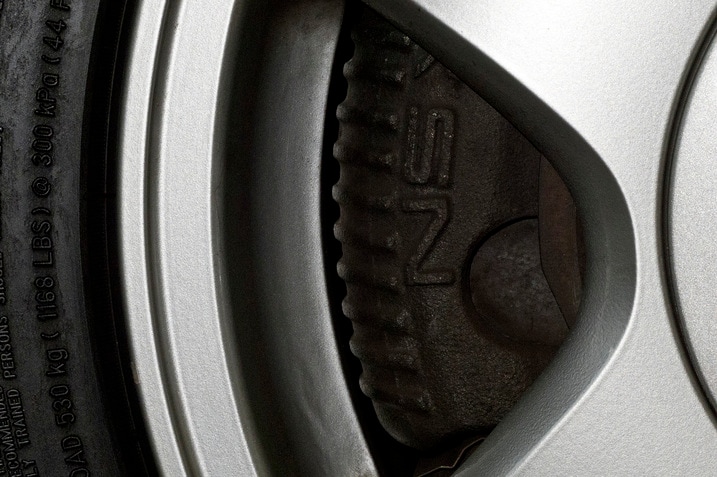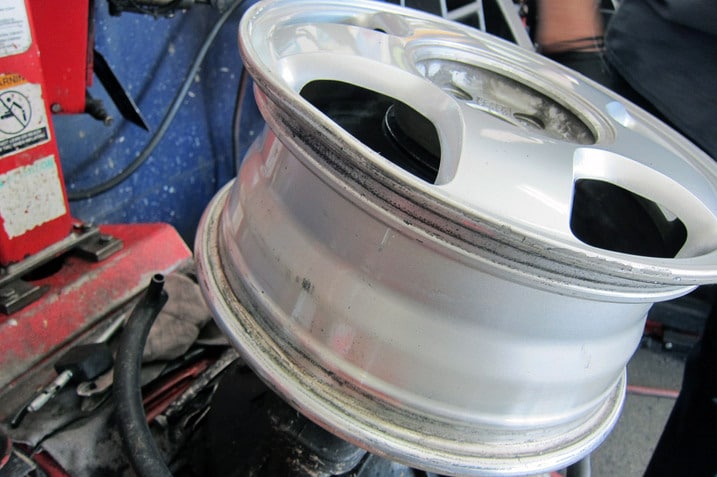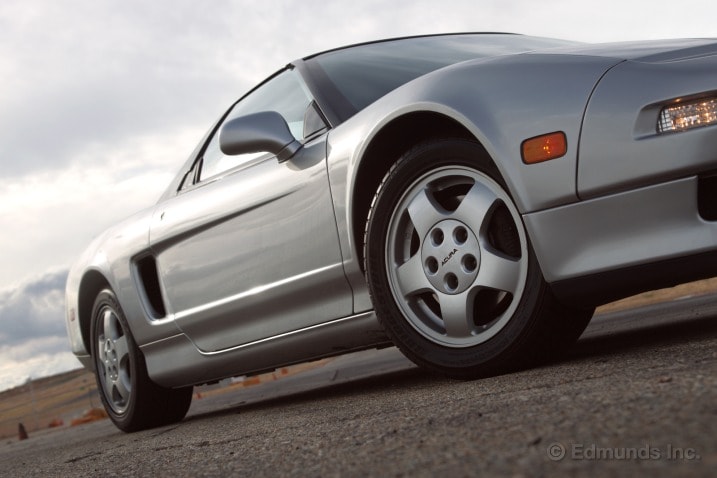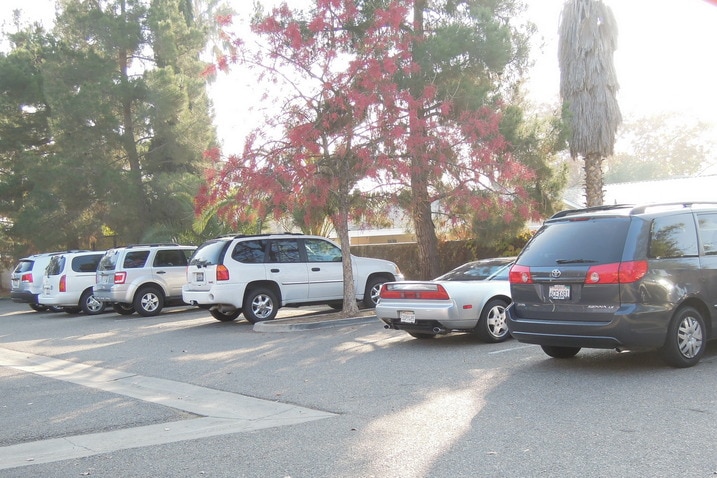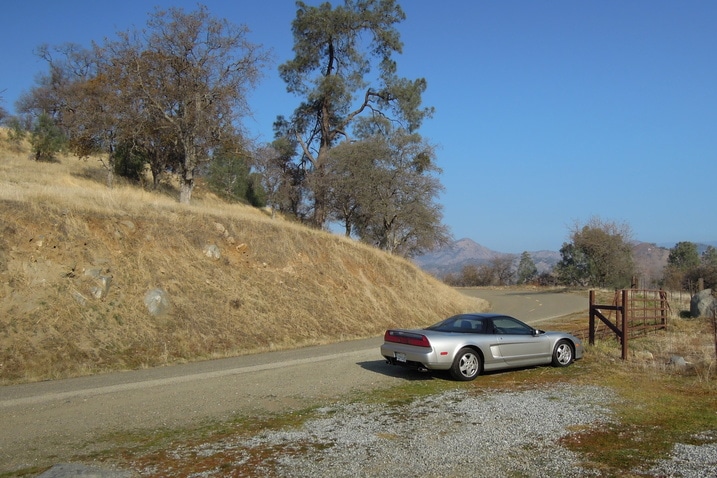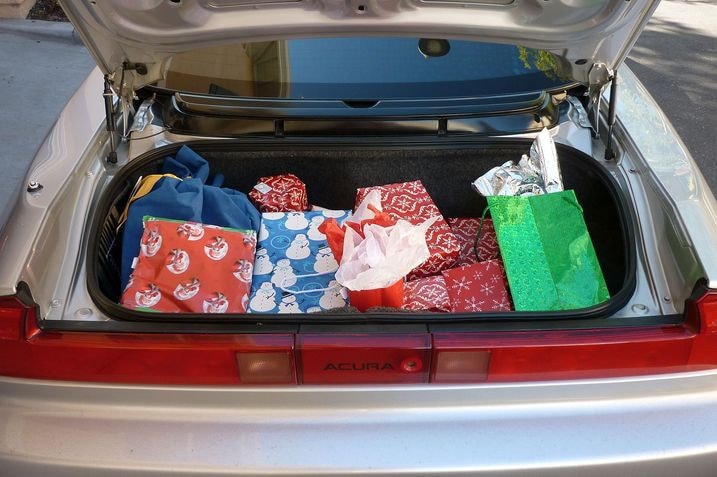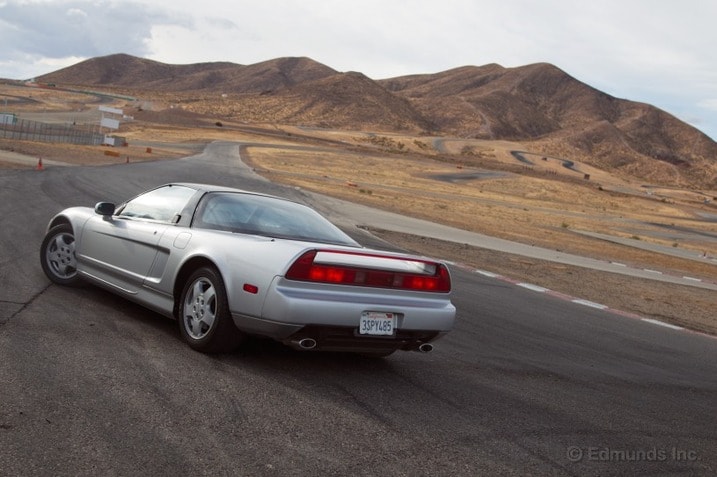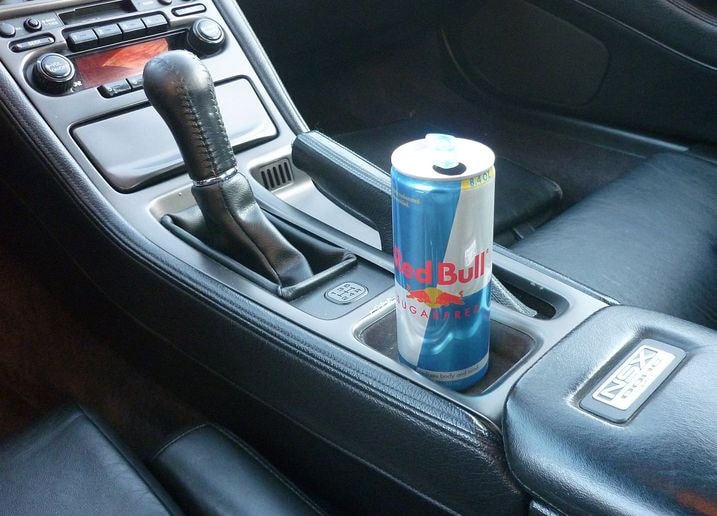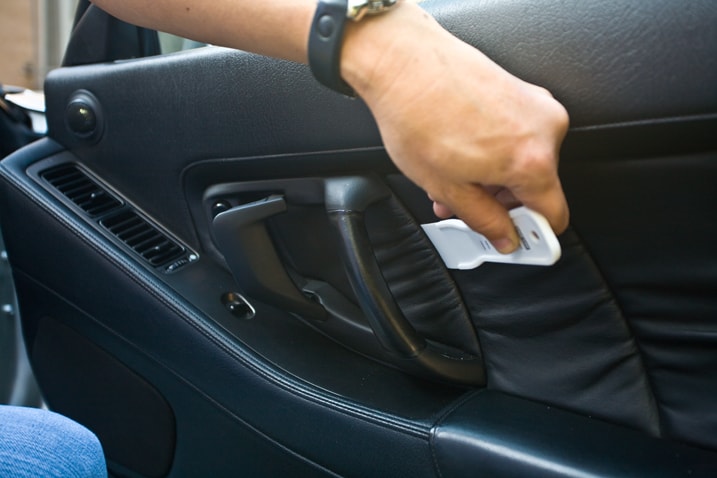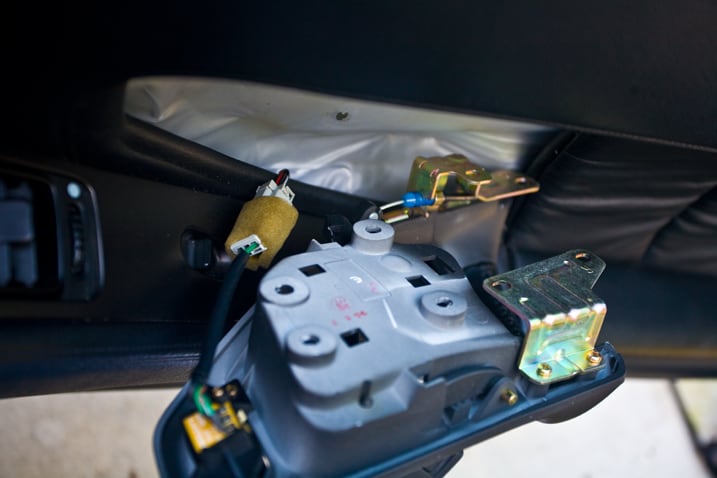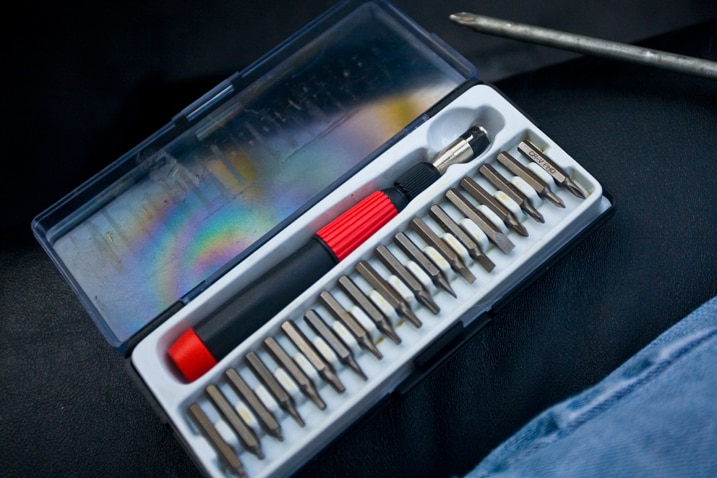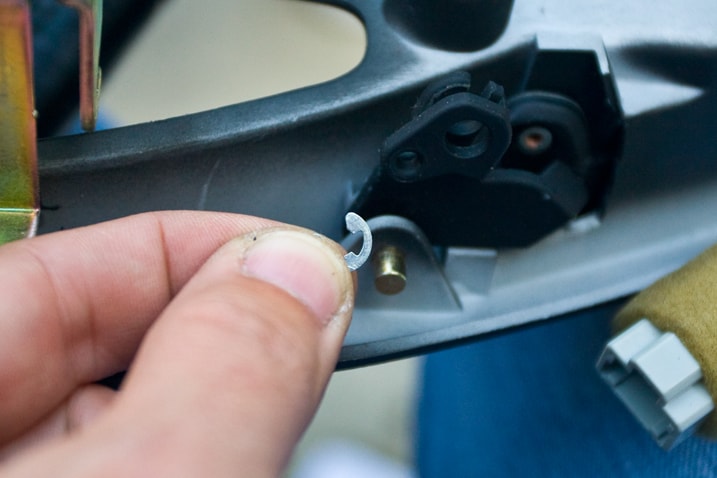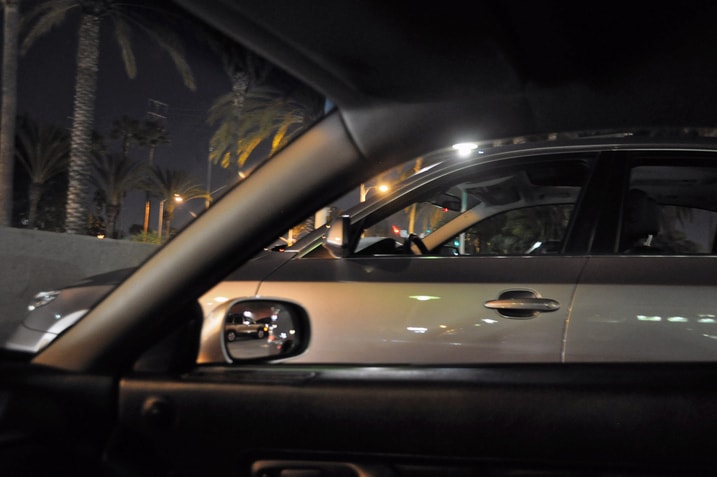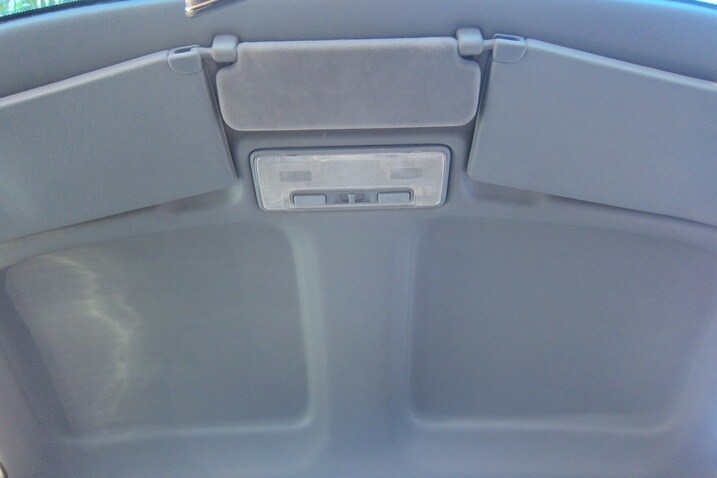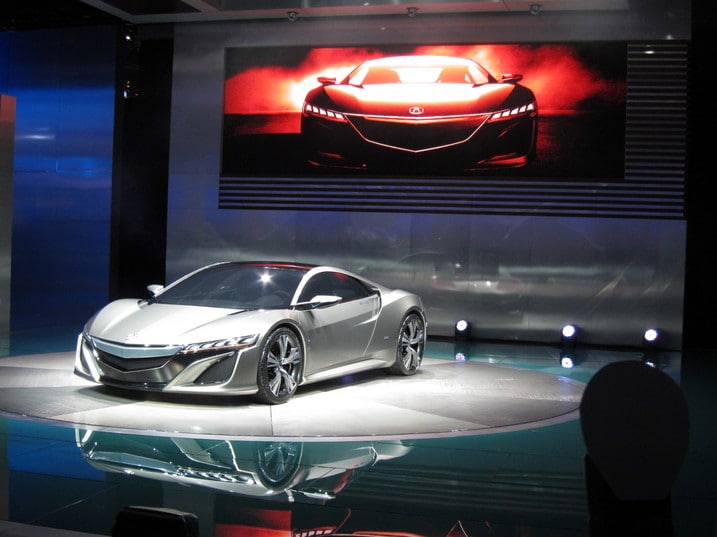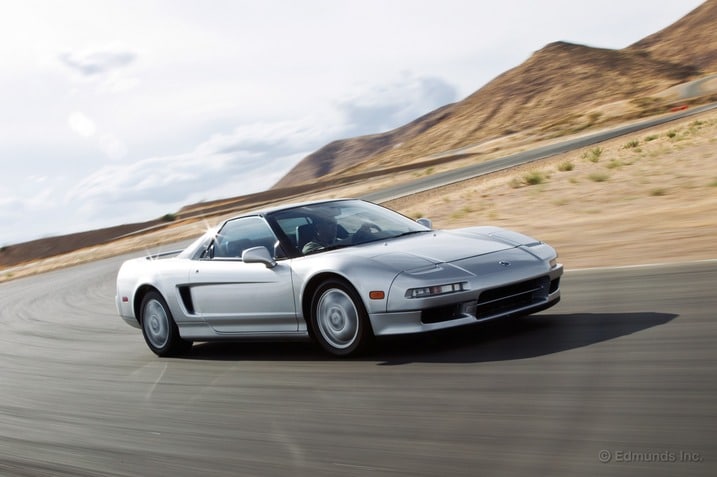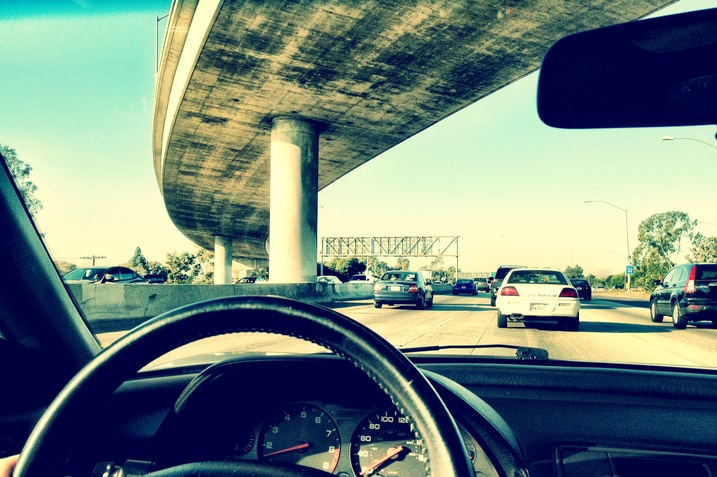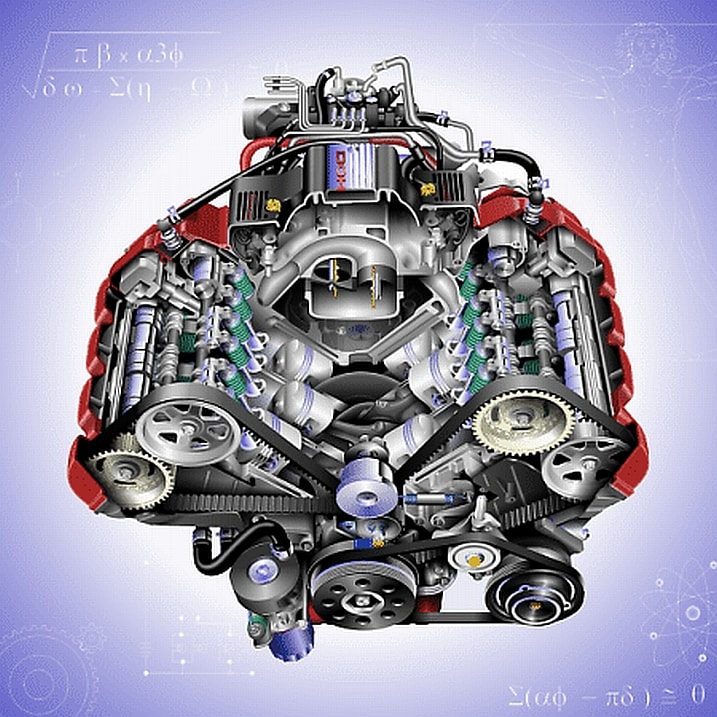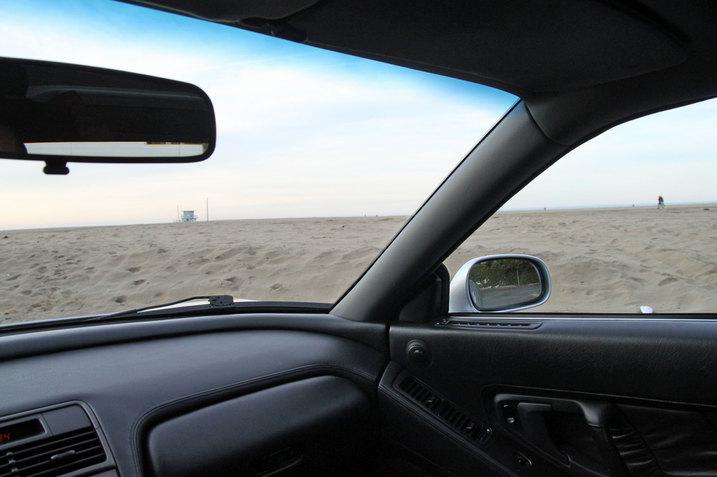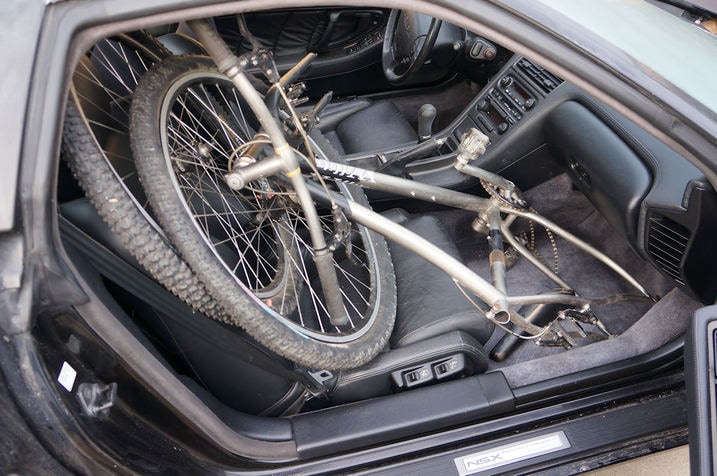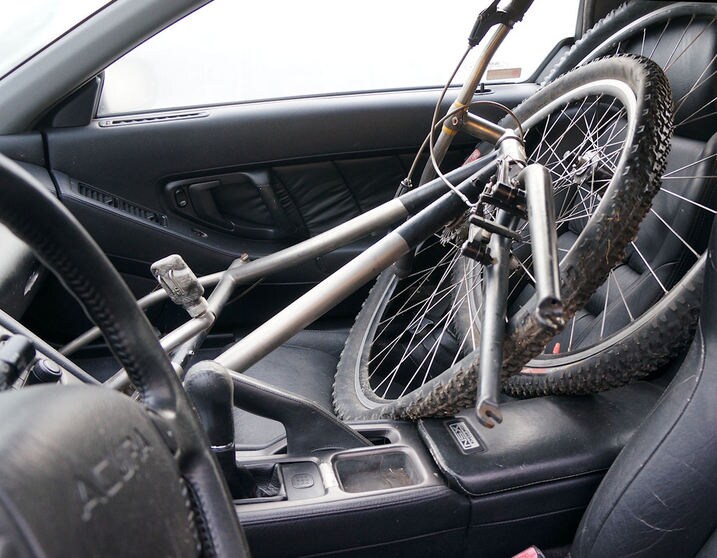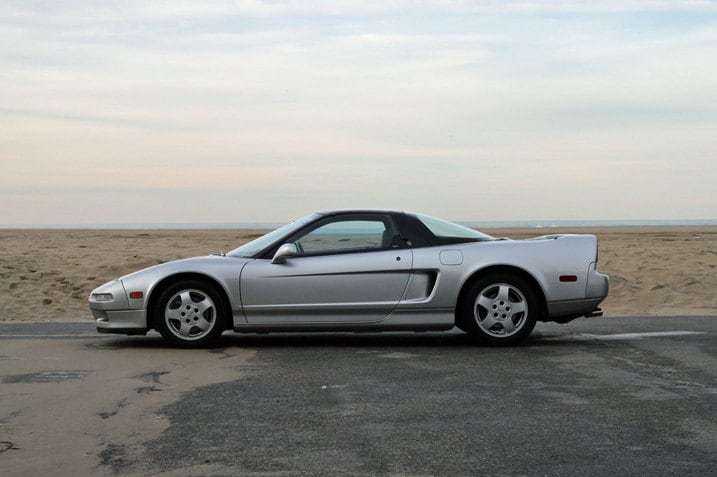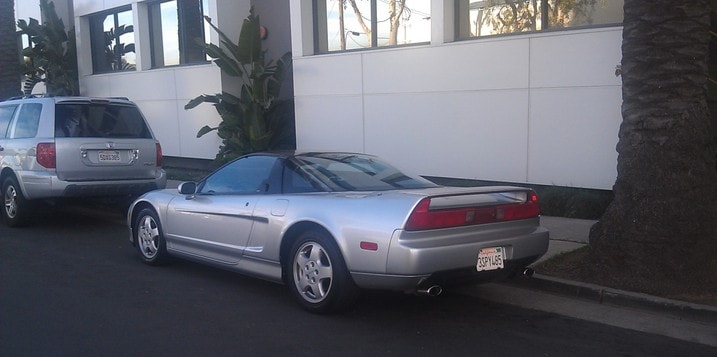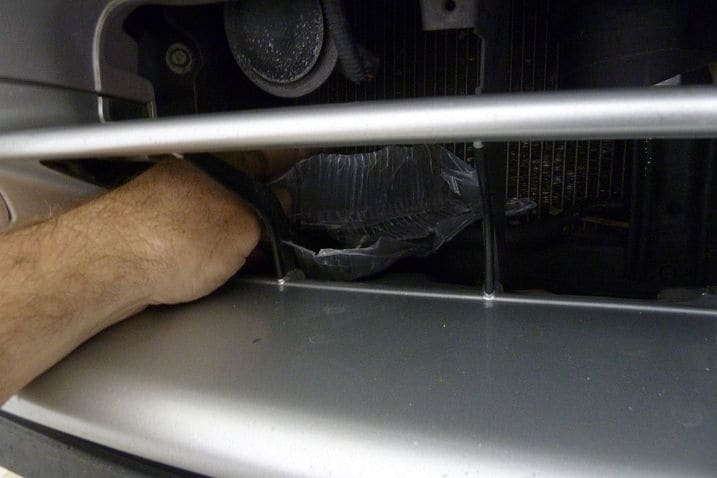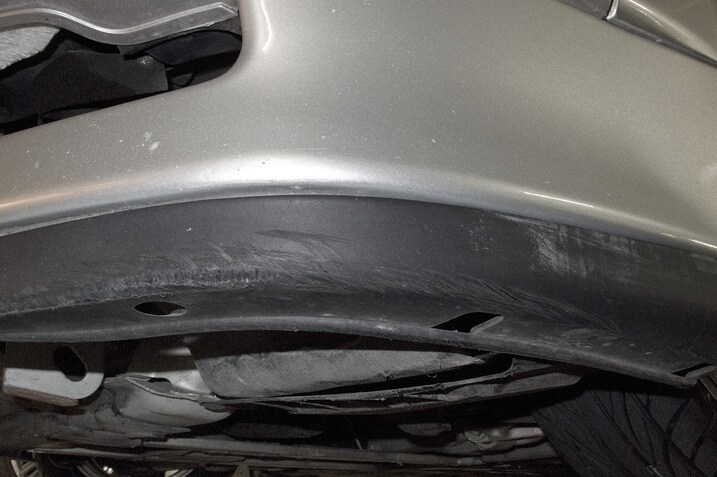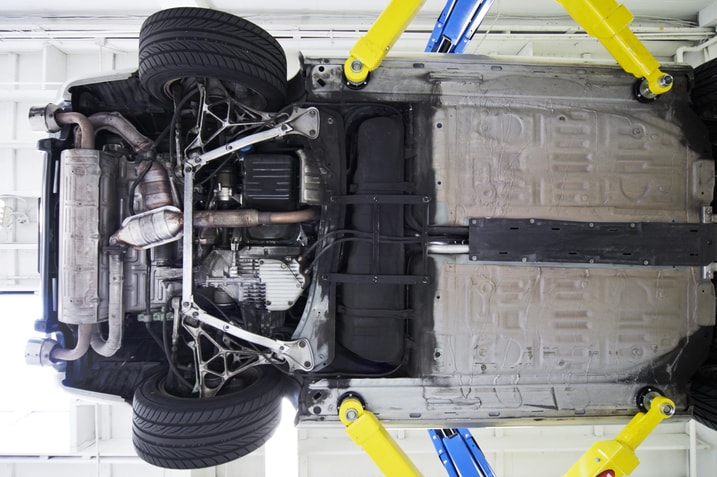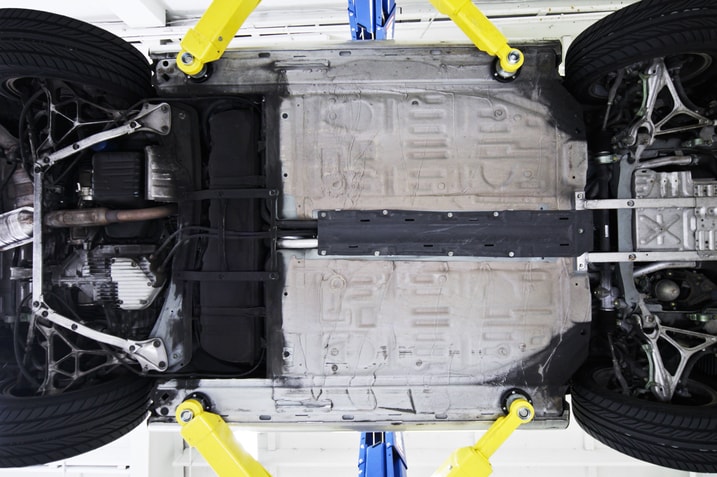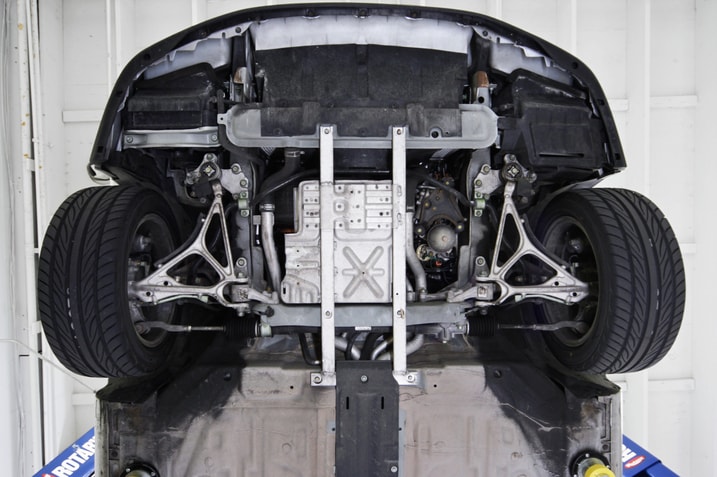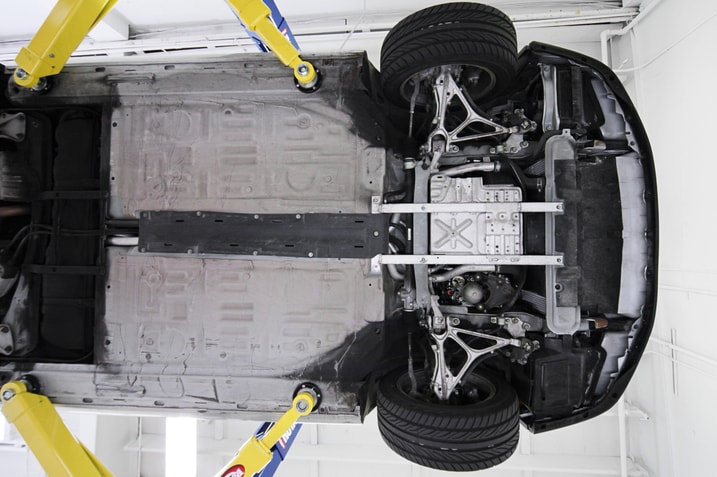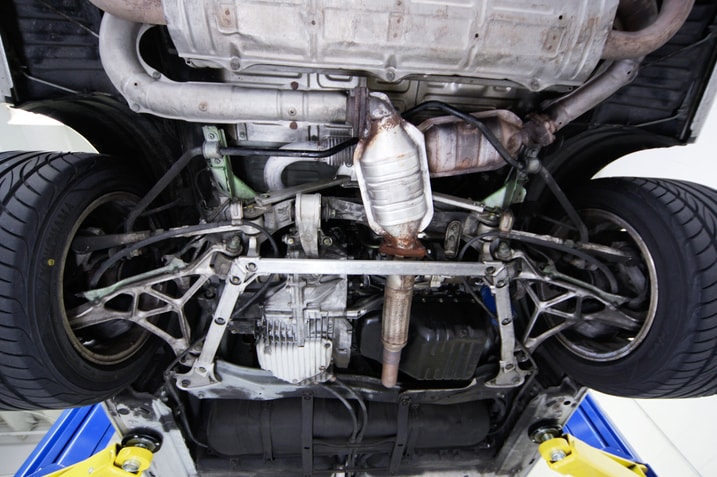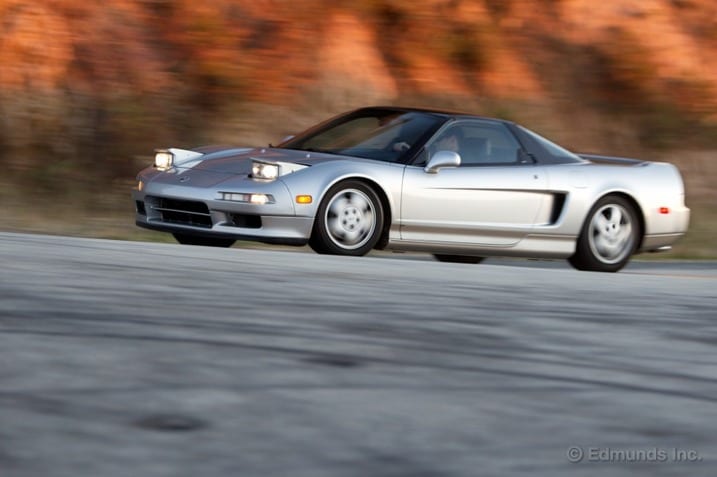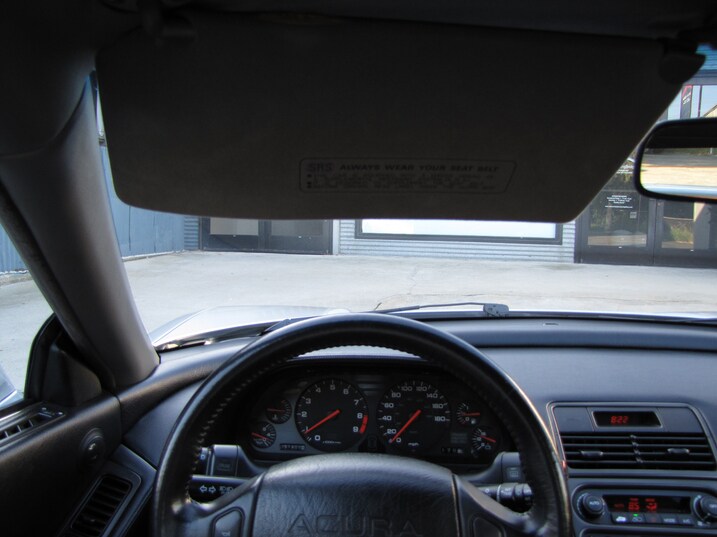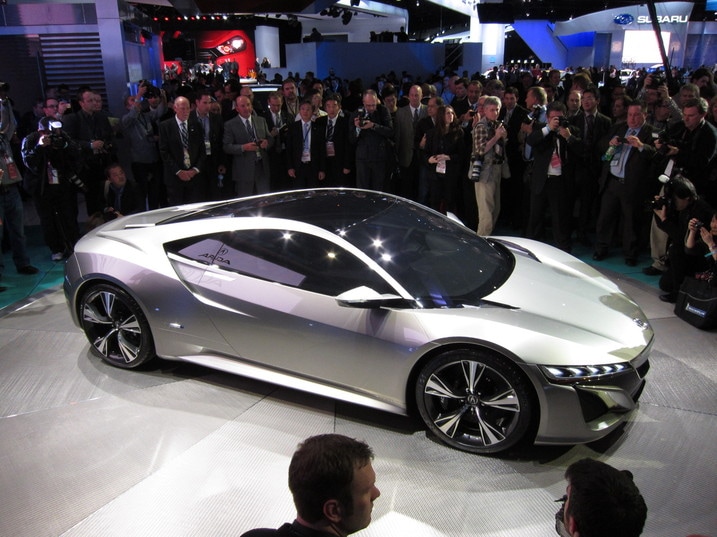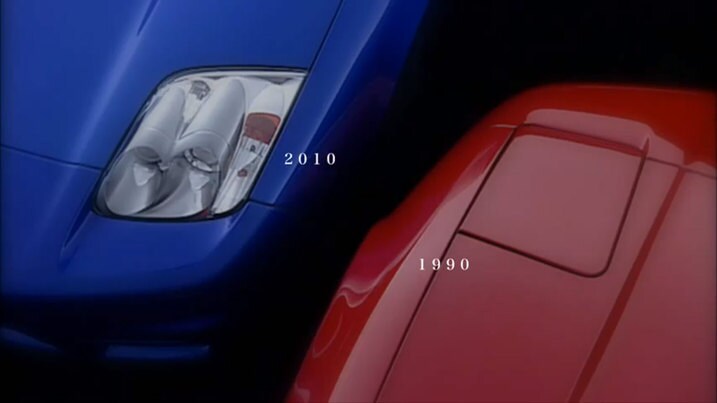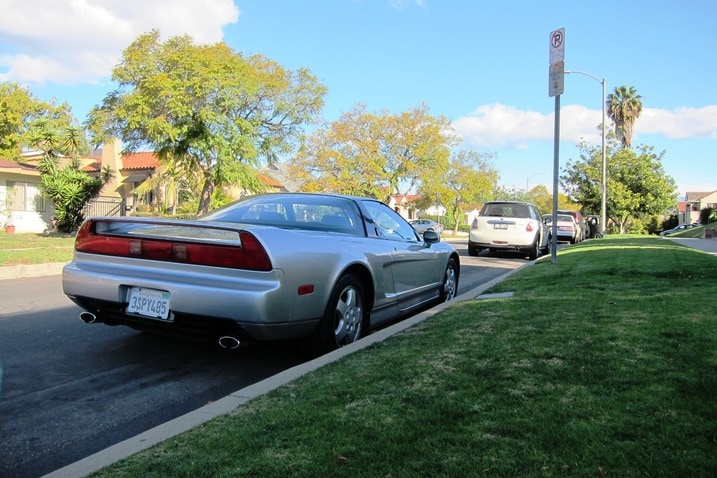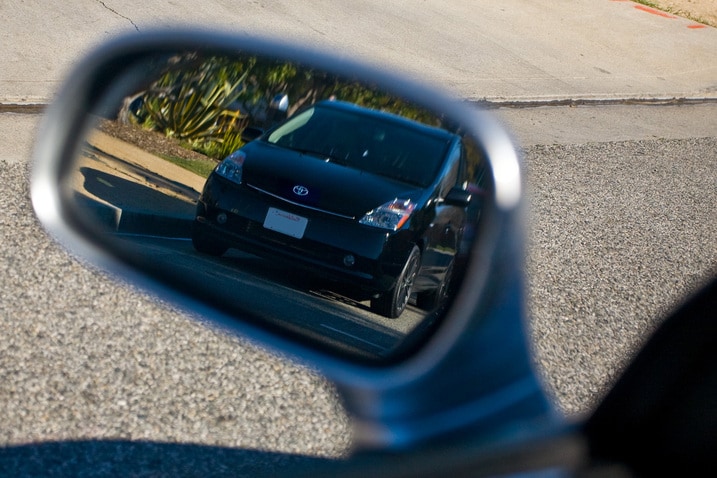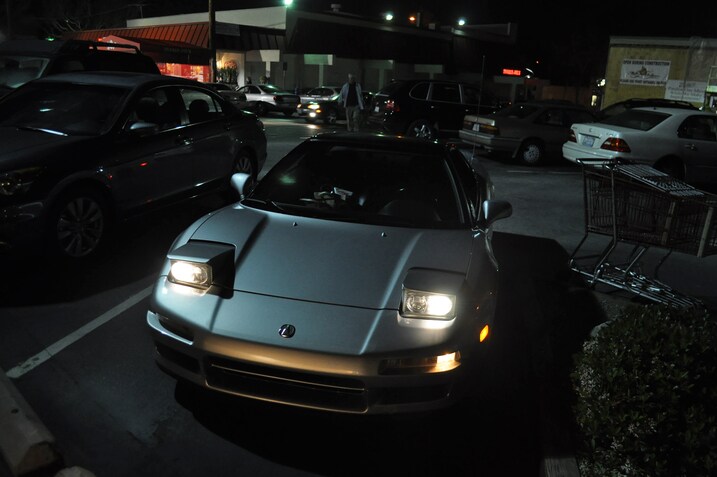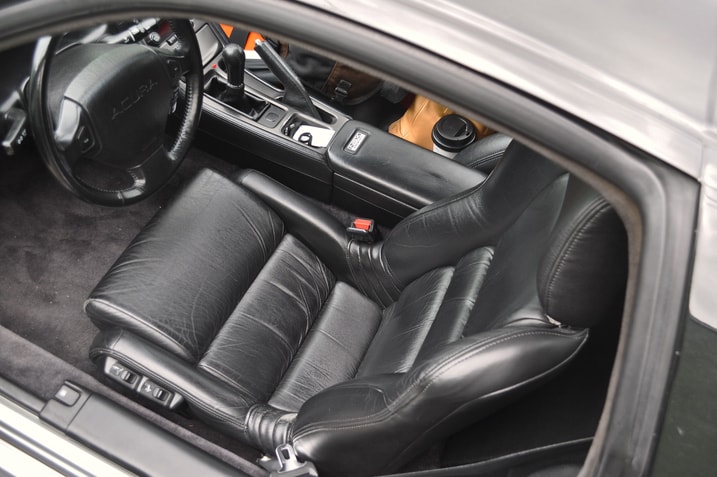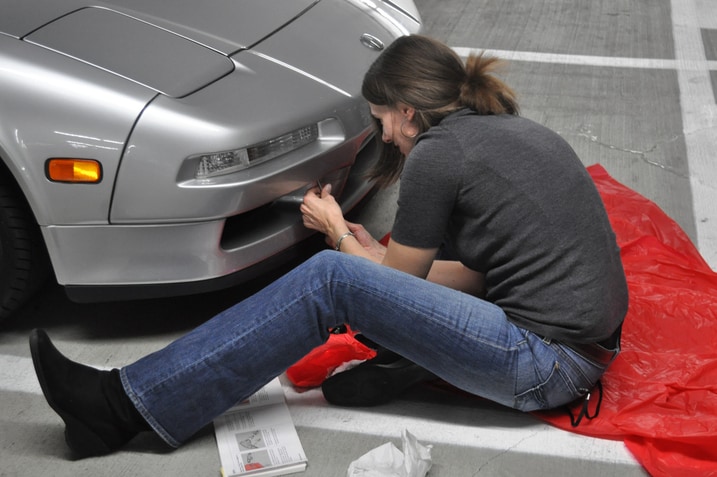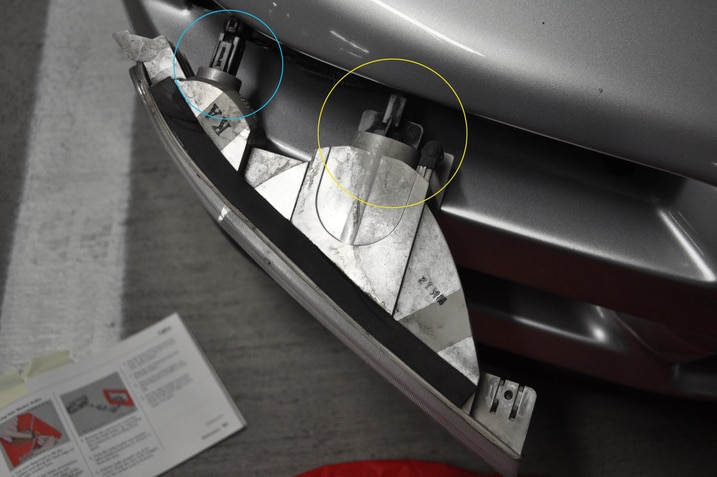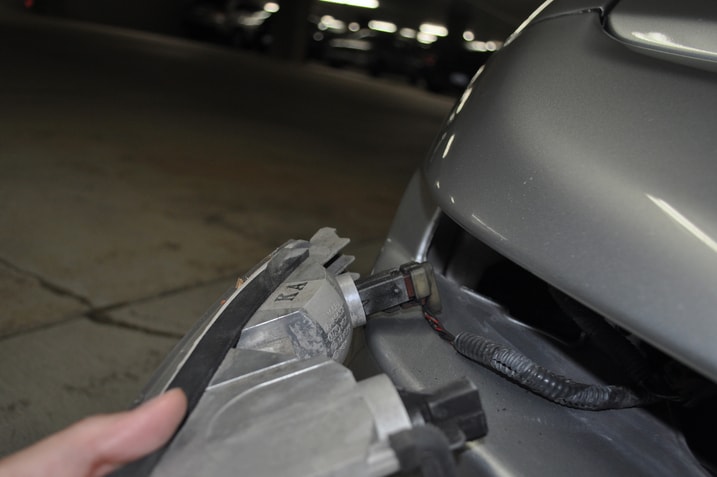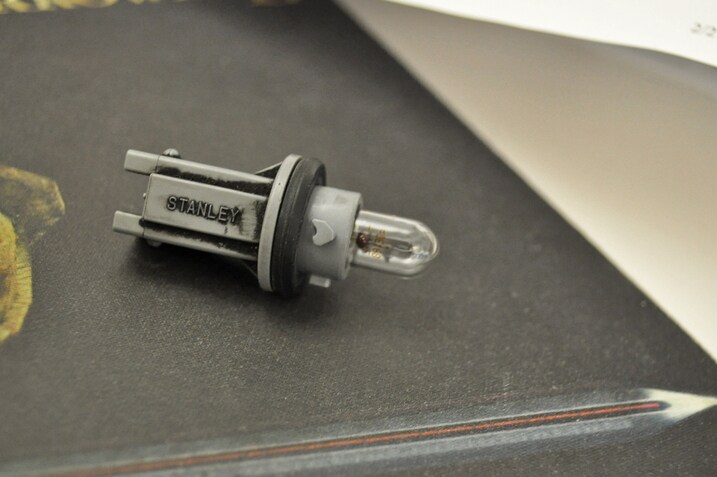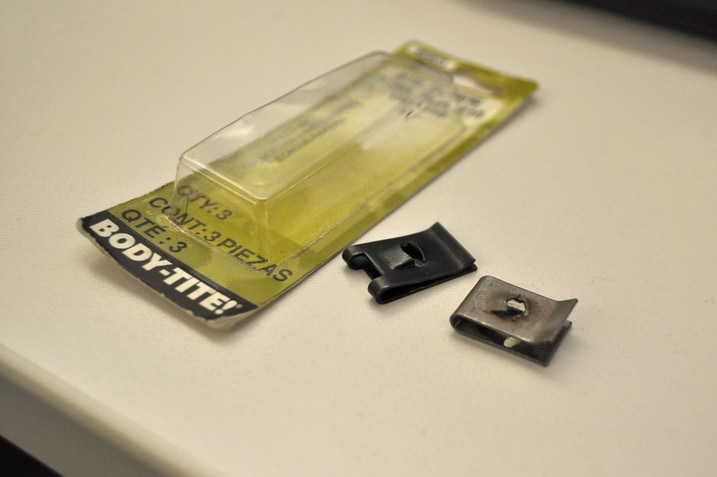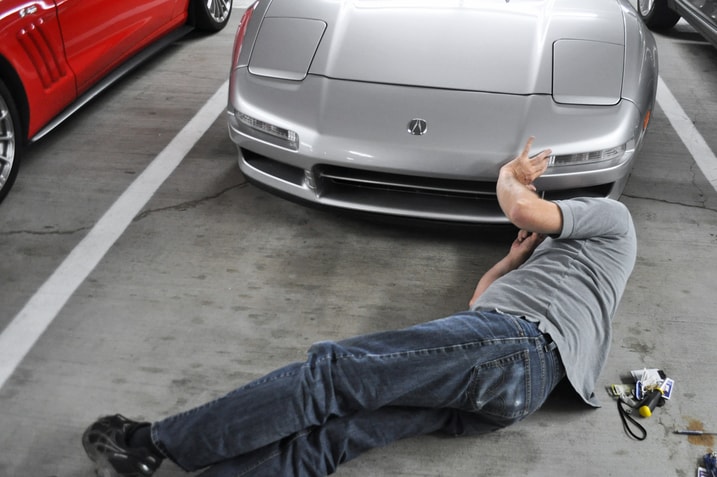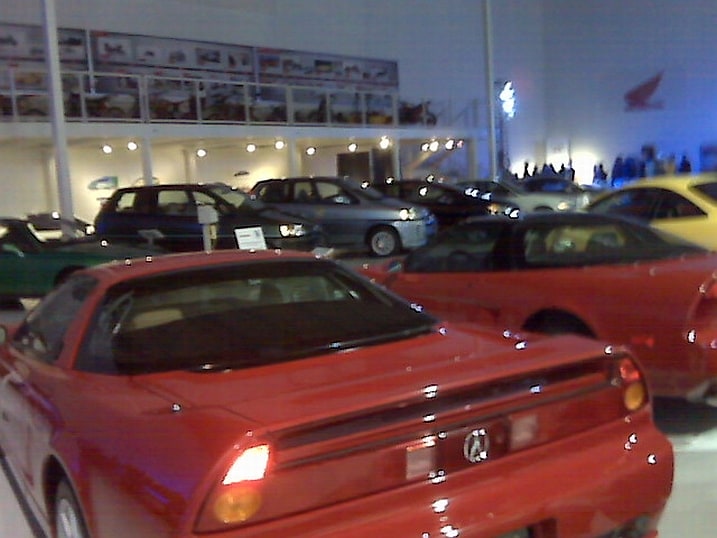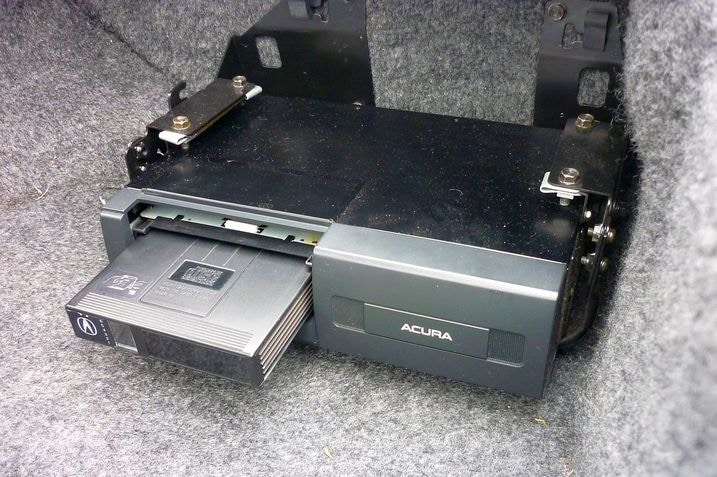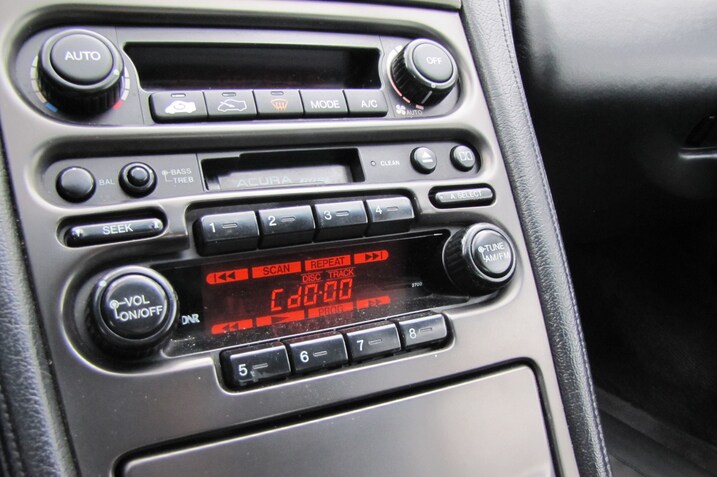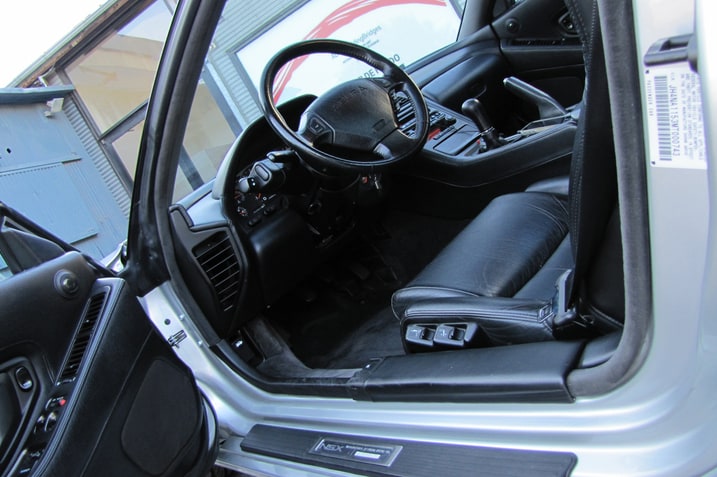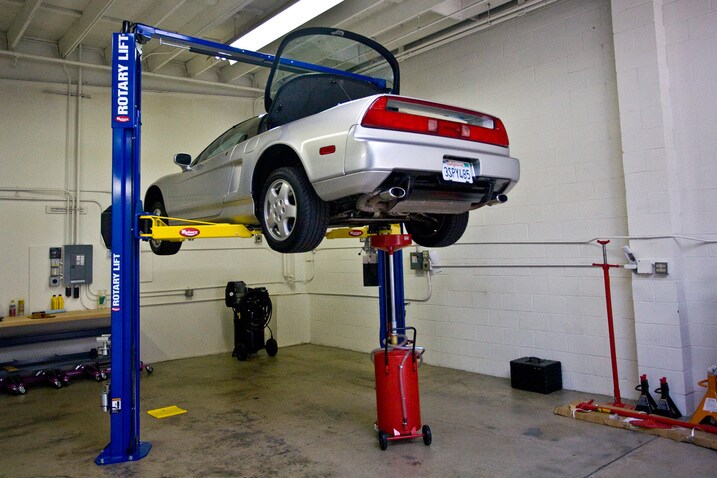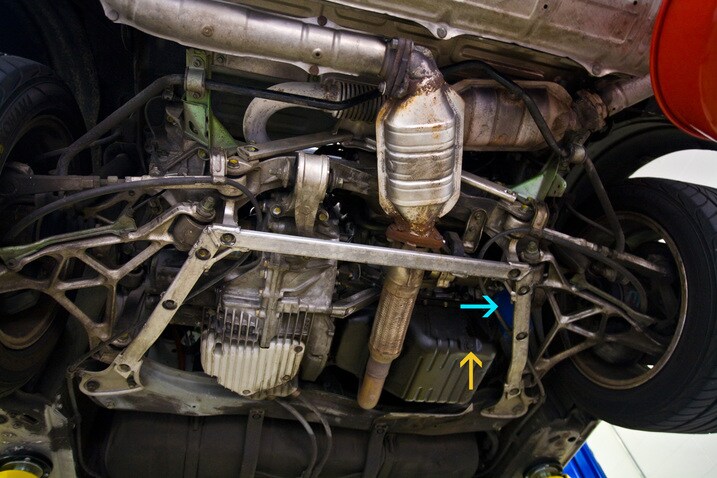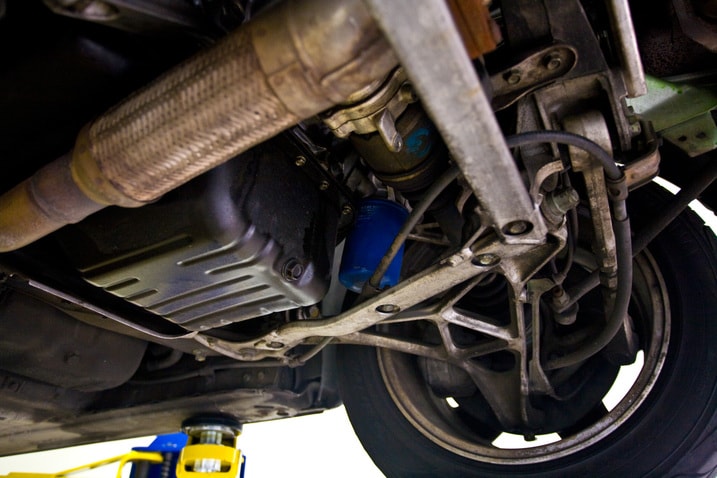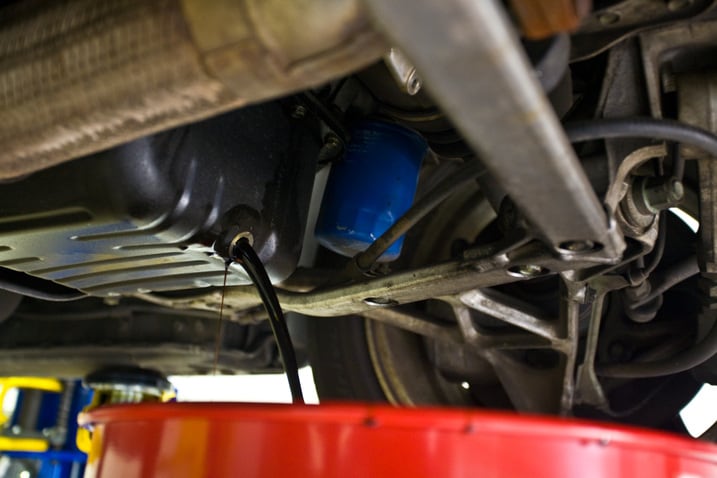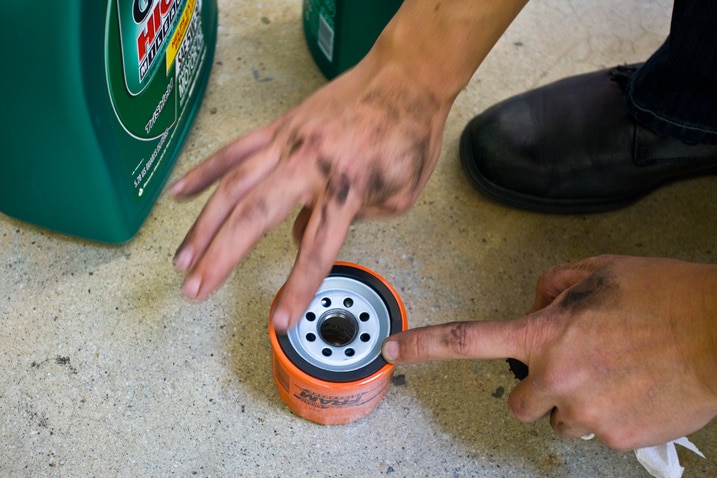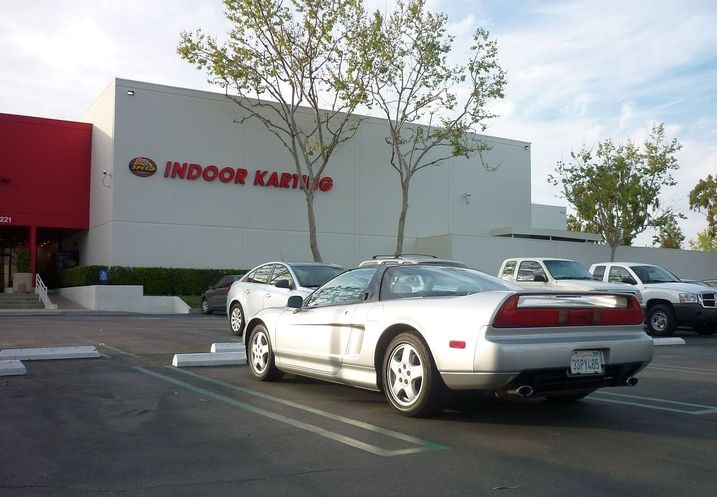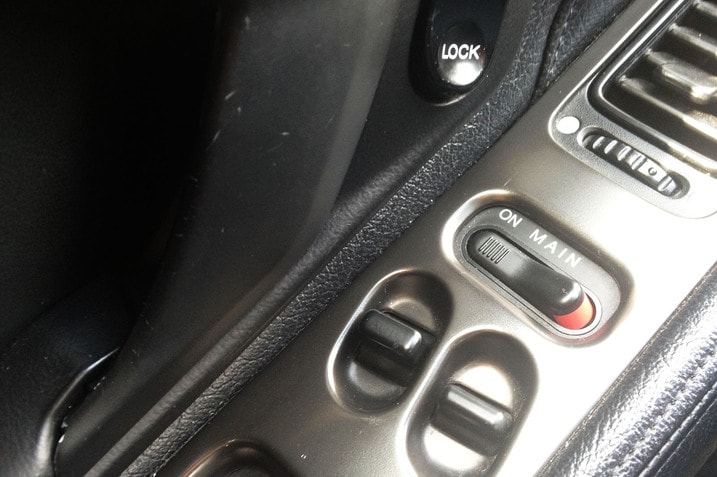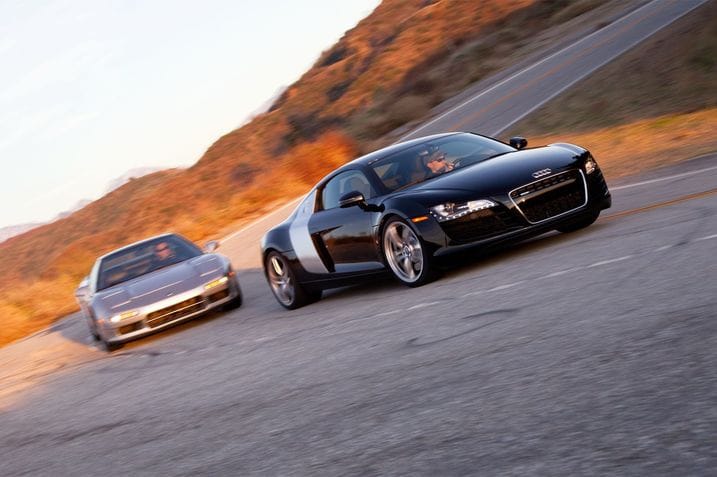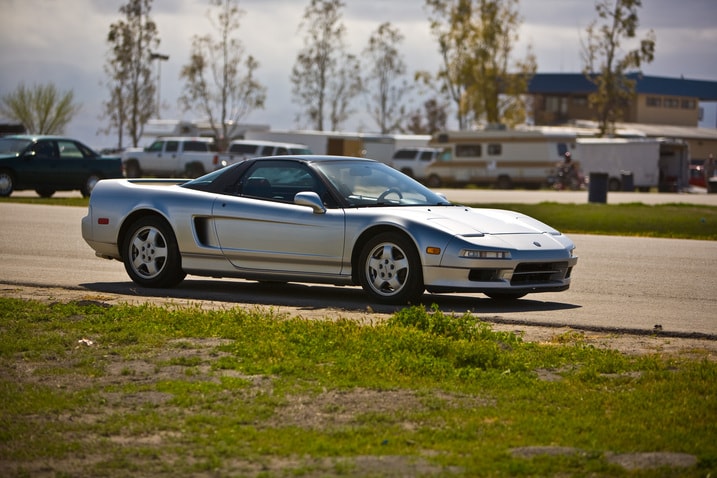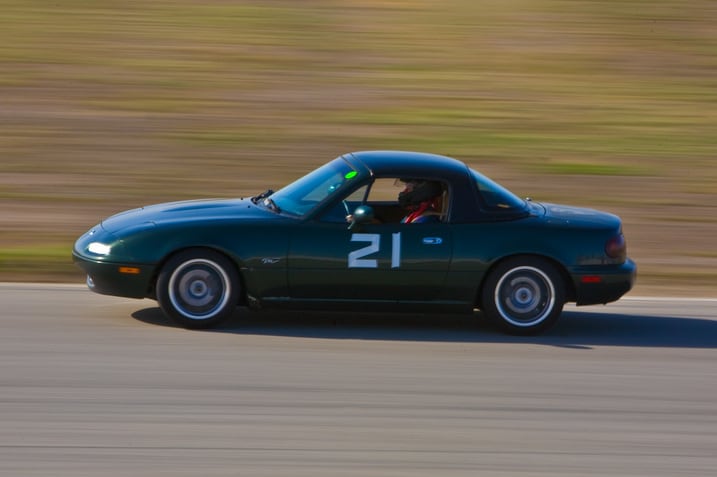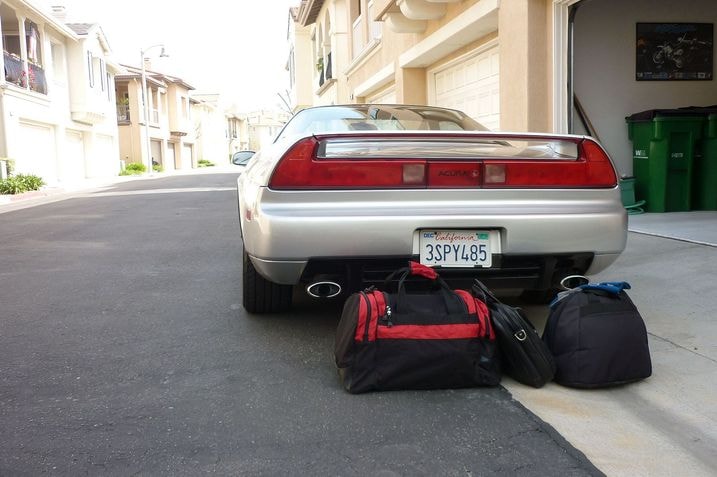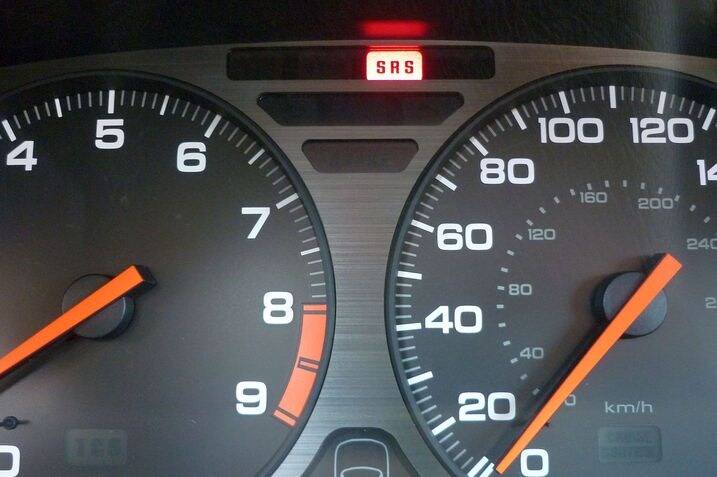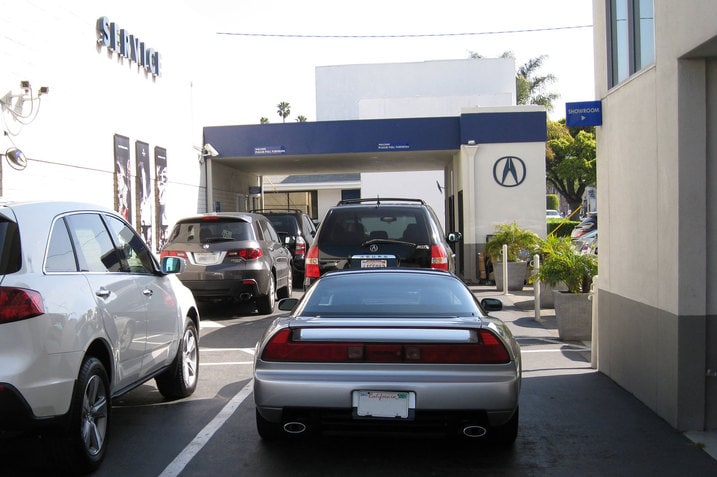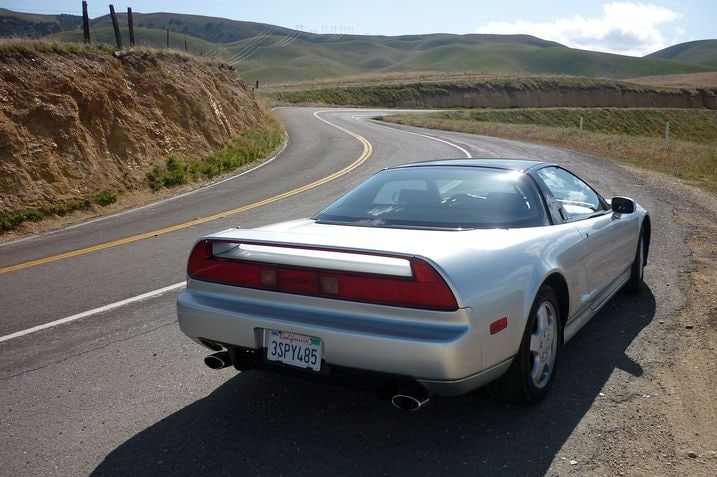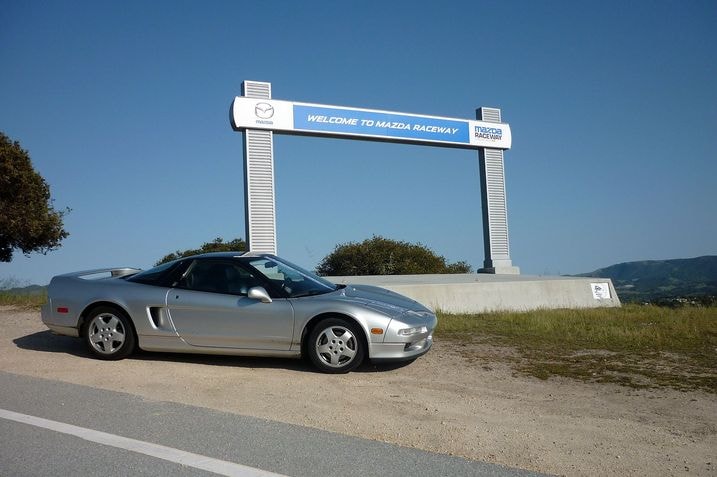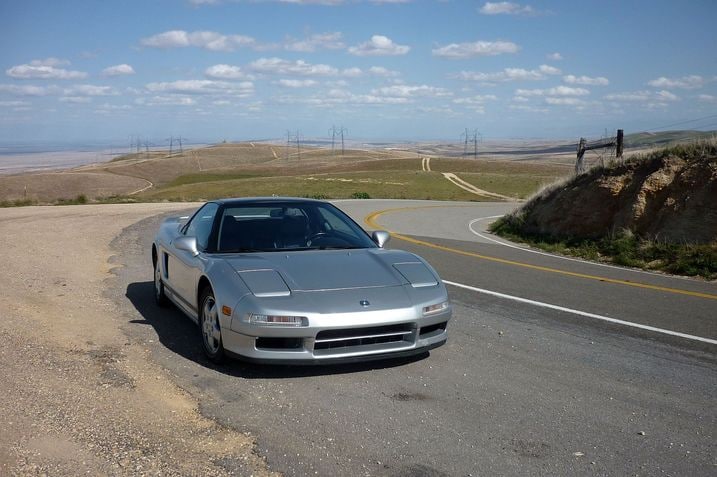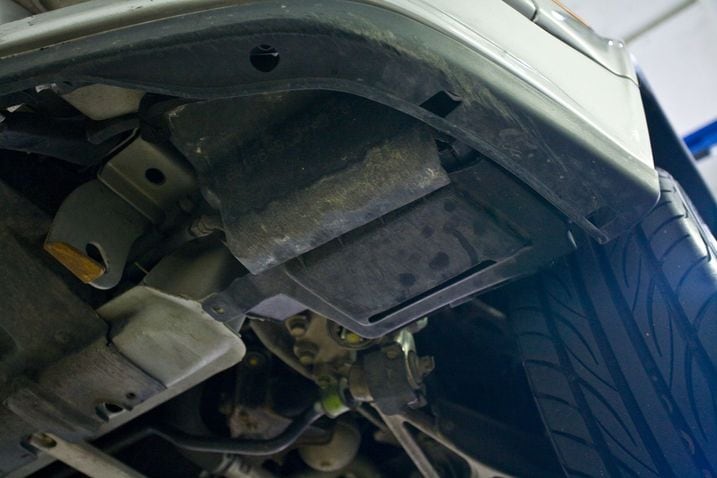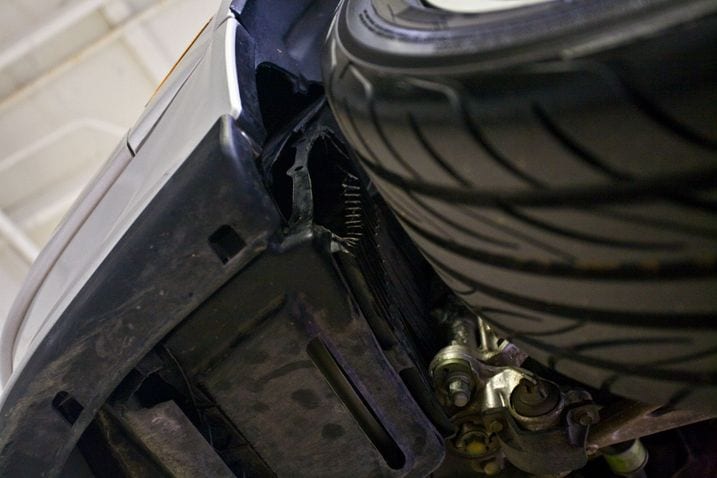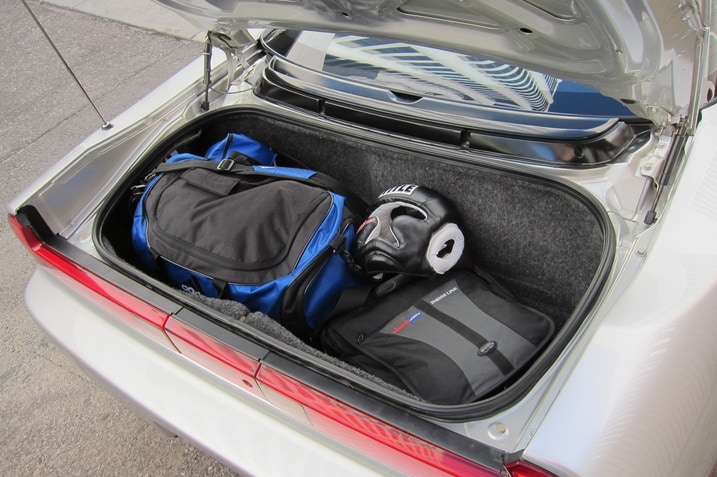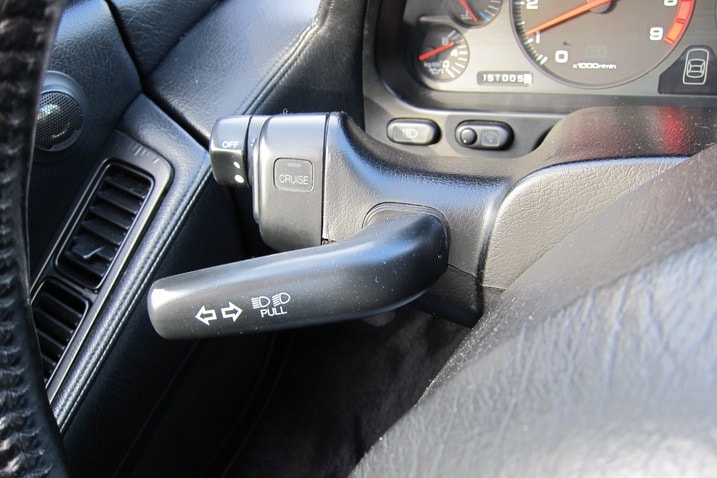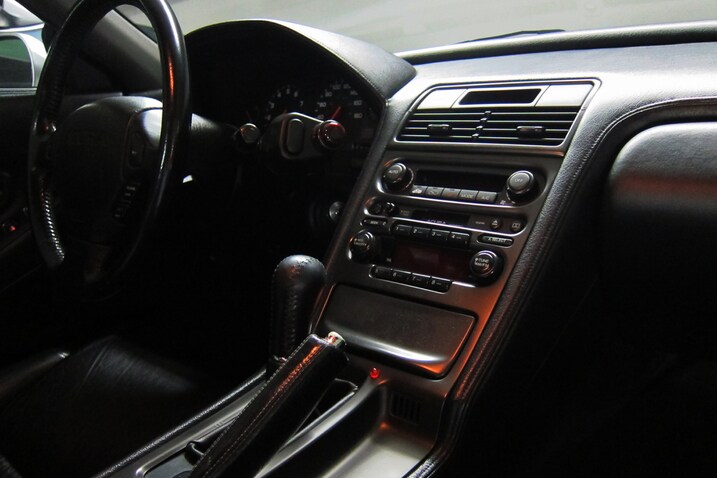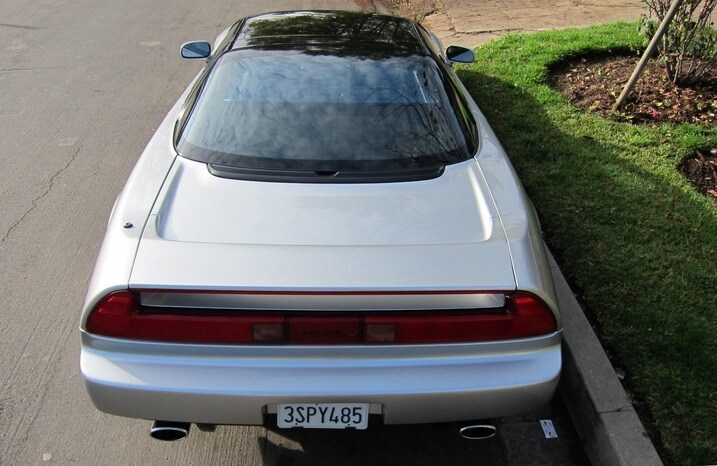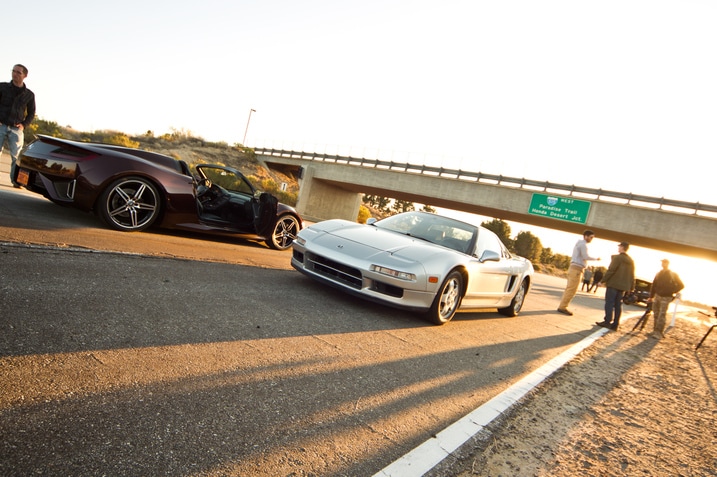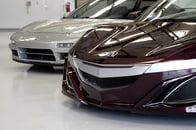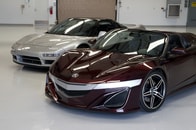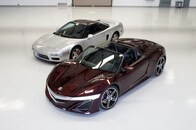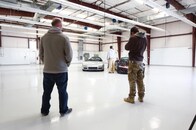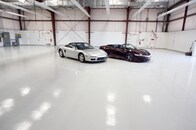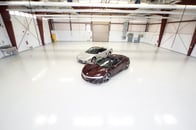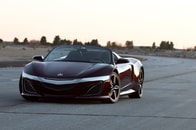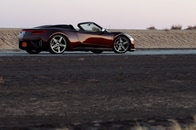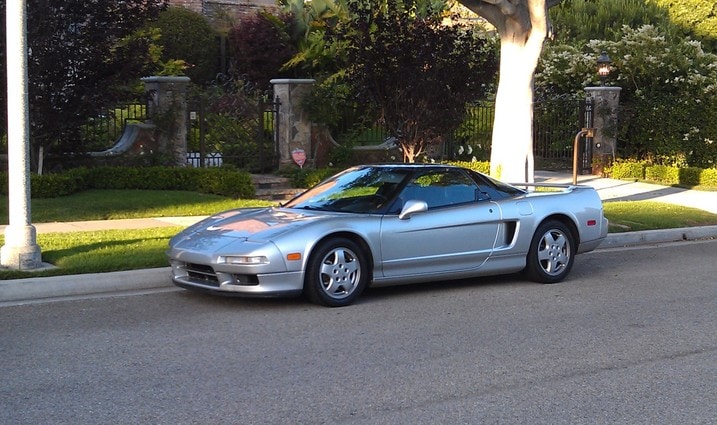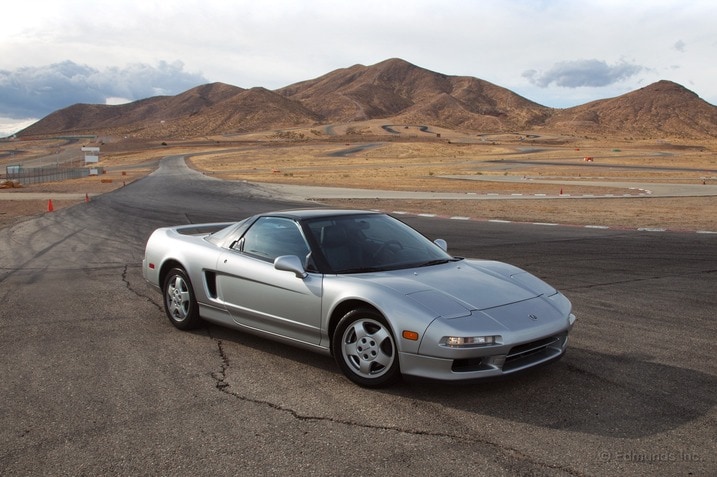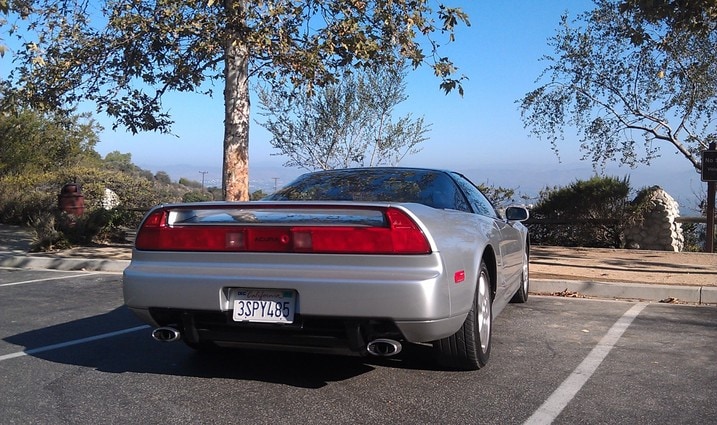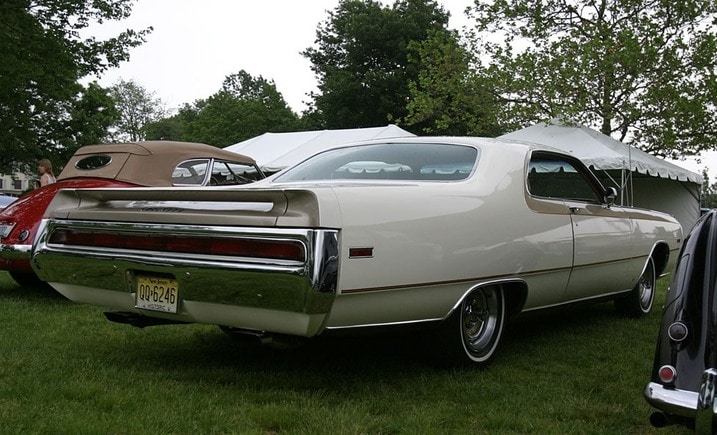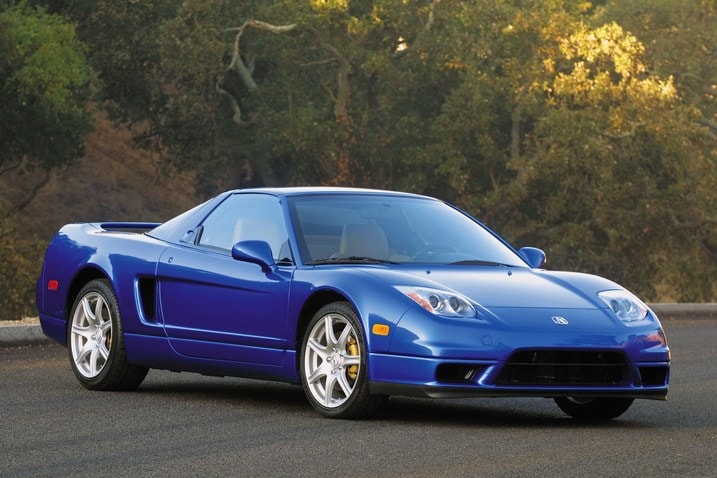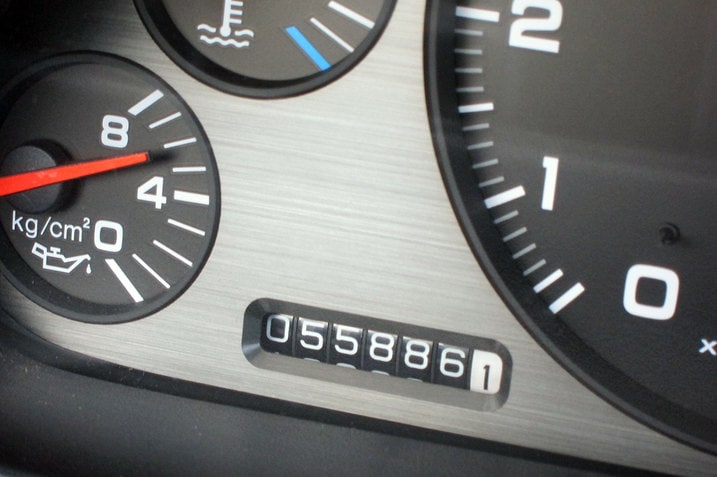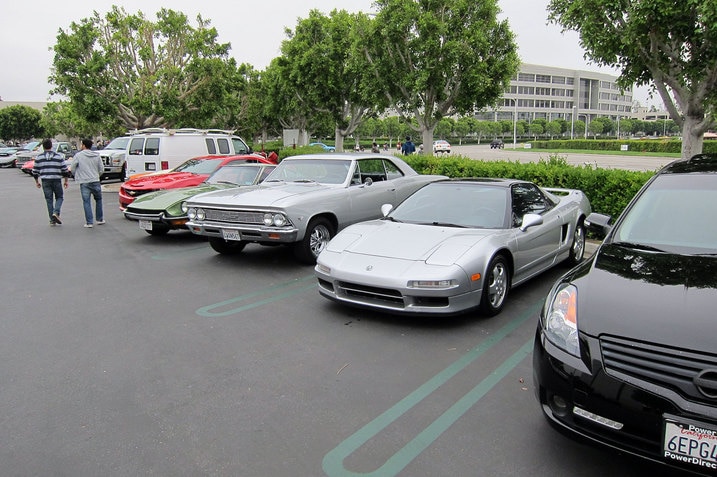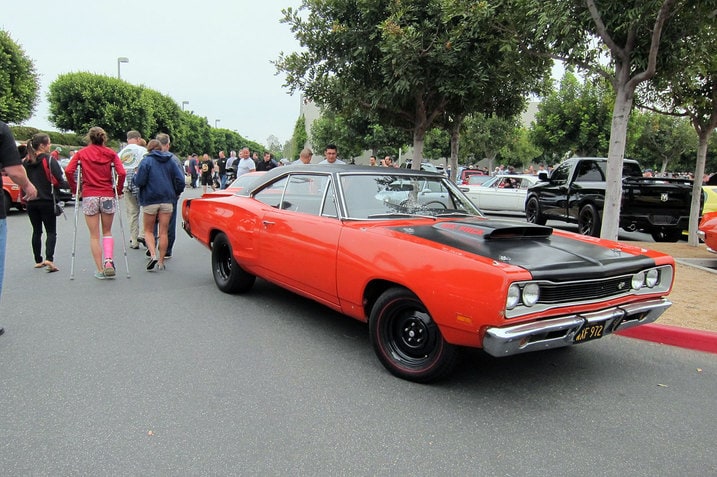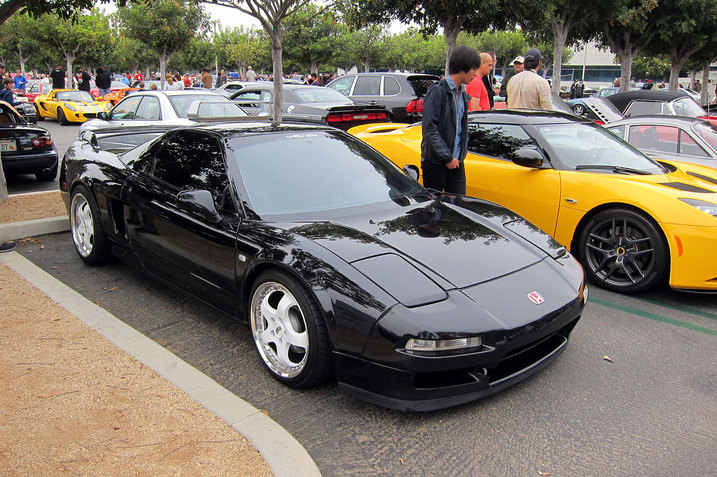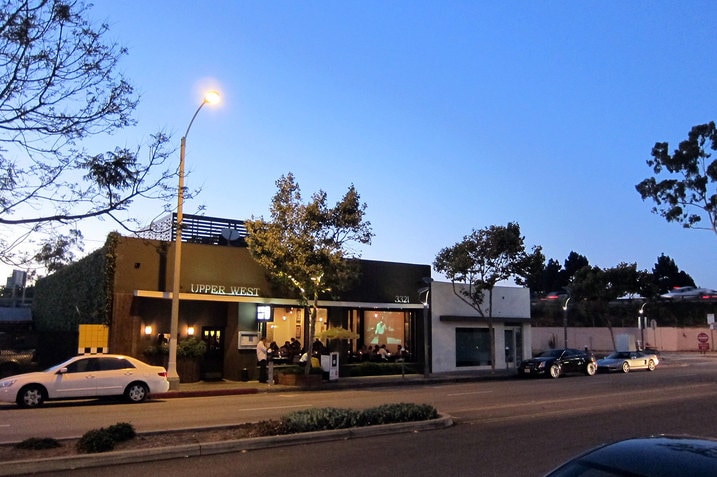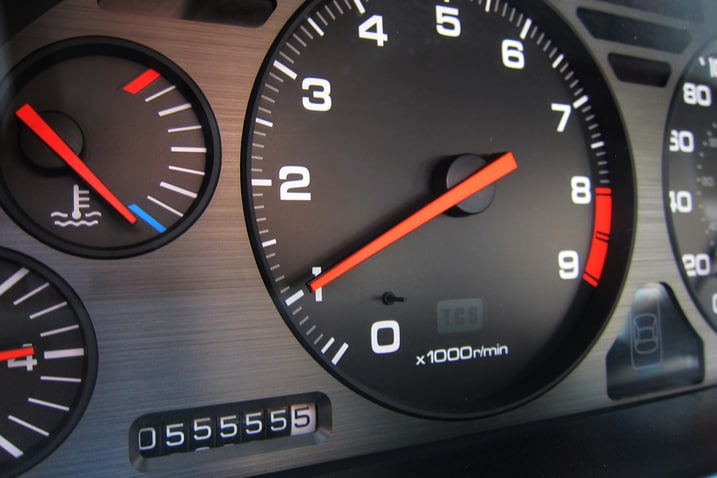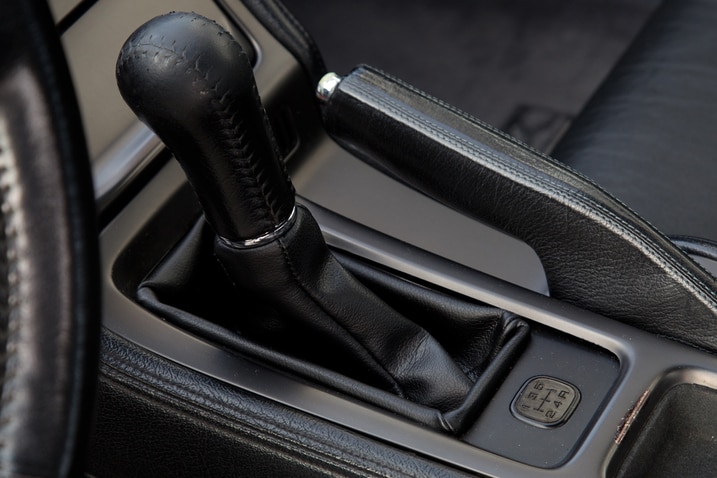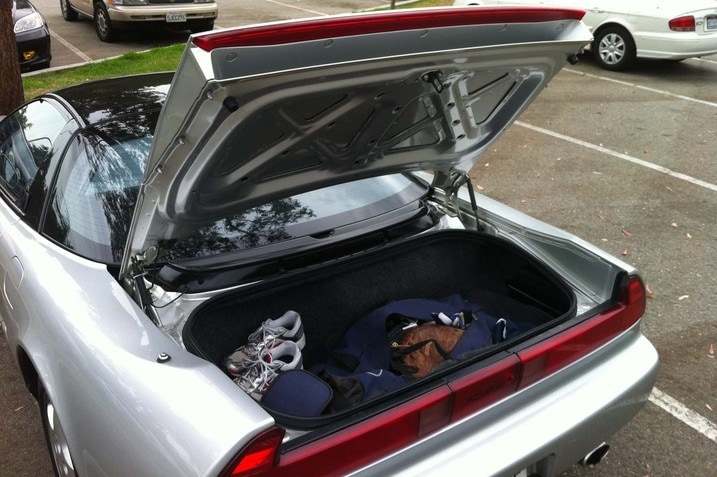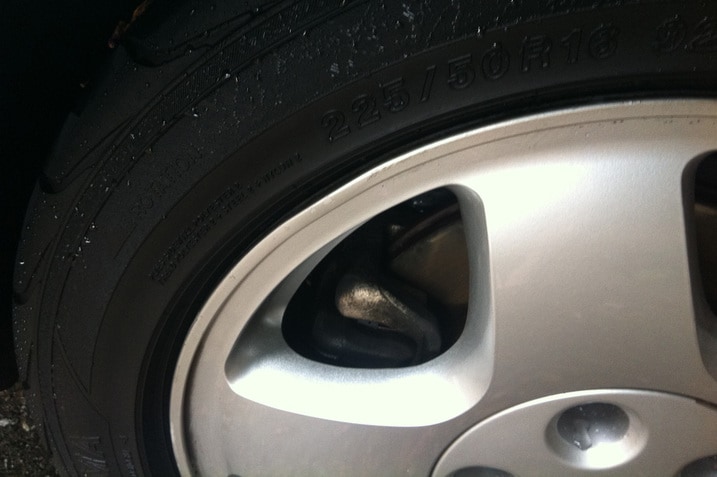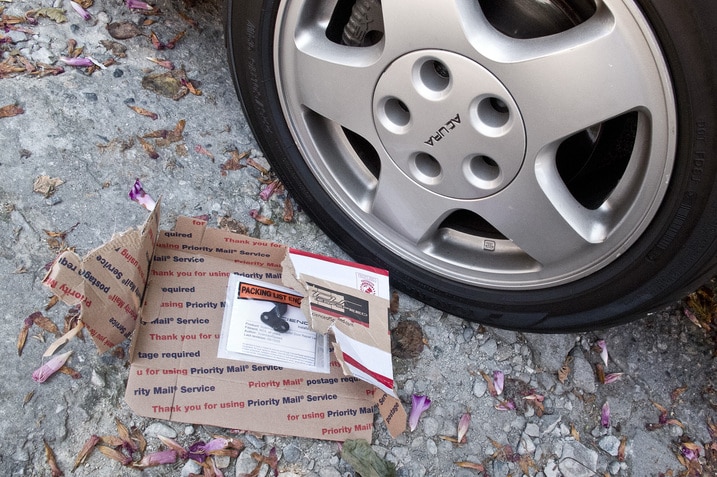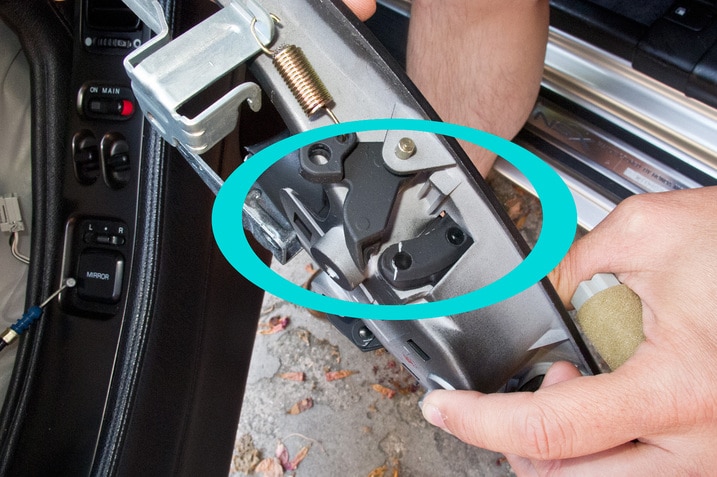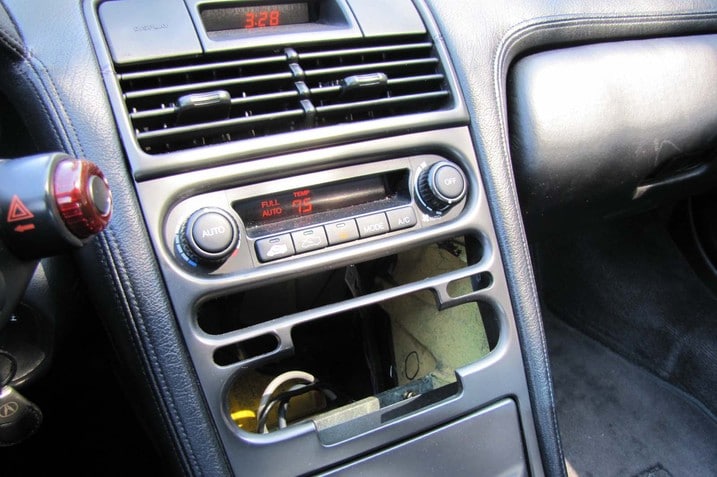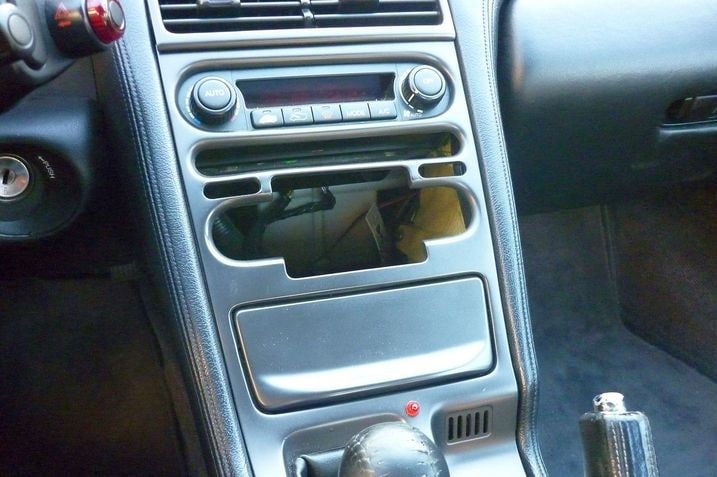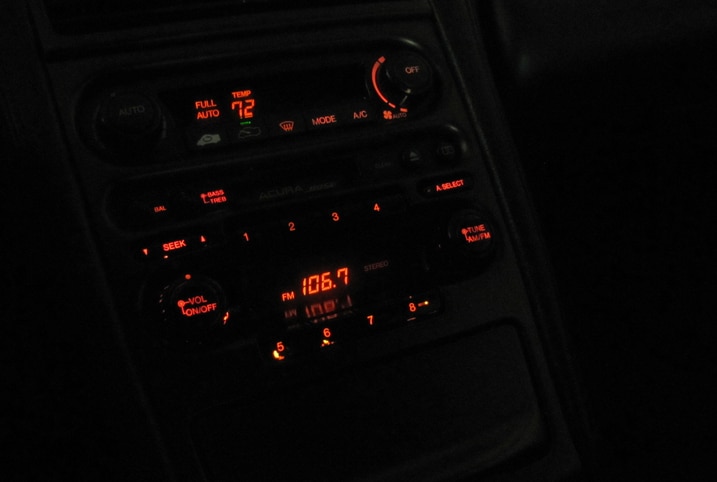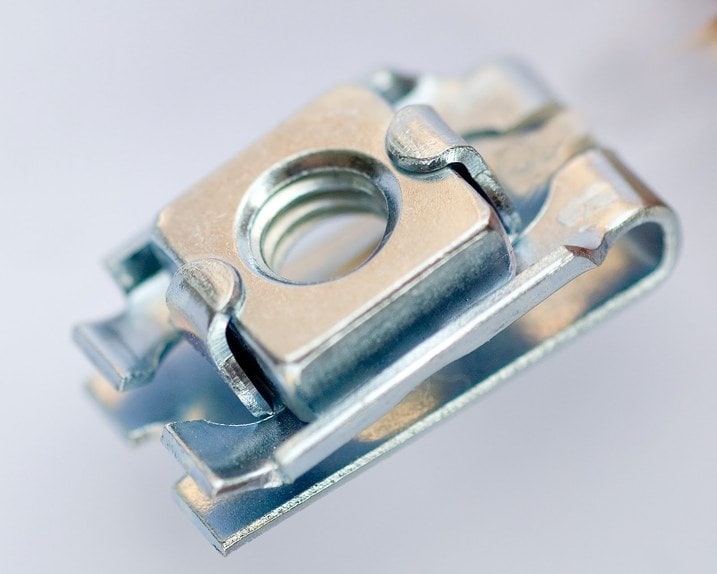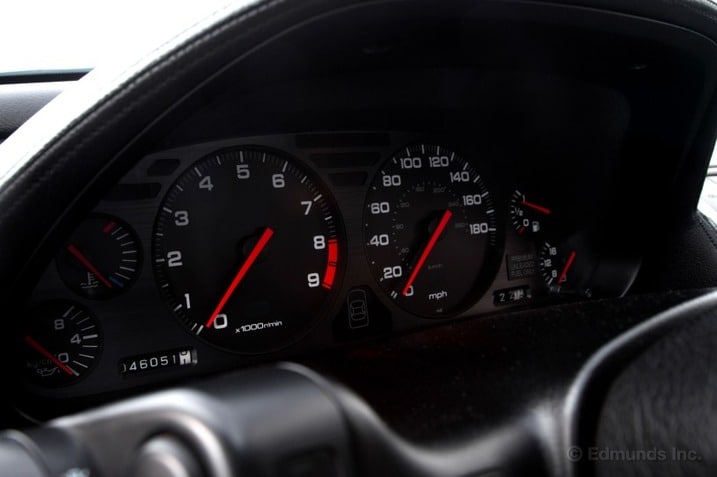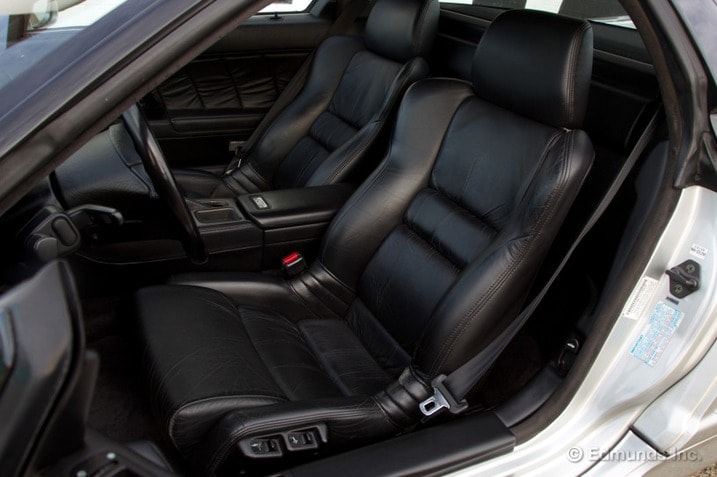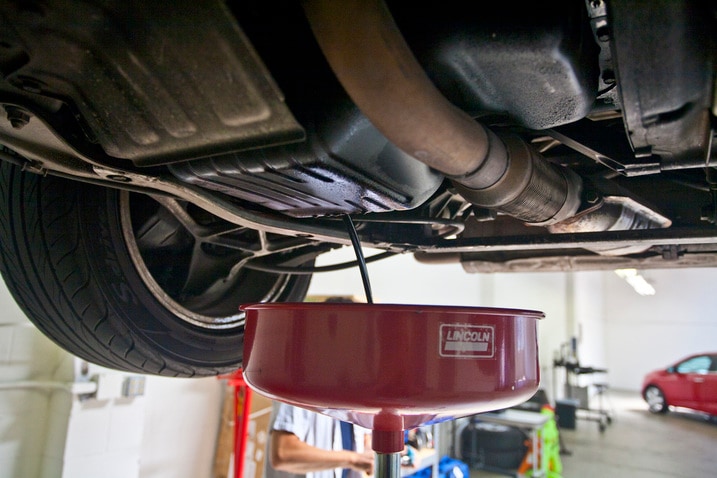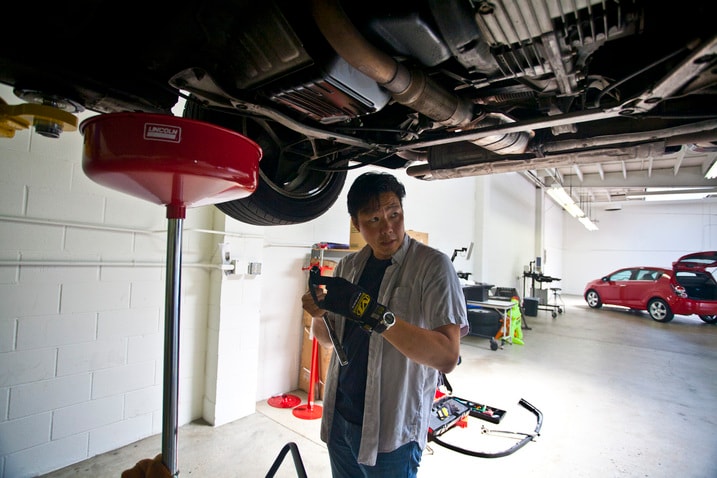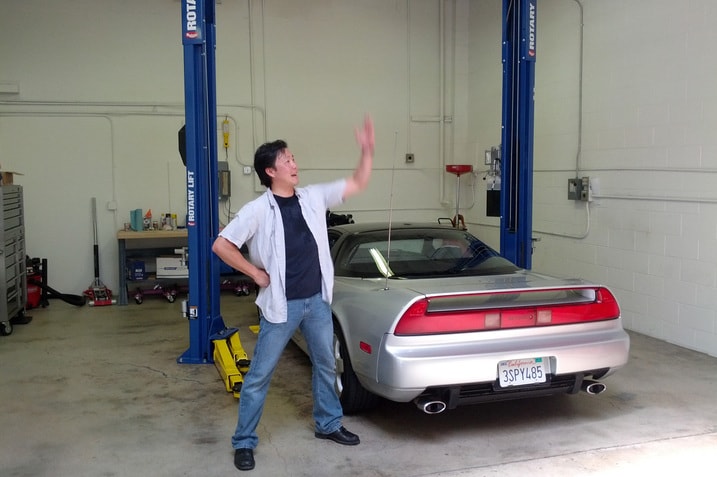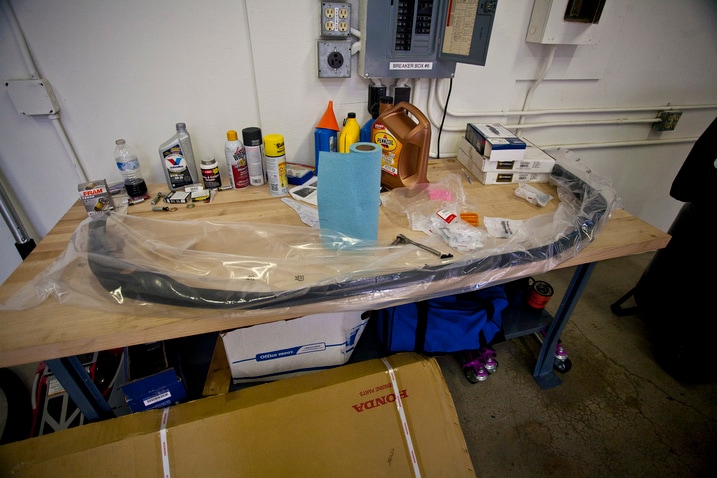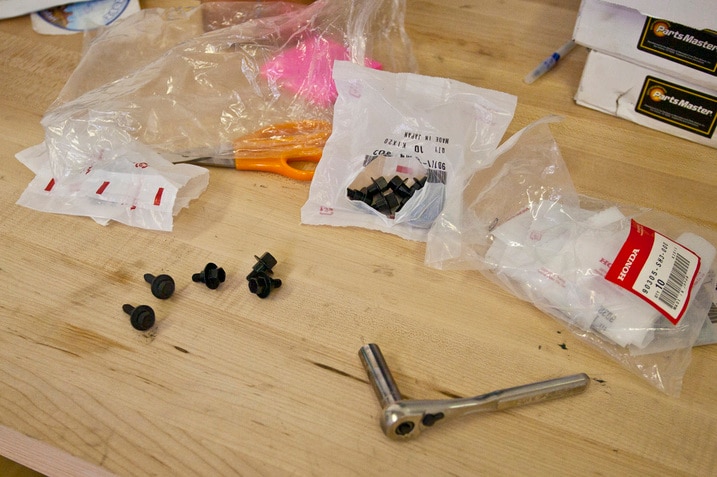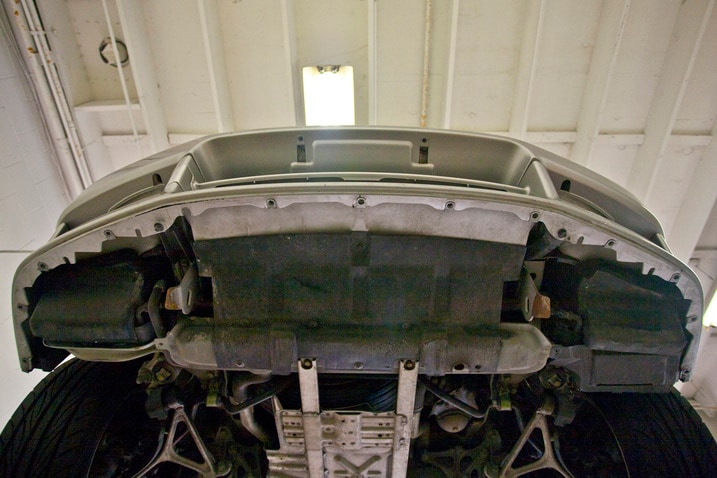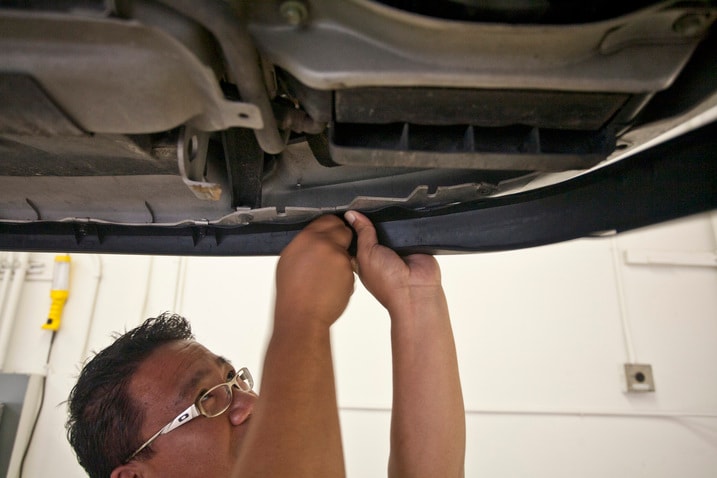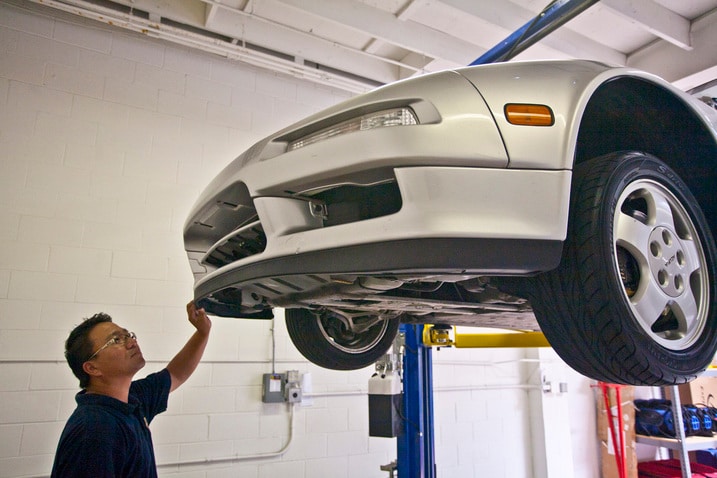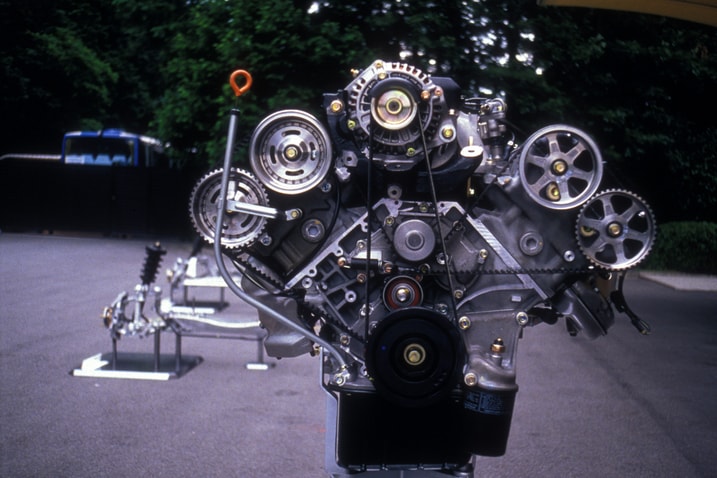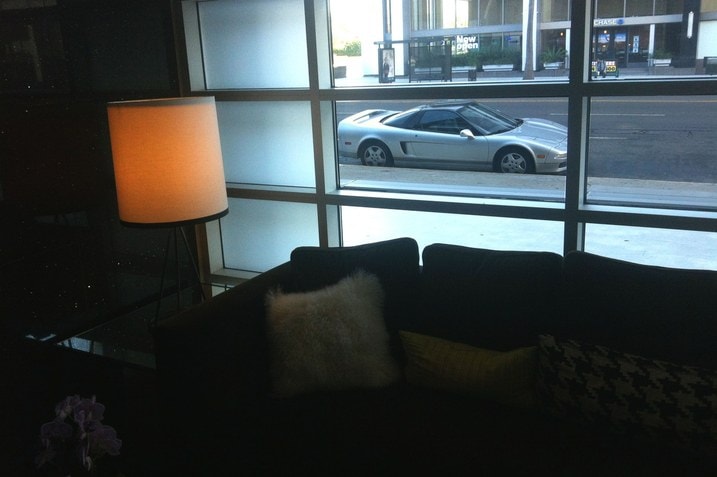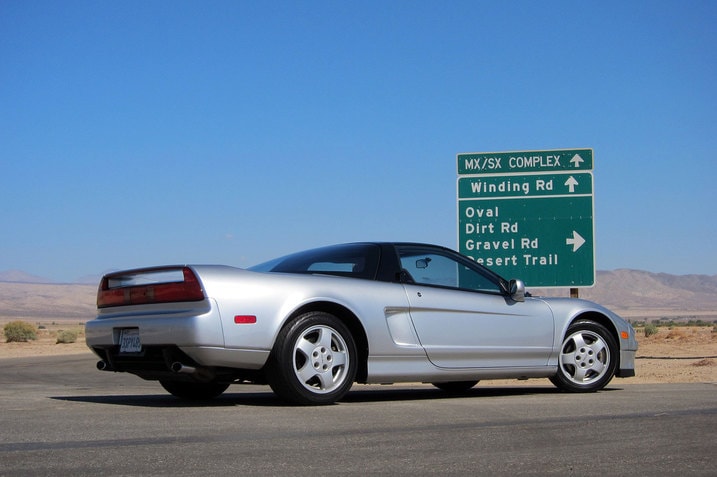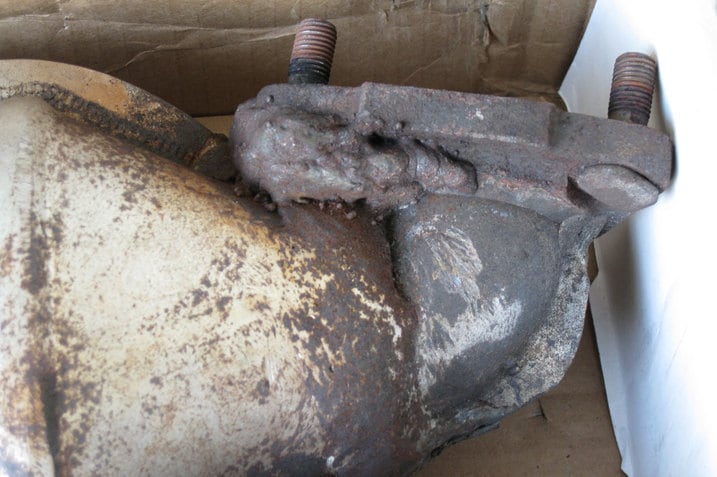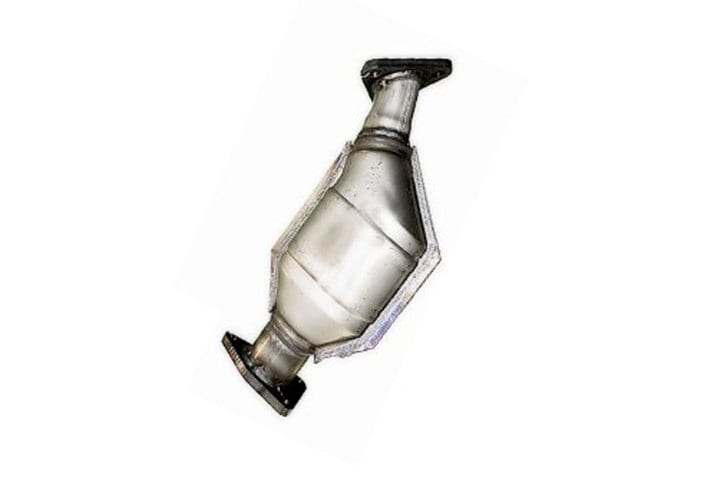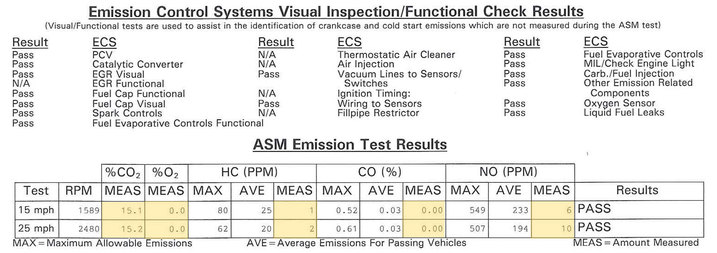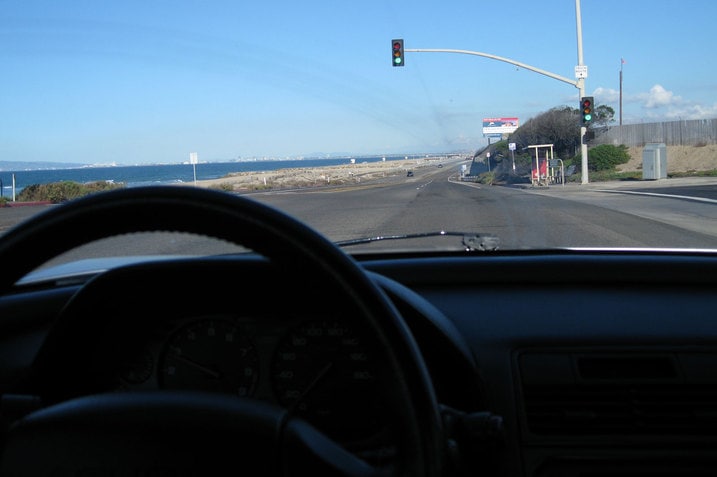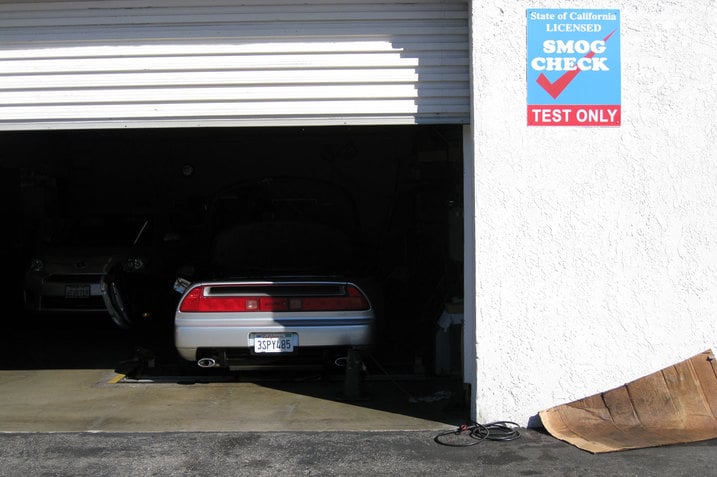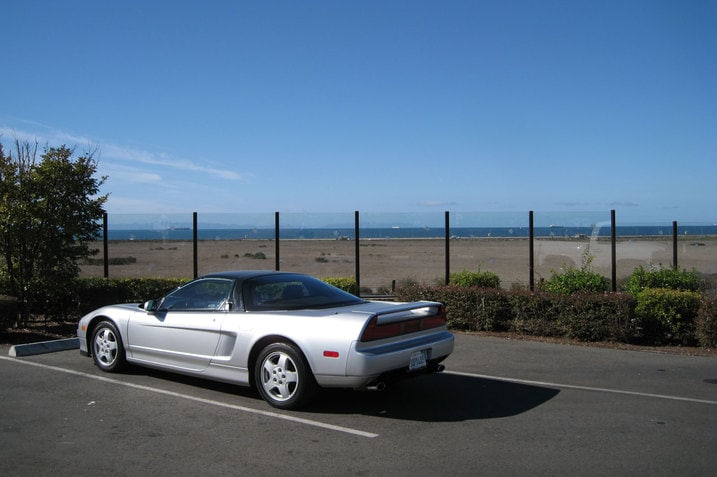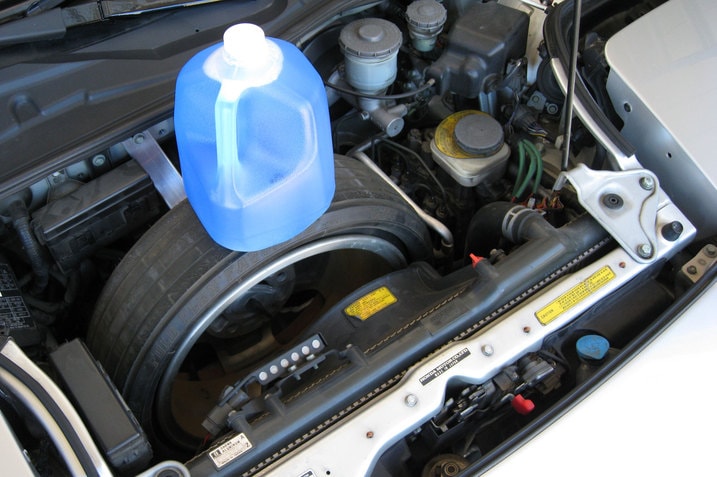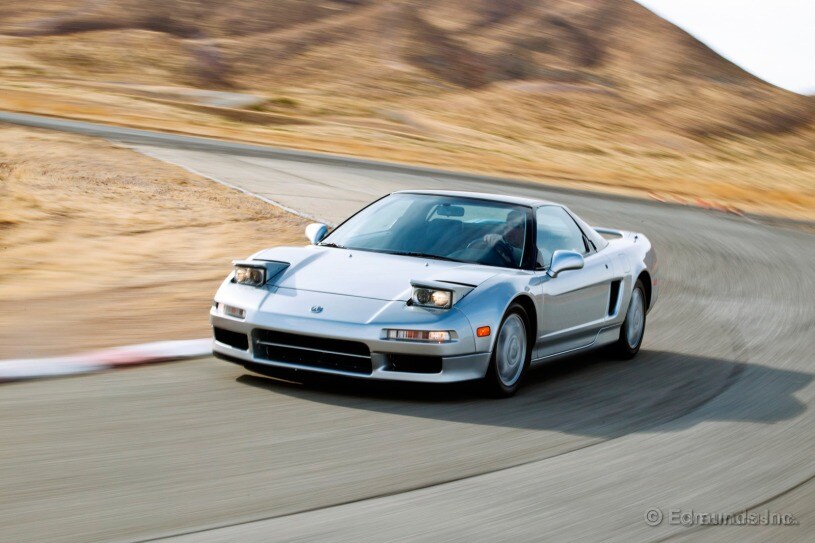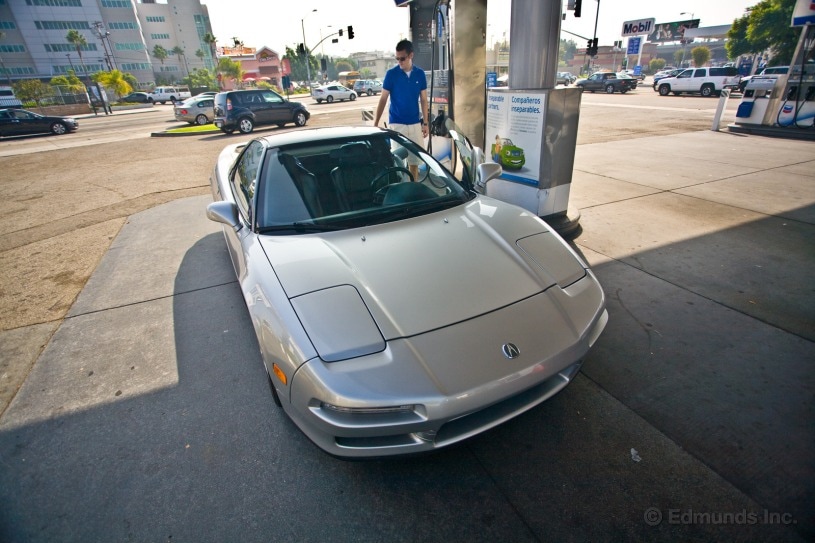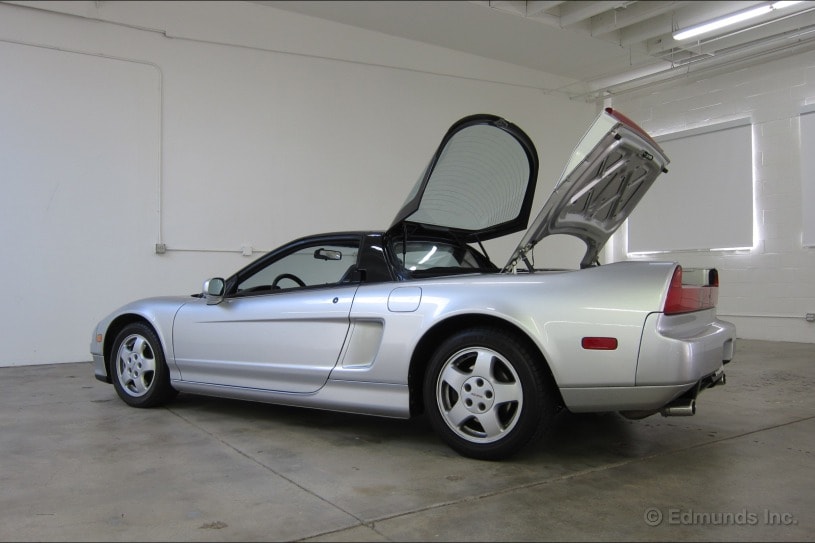1991 Acura NSX Long Term Test: What's It Like to Live With?
Read the latest updates in our long-term road test of the 1991 Acura NSX as our editors live with this car for a year.
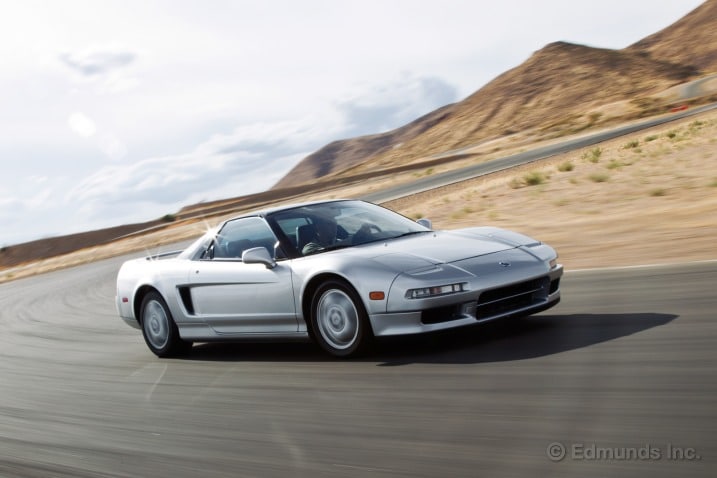
What do you want to know about?
- Introduction
- It Leaks
- Never has a V6 Sounded So Sweet
- Decades
- Fear, Loathing & Racing in Las Vegas
- That Didn't Take Long
- Drying Out the Trunk
- The Vegas Road Trip
- The Vegas Road Trip, Part II
- New Struts
- The Wash
- Mix Tape Revival
- The Rumored "Titanium" Key
- Ayrton's Car
- Does This Make Me Look Fat?
- New Struts Are In
- Check Engine Light, Step 1
- Service Update
- Suddenly, Errands
- Make It Rain
- New Oxygen Sensor and Gaskets
- iPod Interface!
- Poster Child
- I Love This Car
- Yes, Please
- Forced Chivalry
- Ancient Tires
- Don't Ask
- Ladies' Guide to Exiting the 1991 Acura NSX
- Enthusiasts. They're Everywhere.
- I Guess I'm Pressing #5
- Dewey
- Devil In the Details
- Hammer Down
- No
- Shattering My Youth
- Sounds Great, Too Bad it's Fake
- Simply Awesome
- Night Lights
- Listen Up!
- Red Alert
- New Tires
- Measure Twice
- Bent Wheel
- Blessing and a Curse
- Date Night Choice
- Chivalry is Dead
- School Drop Off
- The Way Hondas Used To Be
- Checking the Oil
- Looking For Used Car "Tells"
- Neat Detail
- Door Handle Update
- All I Want For Christmas...
- Did The Presents Fit?
- We Did It!
- NoSX Design?
- Trippin' Trip Meter
- Get Ye To The Trunk!
- Sacrifices...Not Really
- Fixing the Door
- Outakes #2
- The Drive. Finally.
- Slight Height Difference
- The Way It Should Be
- Acura NSX Concept at the 2012 Detroit Auto Show
- Thoughts on Mark II
- 1991 Acura NSX as Daily Driver?
- One Owner Reports
- Machine Head
- Riding the Tip of the Bullet
- I Don't Want a V8
- Thin A-Pillars Make for Great Visibility
- Will The Bike Fit?
- Not Getting Over It
- As Good As You'd Imagine
- Bottom Feeder
- Taking On The World At Fuji Speedway
- Schhhhhhck
- A Look Underneath
- Engineer Ride-Along
- This May Be A Tad Big
- Let's Make A Deal
- Past And Future
- A Multi-Generation Video Tribute
- Cool Past/Future Video
- I Can Live Without My Radio
- Collectible, Schmellectible
- Dear Future Owner
- Funhouse Mirror
- Taking a Beating
- I Could Drive It Every Day
- Cool Seats
- Spacious But Cramped
- Marker Light Bulb Replaced
- Hey, It's a Honda
- Still Lovin' It
- Blast From The Past
- Insert Velvet Underground Lyric Here
- Oil In and an Oil Change
- Baby Visor
- Time for a New Stereo?
- A Padded Helping Hand
- A Change Will Do You Good
- Fisker Encounter
- The Shifter
- Inside Line/NSX Love-Fest, Part 692
- The Zen-Like Horn Button Experience
- Hard To Leave
- Fine Wine
- R8 vs. NSX Revisited
- Sounds Awful
- Trackside Support
- Road Trip
- Warning Light
- SRS Warning Diagnosis
- SRS Warning, Next Step
- Road Trip, Part 1
- Road Trip, Part 2
- Airdam Damage
- Almost an Everyday Supercar
- And Now, Deep Thoughts
- Stacked
- Getting to the Bottom of the Airbag Issue
- Cameo Appearance
- Aluminum Sandwich
- Movie Stark Makeover
- The Aluminum Falcon
- Audio Claptrap
- T-Rex Hates NSX
- More Lock Please
- Airbag Warning Light, Continued
- Toyoda's Favorite
- Back on the Road
- Kulinary Mille?
- Still Looks Great
- More to Fix
- Beating the EPA...in L.A.?
- Exposed or Hidden?
- We've Driven it 10,000 Miles
- Seat Wear
- No Love at Cars and Coffee
- Valet Love
- Lucky Catch
- Of Supercars and Tractors
- POP!
- Better Left Unseen
- Thankful for the Trunk
- Vet Trip
- That Must've Hurt
- The Fix
- Fixing the Stereo
- Right in Red
- No Stereo, No Problem
- It Needs a Stereo
- Old Honda vs. Old Porsche
- Loose Lip
- As Good As New/Old
- Loose Lip, Part 2
- Adolescence Restored
- Interior Dimensions
- No, It Doesn't Get Old
- Defroster
- Road Trip Prep
- Loose Lip Part 3
- Link to a Legend
- Not a Water Ski Boat
- Daily Driver
- Feels Good at 132 mph
- Going Back Home...Sorta
- For Sale, But Wait...
- Trying to Pass Smog
- Failed Smog a Second Time
- Second Smog Failure Diagnosis
- Smog Test Results, Compared
- Finally Passed Smog
- Total Cost to Sell
- In Good Hands
- Wrap-Up
Introduction
This one is your fault. When we bought our long-term Ferrari 308, you laughed at its unreliability and said we should've bought a 1991 Acura NSX. When we bought our used BMW M3, Corvette Z06 and Porsche 911, you once again pondered quite raucously why we didn't buy an NSX.
Finally, when Editor in Chief Scott Oldham asked on the long-term road test blog which used classic Edmunds should buy next, it was an overwhelming landslide: "Buy an Acura NSX!" you shouted.
Message received. For the next 12 months, a 1991 Acura NSX will reside in the Edmunds garage. If we don't like it, we'll let you know. If you don't like it, well, take to our comment boards and let your fellow readers have it for suggesting it in the first place.
What We Got
Our new/old Acura NSX reached us by passing through an interdimensional time portal directly from its original delivery date of November 30, 1990. Well, at least that's what its meticulous condition would lead us to believe. Our other used classics were in nice shape for their age, but nothing comes close to this NSX. Save for a small scuff on the center console and a pair of trunk struts that don't actually work (a common NSX problem, we hear), you'd swear this is a brand-new car.
When it was actually a brand-new car, it was the 743rd NSX to roll off the assembly line at the Takanezawa R&D plant where a select group of Honda's best employees meticulously hand built, inspected and perfected it. They even wore white gloves. There were no options, and in our car the 3.0-liter 270-horsepower V6 is hooked up to a five-speed manual transmission. That also means no power steering, as only the automatic-equipped cars (and most post-1995 NSXs) came with electric power steering. No thanks.
The NSX was also the first exotic sports car that put a priority on comfort, usability and reliability.
According to the car's service records, its previous owner sank about $6,000 in maintenance during his 15-year ownership of the car. This included a new water pump, belts (timing, alternator and A/C), right window regulator, a new clutch, retractable mast antenna and oil pan gasket. Considering we spent about $4,600 during one year with a 1984 Ferrari, that doesn't seem so bad.
In 2002, its previous owner also installed a subtle $1,000 stereo upgrade that included Kenwood speakers, a 10-inch trunk-mounted woofer and four-channel amplifier. The Acura head unit (including its tape deck) remains in place.
When it was new, our NSX sold for $60,600. Twenty-one years later we paid $33,000. And yes, we know that's a little high, but in this case we decided to pay a little extra for the fact that it was a pristine car with only 45,886 miles on it that also happened to be right in our backyard.
Why We Bought It
Aside from our readers clamoring for the car, we wanted an Acura NSX because it represents a significant turning point for Honda and the automotive world. The NSX was the first production car to feature all-aluminum construction, titanium connecting rods and yes, even electric power steering. It was also the first U.S. production car to offer VTEC variable valve timing and the first and only car that Formula 1 legend Ayrton Senna had a hand in developing. Without him, the chassis would've been 50 percent less stiff and its suspension not as keenly tuned.
The NSX was also the first exotic sports car that put a priority on comfort, usability and reliability. Exotic cars of the time, like our old Ferrari, were all about passion and character. If the pedals were offset, the climate controls bizarre and it broke down on the road to Vegas, so what; that was just part of the charm.
Honda didn't follow that premise. It wanted its halo car to have the precision of a Ferrari, the comfort of a Corvette and the usability/reliability of a Miata. Senna certainly helped with the precision part, and its spacious accommodations were made possible by weight-reducing aluminum. Honda's men in the white gloves took care of the rest.
Perhaps what we most want to sample, however, is the purest example of a corporate philosophy that made so many enthusiasts fall in love with Honda. "As Honda sees it, driving isn't merely a method of achieving a destination," said the 1990 introductory press release for the NSX. "Cars, no matter their market niche, should be amply endowed with a large dose of driving fun."
No Honda or Acura has ever been so amply endowed as the NSX, and for 12 months you'll be able to experience it with us on the Long-Term Road Test blog.
Current Odometer: 46,451
Best Fuel Economy: 21.2
Worst Fuel Economy: 20.1
Average Fuel Economy (over the life of the vehicle): 20.7
Edmunds purchased this vehicle for the purposes of evaluation.
It Leaks
Sorry for the crummy image, but by the time I'd loaded my stuff into the car and drove it out to natural light, all of the water that had been pooled in the channels of our NSX's trunk had dripped either into my bag or down the back of my shirt. And, really, there's no reason to post that. )
When we bought our NSX we knew of just a few things wrong with the car: 1) there were a few minor scuffs on the wheels. 2) The trunk struts didn't work. We can now add a third item to this list: The trunk leaks.
This leak was the result of rain. Not particularly hard rain, but still, water fell from the sky and mysteriously wound up in the trunk and then down the back of my shirt. The pattern here suggests that before it was on me, the water was in the trunk and evaporated up to the lid.
We like to keep our cars clean and every so often park them near sprinklers or drive them in the rain. I'm following up with some NSX-owning buddies to see if they have any experience with this. Updates to come.
Now, the old owners may have forgotten to tell us about the leak, but they were kind enough to provide a slick workaround for the broken struts...
There are many great aspects of our "new" NSX. The appearance of the engine is not one of them.
Can't blame Honda really. There's barely enough room to squeeze a V6 in there let alone dress up what's visible. I think the engineers may have attempted to make up for its lack of visual appeal by making it sound better than any other V6 I've ever heard.
It's not the typical raspy exotic sound either. Think more like silky, precise and a bit high pitched. With the engine sitting so close to the back of your head, you hear a mix of mechanical sounds from the engine along with the tone of the exhaust. And it is shockingly good.
And don't worry, we'll get a video up for demonstration purposes shortly. I tried a simple recording but it just didn't do it justice. This engine deserves a real microphone. Stay tuned.
Last night was my first time in our NSX. Actually, it was my first time in any NSX. And for the most part, it was worth the wait, especially since our long-termer looks and feels fairly fresh. Unexpectedly, it also stirred up a lot of nostalgia.
As soon as I slid into the seat, I was surprised by the low ride height. The center stack's shallow angle, blending into the center armrest was also a bit of a surprise. Once I closed the door, I noticed that the beltline is much lower than today's sports cars. To me, I instantly thought of how Formula One cars in the 1990s were much more open, while today's F1 cars effectively surround the driver up to his eyeline. Yes, I imagined for a second what Senna might have thought of the NSX.
Then I fired up the engine. Whoa. That's a lot louder than I imagined. It also idles a little rough, but not in a bad way. I turned off the air conditioning and that quieted and smoothed things out significantly. Clutch in and reverse. Hmm. That clutch pedal has a lot of travel from the floor before you finally get to the friction zone. And that friction zone is pretty wide, too. Mentally noted. The shifter, on the other hand, is as good as it gets.
I only had a few opportunities to really open up the throttle on the way home, and it was a lot more raucous than I had expected. There's a pleasant mechanical growl accompanied by a lot of high-pitched whine. I can get used to this. I can't wait to see what it'll do on my canyon roads. Soon.
All the way home, though, I was preoccupied with the last twenty years. In 1991, the NSX was the "it" car for me. I was in the beginning stages of transportation design and my instructor actually designed the NSX's seats. Then I remembered what that time was like, and how I wished I could've contacted my former self...
Dear Mark,
This is your future self writing to you. You know all of the stuff you're learning about car design, photography and graphic design? Pay attention, they'll come in handy later. You're going to walk away from all this in a few years, but trust me, it's a good thing. You're in for a couple of rough patches here and there, but don't worry, it will all work out in the end. Don't let the people around you tell you how to live. Just live and have fun. Don't be afraid of the big decisions. Don't be afraid of starting over. It will define you in later years.
You may not believe it now, and at some point in the next twenty years, it will seem impossible, but you're going to drive an NSX. And you're going to get paid to do it. It's as good as you imagine. Also, keep riding motorcycles and don't get pressured into anything you don't want to be a part of. Keep reaching for things that are obviously out of reach. Don't settle and never give up.
I think I met our future self a few weeks ago. Things look to continue in a most wonderful trajectory.
Enjoy the ride,
In the spirit of gonzo journalism, Hunter S. Riswick and I will be heading out to the Indy Car race in Las Vegas in our new/old long-term NSX. We'll see what it's like on the highway for the four-hour trips and probably discover a few flaws that we're not currently aware of. I've been told that the air conditioning is on the weak side. Great. Magrath seems to thinks it's a bad idea, saying the ride is harsh and it's loud. Wimp.
Any predictions? Will a Burmese Tiger fit in the NSX? Will I lose the car in a game of poker? Will we see Will Power's famous double-bird salute? James will be tweeting when lucid (@Jriswick). Stay tuned.
Ed Hellwig is right about the way our new/old 1991 Acura NSX sounds. It's got quite the stirring intake note when you give it the pedal. It also boasts one of the best shifters I've used in... well, a long freakin' time. There are shifters that are light and positive like this one's, but few also manage to feel like a mechanism. The NSX's gearchange retains that satisfying mechanical feel. Can't get enough of it. Shift just for the hell of it. The clutch is on its last legs, for sure, though.
Anyway, I was exploring the reaches of the throttle when the above light flicked on. It's a check engine light. No change in the way it's running, all gauges normal, and I'm just around the corner from my destination at this point. Stopped, I snap the photo and cycle the ignition just to see if it sticks. The CEL doesn't return. Hmm.
Now, this is a '91, so it's OBD-I, meaning it doesn't have anything near the diagnostic capability of today's OBD-II cars. No quick hookup of our DashDaq to see if it stored a code, then; this is a count-the-blinks deal.
First, dive under here (weird, in this photo it looks like there are those fake Halloween cobwebs stuck all over the place. Optical delusion.)
Then, find the blue two-pin connector that's not connected to anything:
Jumper the pins in this diagnostic connector with a paperclip (how quaint!) and count the CEL flashes. Our registered two codes: 2 and 36. These are, respectively, Rear Primary HO2S Circuit Hi/Low Voltage and TCFC Signal.
Translation: the oxygen sensor in the rear cylinder bank saw or thought it saw an unusually rich or lean condition momentarily, and at some point the Traction Control Fuel Cut was triggered. I'd guess that a TCFC code doesn't light the CEL, and that it only shows up when you check for stored codes.
O2 sensor codes can be triggered for a number of reasons, so we may have a problem and we may not. For now, I'm inclined to stay the course and see if it returns before getting too excited.
Also, aftermarket stereo installers are a bunch of hacks. All of them.
As Mike reported, our NSX has a leaking trunk that we're attributing at the moment to a faulty taillight seal. This pretty much soaked the trunk and after three days of being heated by the adjacent engine, it got pretty dank in there and condensation continued to form on the underside of the trunk lid. Basically, we were on a one-way ticket to Moldville.
When I got home, I propped the trunk open using the trusty trunk stick (the new struts are on their way) and pulled the wet carpeted mat. After 20 minutes in my dryer using the rug setting, the mat was dry. After four hours with the trunk popped, the rest of the trunk was dry.
After a weekend spent in the hot desert sun with the engine continually running, the trunk was still dry but a tad musty in smell. Takahashi is going to hand wash the car tonight to get rid of our road trip grime while seeing if he can find the location of water intrusion.
Consider yourself updated.
Our jokey pre-trip post on Friday was entitled "Fear, Loathing and Racing in Las Vegas," but sadly we got more fear than racing. The above photo was taken at the beginning of our day at Vegas Speedway, and our Straightline post this morning should describe the rest of our experience.
But this blog is about the NSX. Exotic sports cars, especially older ones, are not renowned for their road tripping ability. They are traditionally uncomfortable, have no trunk, get poor gas mileage, make a ton of noise, have a rough ride, have confusing controls and things often don't work. The Acura NSX was created to counter all that, but does it still fulfill that promise 20 years later?
For a Japanese sports car from 1991, it's a pleasant surprise that 6-foot-3 me not only fits comfortably in the NSX, but the driving position is just about spot on. The passenger footwell is much smaller thanks to the aftermarket subwoofer (didn't know about that when I wrote the intro), so legroom isn't so great over there but I don't think it was as big of a deal for Mark.
As the photo above shows, we were able to fit a weekend's worth of luggage inside the trunk along with books of CDs (Riswick) and tapes (Takahashi). We would've had room for our computers, but why on Earth would we have needed those? Oh right. As for that pesky leaky trunk issue, stayed tuned for a second blog later.
Poor gas mileage? Well, we got 24.5 mpg, which is better than the EPA's modern calculation of 22 mpg. Actually, it's better than the old school 1991 calculation of 24 as well. Just imagine the fuel economy a sixth gear in the box could achieve, not to mention mitigating noise. Sure, the engine wasn't nearly as noisy as we figured it would be, but there'd be a big difference between cruising at 75 mph with 3,000 rpm and 2,000 rpm.
The ride was probably the most surprising. Even over the crappiest of Interstate 10's crappy pavement, the NSX was never punishing or tiresome. Actually, it's downright comfortable and rides better than a whole ton of modern cars — sports or otherwise.
Confusing controls? Nope. We had to figure out that the "Prog" button shown in the stereo screen is how you cycle through the CDs in the changer, but otherwise, this is classic Honda at its best.
Things don't work? Well, we need to get the oxygen sensor fixed and I'm getting tired of propping up the trunk with my head. Also, the A/C was a little flummoxed at times to pump out cold air to both sides of the car, while at others pumping out too much cold air. So there's work to be done, but nothing that really hurt our enjoyment of the trip. Furthermore, it's 20 years old.
In total, the NSX is a wonderful car and I'm looking forward to taking many other trips in it. Promise fulfilled.
Our trip to the Indy Car race in Las Vegas was eventful, to say the least. But our long-term NSX was a champ through it all. James gave his recap of the trip yesterday, so now it's my turn to weigh in. The NSX was pretty limiting in terms of cargo, so we both packed light. My camera bag was really the biggest bag in the boot. Everything fit perfecty (James must've been pretty good at Tetris as a kid), and we hit the road. Step one: fueling up (above).
While James topped-off the tank, I ran in for some provisions. I quickly realized there aren't any cupholders, so the bottles went in the glovebox with my bag o' candy. Surprisingly, the drinks stayed cold for quite some time; well past Barstow.
The air conditioning was blowing cold. Really cold. The frigid air was actually visible as it came out of the center-right vent (simulated above, but that's how it really looked). It was so cold that snow actually began coming out of the passenger door vent. Little flakes were popping out and melting once they hit my shirt sleeve.
As we made our way out of West Covina, James had a minor meltdown when we hit traffic. Actually, that meltdown happened when he realized that the backup was caused by a charity rally that was held by the L.A. County Sheriffs. Me? I was okay with the whole thing, but I was just a passenger.
There's not a lot of internal storage in the NSX, but this pocket seemed perfectly suited for a mini box of Dots and James' tiny iPod.
Wires were a minor problem on the trip. With James using a tape deck adapter for his iPod and me charging my phone, the center stack began to resemble the back of my entertainment center at home. At one point when we stopped, James accidentally grabbed the black wire along with the hand brake, yanking the tape adapter clean out of the dash.
That image above is a little blurry, I know. But I couldn't take another because my camera ran into technical difficulties right then. The shutter gave off a horrible ker-clunk and an error message appeared on screen. Uh-oh, that looks expensive. I took off the lens and found the flip-up mirror rattling freely in the camera. Fortunately, the next day I bought some super glue and glued that sucker back in. Crisis averted. To the NSX's credit, I performed this delicate surgery on the way to the raceway — a testament to the car's compliant-enough ride quality.
I drove us back to L.A. on Monday, and had the same experience as James did on the way up. No drama, no problems.
Well look what just showed up in the mail...
You've all seen the stick, our NSX struts are shot. We knew this when we bought the car. We also knew that unlike the previous owner, we couldn't live with the stick and set out to find a replacement set for both the trunk and glass hatch struts. The quote from the local Acura dealer came up to $264.89 for both. But NSX-owning friends who've just recently replaced their struts had a better idea.
Two guys, unknown to each other, both suggested we head to NSX Prime (the Acura NSX go-to forum) and particularly this post rather than the dealer. Not only were these cheaper, but there's an additional discount for NSXP members who get the combo set. So we picked up two combo sets for a grand total of $216.00. Shipped. NSXP even has this handy guide for how to change them. Look for the install post soon.
Why two? Well, to start, getting two of these was cheaper than getting one set from Acura and if they happen to fail we've already got a backup. Worst case scenario is that when we go to sell it next year we can say, "Hey, buddy, you know what, we like you...I'll throw in a spare set of struts."
The Wash
Like our long-term Porsche 911, I prefer to wash our NSX myself. And like the 911, I found a few flaws during its time at Takawashi. The exterior is in remarkably good condition, with just a few nicks and chips that you'd expect. The one area that I paid particular attention to, however, was the trunk.
In an effort to track down the source of the water leak, Magrath and Riswick suggested I lay down something called Noooozpaper in the trunk (apparently it's a 17th century internet). I took their advice and after I was done drying off the car, I slowly opened the trunk, looking in as I lifted the lid so I could see what was dripping.
Turns out, nothing was dripping. My guess is that there needs to be air and water flowing at speed to get it to intrude past the weather stripping. Oh well, it was worth a shot.
Those of a certain age will remember the days of mix tapes. The peak of this era, for me, was between 1983 and 1991. I have to admit I don't miss the days of transferring my music from vinyl to tape, but reliving this format on last weekend's Vegas road trip stirred up a lot of ghosts for me.
I have a rule on road trips: the driver also gets to be DJ. James from L.A. to L.V., and we listened to a combination of his iPod (Aston Martin-branded) and some CDs he loaded into the changer. It was really quite pleasant, as James didn't play anything offensive or banal. And that made me feel bad for him, because I knew he was going to have to endure some of the worst music the 80s had to offer on the way home.
I was a bit of a geek (OK, I am still one) when it came to music. I insisted on copying my music onto the elusive and expensive metal (Type IV) blank tapes. These tapes, besides exhibiting much better audio qualities, also seemed to fare better over time and being subjected to high temperatures.
Before we left for Vegas, I dug these tapes out of my storage shed. Fortunately, I've only moved twice in my life, so I managed to hold onto a lot of mementos from my past. That shed was pretty humid, so I didn't expect to tapes to sound very good. Some tape decks back then didn't even have a metal setting, and I wasn't sure if our NSX did. Thankfully, once I popped in my Driving Tape, a little "METAL" indicator lit up on the audio screen.
To my surprise, most of them did sound just as good as they did 20 years ago. In terms of sound quality, anyway, I'm sure James would have something to say about my tastes in music (though I did catch him bopping his head to Whitesnake). I'm pretty sure he would've jumped out of the car while it was rolling down the highway if I started in on my Phil Collins collection.
Me? I'm thrilled to use my old tapes again. I keep the old Case Logic carrier on my desk, poised for the next time I grab the NSX keys. Rock On.
A friend of mine told me that the early Acura NSXs came with a titanium key that was very expensive to replace and couldn't be cut by an ordinary key machine. This piqued my interest, so I did some research on it in the NSX Prime forum, which was once again an excellent source of information. It turns out that the key isn't actually made of titanium, but rather a nickel alloy called "Monel".
Monel, composed of mostly nickel with a bit of copper, and iron, is a strong metal that is highly resistant to corrosion and is commonly used in marine applications. Monel was also used to make dog tags for soldiers in the early stages of World War II, until there was a shortage of metals and then brass and stainless steel was used.
I should point out that we don't actually have this key for our NSX. Somewhere in the 20-year life of this car, it was either lost, or maybe the original owner hung onto it as a souvenir. For now we're stuck with the basic key, which only costs about $10-$15 to replace.
If you want to replace the Monel key, it will run you about $125 for a blank key. According to NSX prime, it requires a cutting machine that will copy an original key. The stamping machine, which uses the key code, will not do it.
The NSX came with the Monel key from 1991-1996. After that, Acura switched to a typical transponder key, which was safer in terms of theft protection, but didn't look as cool.
If you owned an NSX, would you pay extra for the Monel key?
For those who have followed Formula One or the evolution of the NSX, this will come as no surprise to you. For the rest, I hope this helps confirm why the NSX is special.
The man driving the silver Honda NSX above is Ayrton Senna. This Brazilian driver is one of the best the sport has ever seen, winning three drivers championships and 41 races until his tragic death in 1994. He was brash, narrowly focused and incredibly intense; often raising the ire of fellow competitors and race officials. And he had a hand in the development of the NSX.
As the story goes, Senna was at the Suzuka International Racing Course (built as a Honda Test track in the 60s), testing his Honda-powered McLaren F1 car. At the same time, the NSX was being tested before it went into production. The engineers handed the keys over to Senna and he came back with some critiques; most notably saying it felt fragile. To the engineer's credit they took him seriously and went back to the drawing board to increase the chassis' rigidity. Senna also chipped in on the suspension and handling prowess — something I hope to explore sooner rather than later.
For the uninitiated, this would be akin to having Mario Batali running your backyard BBQ or getting the Rolling Stones to play a few songs at your 40th birthday party. Senna was a magician behind the wheel and was as exacting a driver as there ever was. His soul lives on in this car. Honda gave him a few NSXs as a thank you, one of which is still in the family's possession. If any of his NSXs were to go up for sale, I'm sure it'd fetch a tidy sum.
In 2005, I visited the memorial to Senna at the Imola Circuit in Italy, the site of his tragic last race. It was not a race day and everything was eerily quiet. Still, there were fresh flowers adorning his bronze statue.
And of course, a video of Senna behind the wheel. Apologies for the Japanese Michael Bolton soundtrack. Also, notice how far back he sits, with his arms outstretched. At the two-minute mark, watch how hard he's driving it as he dips into the turn 11 hairpin. Wow.
Vehicle capacity weight: 400 lbs. T'was a simpler time in the late 80s.
According to a study by the CDC, the average weight of the American male between 1988 and 1994 was 181.3 pounds. By 2002, that number swelled to 189.3 pounds. Today? 194.7.
But the dudes weren't alone, the average weight of women has jumped from 153 in the '88-'94 study to 164 today.
This means that if you put two average American males in our 1991 NSX, you'll have an additional 10 pounds of wiggle room for luggage or some food and water. An average man and woman gives you a sweet 40 pound buffer. Which is about equal to Riswick's garment bag.
This morning with a couple of open end wrenches, 30 minutes of my time and a little sweat equity I installed the new struts on our NSX. Now the car's trunk and hood stay up all by themselves.
Next up? A set of 20s and flame paint job, of course.
By now you already know about the check engine light we encountered on our 1991 Acura NSX. We decided to call in the pros right off the bat. So early this morning we passed the keys off to MD Automotive in Westminster to resolve the issue. More to come.
Some of you have been asking where the NSX has gone. Well, it's still getting fixed up down at MD Automotive in Westminster, CA. The O2 sensor has been replaced and we're waiting on new taillight seals to fix the trunk leak. I think we'll have it back good as new by the end of the week.
Until then, I thought you might like to see this pic of photographer Scott Jacobs earning his huge salary.
And one more thing...
Many of you are going to question whether or not we could have fixed these things on the NSX ourselves for less money, and the answer is undeniably yes. But you've got to realize there are only so many hours in the day and we have to choose how we are going to spend that time.
1) We can fix and do all the required maintenance on all of our long-term cars ourselves
or
2) Fill Inside Line and Edmunds.com everyday with quality photos, words and videos
Usually we choose number two, even if it means paying for repair services we could have done ourselves painlessly. Sorry, but that's just the way it is. It's called life. Real life.
Suddenly, Errands
I have an NSX in my garage.
Of course there's a reason why I was "given" the car for the weekend (more on that later), but for now... there's an NSX in my garage. I will now commence running errands at 7,000 rpm.
What would you want to see when you walk to your garage this weekend?
So, remember when I said I was "given" the NSX for the weekend? Well, here's the reason.
As it was supposed to rain quite a bit here this weekend (it didn't, natch) I was given the task of driving the NSX around in the rain and then inspecting the hopefully wet trunk to come up with a possible source of the leak.
On Saturday, armed with my smart phone and an ever refreshing Doppler radar image, I did my best to hunt down rain. As I didn't want to smell like Magrath did after all his clothes got soaked and then baked in the heat of the trunk, seriously, the man smelled like mulch, I decided to leave the trunk empty and go into full storm hunter mode.
As luck would have it, all I had to show for 200 miles of Doppler guided driving was a smeared windshield and frayed nerves. I'd be surprised if I encountered more than 5 minutes of light rain. Click on through to see what came next.
On Sunday, I turned the hose on the back of the car and let it rip.
Before you get all bothered with the idea of me blasting away at some unsuspecting rubber seals, know that every new car goes through far worse leak testing before it makes it out of the prototype phase - Corvettes and F-Bodies excepted. Those cars should have come with a complimentary poncho.
Anyway, after tracing the seals around the trunk for a few minutes, I popped open the hatch and saw that, low and behold, it was leaking just above the tail lights on both the left and right side. To be fair, it wasn't much, but, to be fair, it shouldn't leak at all. You can see the compromised seal and the water droplets in the picture, below.
As I noticed the trunk's reluctance to close easily on Friday, I figured that the bumpers might be out of adjustment. Sure enough, the right side was cranked down significantly farther than the left one, so I adjusted the left one to match the right, shut the trunk (it shut perfectly) and did the test again.
Unfortunately, the trunk still leaked on both sides. As reader huyracing (who seems to own an NSX) suggested, we might need to replace the tail light seal. Will this keep me from driving the car again? Not a chance. This car is cool.
Stay tuned for the fix.
Our 1991 Acura NSX was out of commission for a few days to address the check engine light and trunk leak. Well, we picked it up from MD Automotive in Westminster on Friday. That was when I tossed the keys to Kurt...
What I didn't tell Kurt was that the tail light seals were replaced. He managed to make the brand new Acura seals ($25 apiece) leak just as well as the worn seals they replaced. Way to go, Kurt. Now we know those weren't the problem.
As for the check engine light, at least it hasn't reappeared. Since we swapped out the rear oxygen sensor the car seems to be just fine. Now it's back to the drawing board for the trunk leak.
Our 1991 Acura NSX has an iPod interface! Amazing, right? Here's how it works.
Step 1: Plug in tape adapter removed from your 1998 BMW into iPhone, place in NSX tape deck.
Step 2: Place iPhone in handy mini-bin perfectly sized to fit and prop up iPhone. Such prophets those Acura designers were.
Step 3: Select morning podcast.
Step 4: Adjust volume on iPhone, adjust volume in NSX. Repeat numerous times as the Fan 590 can't seem to even out its volume levels on podcasts.
Step 5: Comment to yourself, "Man, this sound quality sure does suck. I wonder what it's like with music?"
Step 6: Answer own question. "Yep, totally sucks even more. Distorted, almost AM radio-like, occasionally crackly. My Z3 sounds better, but it's eight years younger. Maybe we need head cleaner. He he, I said 'head cleaner.' Ah, but Mark's ye olde mix tapes worked fine."
Step 7: Remind yourself the car was built in 1991 and being able to listen to a podcast at all without resorting to the iPhone speaker at least puts the NSX ahead of the 20-year-younger Outlander Sport.
Step 8: Remember to bring CDs for drive home.
P.S. With the O2 sensor properly sorted, I'm looking forward to taking the NSX out for a proper drive soon. Even when stuck in traffic, though, it's awesome.
I was driving through a mall parking lot on Saturday, and as I pulled away from a stop sign a kid, no more than 7 years old, tugged on his mother's hand as I drove by and yelled, "Mommy, that's a car from a poster!"
The only thing that would have made this any cooler was if I had been the photographer who took the photo which was hanging on that kid's wall.
I haven't exactly been a purveyor of our classic long-termers over the years. I don't fit in the Porsche, I'm just not a Corvette guy and I regretfully never even drove the Ferrari because at the time I was afraid the brakes would fail or something and I'd die looking like someone trying to be Tom Selleck.
Anywho, consider me an enthusiastic purveyor of the NSX. I just love this car. Perhaps the difference is I thought the NSX was cool when it was new, and thus feel the same sort of romance for it that Mark feels for the 911. But really, it's just a helluva lot of fun. Just driving along Olympic Boulevard the past three days from the auto show downtown to my home 5 miles away (no traffic) has been a blast.
The engine is incredible. It boasts a very un-Honda bark and of course revs sweetly, but without the sort of overly anxious zingy nature you get from Honda's high-revving fours. Throttle tip-in is just perfect, and when so many new cars are adopting these fuel-saving, old-lady-preferred lazy throttle calibrations (cough, BMW, cough, VW), I'm realizing how much throttle reaction plays in making a car feel "just right." Then there's the five-speed manual. Yes, the clutch take-up is high, but I've never had a problem with it. The gearbox itself has that snick-snick Honda action, but with a more rewarding, higher effort weighting than the stick-through-hot-butter Honda boxes of today. The shifter itself is perfectly placed.
Throw in the fact that I not only fit in the NSX, but actually find an ideal driving position and it all adds up to a car I'd be happy to drive every day. Yep, even in crap LA traffic. Perhaps that's why I love it so much. If you can have fun even when commuting, you've got a winner.
Man, the driving position in our longterm 1991 Acura NSX is just spot on, for a number of reasons.
Its seats are terrific. With adjustments only for reach and rake and modest bolsters, they somehow manage to be comfortable and still offer great lateral support.
And that super low cowl, well, you simply can't achieve that in a front-engined car. Its slender A-pillars probably wouldn't have a hope of meeting modern side-impact and rollover standards, but the panoramic outward view they help provide is so refreshing.
The NSX's cabin feels spacious and breezy. It's an impression that's aided by the dash and center stack controls which are set far forward. Funny, you feel like you have a commanding view of the road yet you actually sit quite low in this car. And I mean low. Getting in or out isn't the most graceful event you've seen. Though an Elise is clumsier in this regard.
Also, I was wrong about the clutch. It's fine. It just engages high. I've been told this is a common characteristic among NSXs.
Do like. Very much. The unassisted, unfiltered steering, the intake note that puts every other V6 to shame, its light and mechanical gearchange... I'm a fan. Unlike Riswick, I was neutral towards the NSX back when they were new. Driving this car now, I can see what all the fuss was about.
Now if you'll excuse me, I have some 8000-rpm shifts to rip off.
Michael Jordan and I met up with some of our colleagues for lunch today, and discovered another item that needs repair in our beloved NSX.
I opened the passenger door for Mr. Jordan from the driver's seat and the handle did not return to its customary position. Nope, it was just left hanging as you see it in the picture above. Once we parked at our neighborhood taco stand, this door handle was indeed non-operational. That sent me into action as a two-seat limousine driver; sprinting to the other side of the car to open the door for him from the outside.
I normally volunteer to make repairs like these myself, but my past experiences with disassembling door panels inevitably result in a handful of fastener left over and a new group of door rattles. This one is best left to the professionals, I think.
I recently wrote an article on aging tires that opened my eyes to an often-overlooked aspect of car maintenance. For years, many of us (myself included) have looked at tread wear as an indicator of when to replace a tire. But the age of the tire itself is just as important. Old tires develop cracks over time, which can potentially lead to tread wear separation.
When you buy any used car, especially a low-mileage vehicle like our 1991 Acura NSX, you should make it a habit to check the Department of Transportation (DOT) identification number on the tire. I was curious about the tire vintage on long-term cars we bought used, so I went to check them out.
Our NSX illustrates one of the difficulties you may encounter when you're trying to determine the age of a tire. The lettering on two of the four tires was facing the inside of the vehicle. This car sits very low to the ground, so the only way for me to see the DOT code would be to jack up the car and peek underneath. Thankfully, the code was visible on the other two tires.
The code on the front right tire reads "1502." This means it was manufactured in the 15th week of 2002. The code on the right rear tire says "0302," or the third week of 2002. The tires on the left side of the car face inward, but I'm going to assume they are of a similar vintage. This means that they are very close to 10 years old.
Consumers get mixed messages on when they should replace their tires. Many automakers recommend six years, regardless of tread. Most tire manufacturers say you should get annual inspections after the six-year mark, but that 10 years is the maximum service life.
We have Bridgestone tires on the NSX. If you look at the tires, the tread looks like it's in good condition, but the company says its tires have a maximum service life of 10 years. Our NSX is right on the edge. There are a couple other factors that could tire roadworthiness over the edge.
Tires wear out faster in warm-weather states. And it certainly doesn't help matters much when anyone who drives the car really steps on it to see what it can do.
So we're going to have to get a new set of tires as soon as possible. Similarly, our other used car, the 1985 Porsche 911, is going to need new rubber. In addition to the shallow tread, the tires are pretty old too. Here are the DOT codes for the 911: front right 4002, rear right 0105, left rear, 5204. The front left tire was mounted inwards, but if three out of four tires need replacing, we may as well get a full set.
For those of you who haven’t bought a new set of tires in a while, take a look at the DOT code and let us know how old your tires are.
Don't ask me why I loaded a stroller in the NSX's trunk and two child seats in its cabin.
Maybe I didn't realize I was driving a washed-up supercar with no cargo space. Maybe I was irrational about carrying a kid in this thing. Or maybe...
...I simply forgot to unload this stuff from the Volvo and it all ended up at work.
Whatever the case...everything fit:
With a low-seated car like our 1991 Acura NSX, exiting the vehicle with your grace intact can be a tricky proposition when you're wearing a dress. You don't want a knickers-baring Paris Hilton-esque scandal. So here are some tips I picked up over the weekend since I had to dress up for a wedding and the NSX was my ride.
By the way, what's great about the current forced chivalry of our Acura is that it means someone has to open the door for you and then will be there to assist you out of the vehicle. Which makes it much easier and if worse comes to worse they can block you from paparazzi.
1) Before the door opens, make sure to pull your dress down as far as it will go, especially important if you're wearing a mini skirt. Dresses do tend to ride up during a trip.
2) Once the door is open, with knees together and legs stretched out, swing them out and over the door jamb. Or you can also, with knees together, bring one leg out and quickly follow it with the other one.
3) With both feet placed firmly on the ground, steady one hand on the seat (don't grab the roof or the side of the car) and grab hold of your gentleman's hand.
4) Dip your head down before exiting the car so you don't hit it on the way out.
Now, getting into the NSX is another matter, but I suggest enlisting the help of your gentleman again to help ease you into the seat.
On a side note, as a sporty conveyance the Acura NSX was the best of both worlds of comfort and fun. The ride was comfortable and smooth, seat was cozy and the cabin was surprisingly quiet. I likes it.
Some days on this job are better than others.
I was reminded of this yesterday at the track as I sat in the NSX and watched the sanitation manager service the chemical toilets. After appreciating his handywork, we were off to the mountains for some driving and shooting.
It's possible, I thought as I pedaled the NSX toward the San Gabriels, that the guy cleaning those toilets is an enthusiast. You know, a crap connoisseur. But as I considered the situation more carefully, I decided he'd probably rather be driving the NSX or R8.
I know I would.
It was a good day. Look for these cars to appear together on IL soon.
Well, our pristine Acura NSX isn't exactly so pristine. None of our NSX's issues have been especially terrible, but it certainly dispels any notion that a 20-year-old Acura/Honda will be troublefree.
Any who, would you care to change the radio to preset 4? Oh, how about eject that tape? Well, you'd better be a raccoon or a blind guy, because our stereo lights no longer illuminate. Again, not a huge deal, but add another item to our Fix-It list.
Our 1991 Acura NSX was recently at the track for its maiden test day (surprising results forthcoming), and I noticed we have yet to properly address the taillamp issue. Didn't we buy new gaskets?
There aren't a lot of things I'd want to bring back from 1991. Certainly not the awful mullet I rocked for most of senior year. But this one detail on the NSX is something I'd want to bring back.
Yes, this mini visor is a feature I wish I had in my car. I know most cars these days have the dot haze thing going on in the same area, but the sun still gets through. There is nothing more annoying IMHO than the sun burning your eyes from a sport you can't block.
Back to back mid-afternoon runs. This time in our NSX. I haven't gotten a lot of experience in this beauty, so this was my chance.
The first time I was handed the keys to our NSX was driving back from a photo location well after dark. The car was filled with photo gear and I was extra careful on my run down the mountain. This time I was able to get a clean run up the Pacific Coast Highway. I wanted to get a real feel for what this car is about and what it can do.
I wouldn't say the NSX is terribly fast, but it sure is sexy. Though a veteran of the sports car scene, it hasn't lost any of its appeal. It's exterior design is still fresh, has a great driving position, a well sorted suspension, and turns heads like it did back in '91. Yes it has a dumb power antennae, and some might also point to the pop up headlights as a relic, but I actually enjoy those quite a bit.
The real beauty of the NSX in my opinion is a red line that starts as 7,900 rpm. At first I found it disconcerting to hear the engine rev so high since I'm used to a red line at a much lower rpm. I felt I was punishing the car. I looked down at the instrument panel and saw it's ok, "You still have another 2k to go!" I told myself.
The symphony you get at those high rpms is amazing. It really opens up and the power surges on. The blurry trees make it evident that this thing really gets moving at those high rpms. Once you've got your ques readjusted, this savvy veteran is a pure joy.
That would be the answer to the question, "Is it acceptable to cover up scratches on my interior trim with a Sharpie?"
Not even once.
Really?
I noted previously that the NSX, besides being a wonderful drive, permits me to relive my youth in the form of my old mixtapes. Last night, I
subjected
acquainted my girlfriend to the finer points of Phil Collins' early work as we headed out for burgers. This morning, however, all that nostalgia came to a sad, sad end.
I switched out the tape for another one and I heard a click inside the deck. Then the tape ejected. I inspected the cassette and saw that the tape had snapped. Bummer. Thankfully, it wasn't a tape that I had too much of an emotional attachment to. I tried another tape (again, one that I wasn't even sure what was on it) and "snap."
Yup, it looks like the tape deck has either malfunctioned, or is trying to tell me that my adolescent taste in music sucks. Perhaps both. I hope there's a fix for this. Until then, it's radio or CDs.
So there I was, accelerating with some verve down a freeway onramp; enjoying the snarl of the NSX's engine just over my shoulder. And then there was that wonderful whoosh of a turbo. Wait, what?
The NSX doesn't have a turbo. Man, that intake whine is really loud. Wait, no, that's not it either. The sound isn't localized to the rear, it's emanating from all over. My shoulders dropped once I had a good idea of what that high-pitched note was. I turned off the stereo (yes, playing Phil Collins) and the sound ceased.
As the resident old guy, I ran into this problem in the past. It's electrical interference. Most times purchasing better spark plug wires would cure it. Knowing that the NSX probably doesn't have cheap spark plug wires, I think the culprit might be cheap speaker wires — perhaps from the bargain-quality stereo "upgrades" that a previous owner made. Magrath also notes that some Hondas would run power wires in the same channels as speaker wires.
It doesn't bother me, though. It sounds great. But knowing it's fake is disappointing. If it were mine, I probably wouldn't bother fixing it. The best soundtrack is still coming from the engine bay.
My first time taking our "new" NSX long-termer home last night, and I gotta say I flat-out love it. It's a fantastic driving machine. Sure, it doesn't have the modern conveniences we take for granted these days, like Bluetooth, an iPod hookup, a nav system or even an in-dash CD player. Who cares?
Not that you would really compare them, but the NSX is night and day when viewed against our other two "old" long-termers, the Porsche 911 and supercharged Project Miata. While I enjoy both of those cars, neither one is a very easy-to-deal-with daily driver. The NSX is. Heck, I'd drive it every day (except when I need to stuff a bike into a car. I'm sure I could do it in the NSX, but it seems sacrilegious) if it wasn't "recommended" around here that we not hog cars.
Although we have found a few niggling issues with the NSX, none of them affect the actual driving of the car. This NSX is tight, solid and works just as it's supposed to. It has possibly the most perfect driving position ever. The bolt-action shifter has zero play. The non-assist steering, like the 911, telegraphs every road detail to your hands. The seats are comfortable yet laterally supportive.
And with the NSX, you're driving automotive history. This was a time when Honda/Acura built exciting, superbly-engineered cars. It takes you back, without constantly reminding you it's an older car.
But the best part about the NSX is the sound of that V6 snarling behind your head. From 5,000-8,000 rpm, it's truly intoxicating, yet not the least bit obnoxious.
It's glorious.
It's been a while since I set up a beauty shot at night. I had a little time to kill so I decided to suction-cup my camera to the rear window and set it to bracket three pictures every 5 seconds. It looks like I just engaged hyperspace in the Millennium (aluminum?) Falcon, but I'm barely breaking 30 mph.
OK, enough artsy stuff. See how the radio only shows the station info? James noted earlier that the rest of the head unit doesn't light up, so I decided to look into this in the morning.
I popped open the fuse box in the driver-side kick panel, but there wasn't a fuse labeled that pertains to interior lighting or audio. Then I tried the box under the bonnet. Yup, there were fuses that were attributed to lighting, but all of them were in good shape.
James was wondering if this was a job for resident tech man, Doug Newcomb. Perhaps there's a resource out there that can restore/repair OEM head units? But our senior front-end engineer and Honda-phile Masaki Komine turned me onto a Honda program that restores/refreshes NSXs.
Now, I don't speak or read Japanese (I'll let resident Japan-o-phile Dan Frio handle this one), but it looks to me like an interesting resource. Perhaps we can get original dash elements that have been shoddily "fixed" with a Sharpie while we're at it?
Several people here have written that the engine on our long-term 1991 Acura NSX sounds great. And it does.
But I was surprised by the deep growl of the 3.0L VTEC V6. I was expecting more of a higher-pitched whine, common on racy and racecar V6s.
I believe this engine sounds best out of any V6 I've experienced, including one of my all time favs, the Nissan R35 GT-R.
Hit the jump to listen for yourself.
I had the driver side window down for both of these brief runs.
I ran into the rev limiter briefly. Redline is at 8K.
At night, the gauges in our NSX are as easy to read as any car today. And that's impressive, since the gauges are not back-lit.
Nope, the NSX gauges are lit from the front and above. During the day, the gauges have white markings. At night the red lighting is soothing to the eye. I've always been a proponent of red interior night lighting, especially on long road trips. To me, it just reduces a little bit of fatigue and eye strain.
Yesterday our NSX got new tires, not because the rubber on the car was worn, but because it was old.
We wanted an aggressive summer tire, but honestly we saw no real need to put high-dollar, extreme rubber on a 20 year old sports car that has a known history for eating its back tires.
In the end we narrowed it down to two choices of the many available in the NSX's staggered stock sizes, the very aggressive and more expensive Bridgestone Potenza RE-11 and the Yokohama S Drive. We went with the less expensive Yoks, which saved us about $200.
Total bill with labor was $646.96 at Stokes Tire Pros, our local gurus.
We'll test the car soon at the track and report the numbers.
My math skills are so poor (surprise, art student!) that there's no way I would have been able to pull off the math necessary to get these brakes to fit inside our NSX's 15 inch wheels. And still get them to rotate.
I guess there is a practical application for math after all!
Earlier this week we put new tires on our NSX. That's the good news. The bad news is that during the mounting and balancing we discovered that one of our front wheels is badly bent.
It's bent so badly that it's a miracle we can't feel it though the steering wheel in the form of a vibration. Gotta be the fact that the NSX's front wheels are just 15-inches in diameter. If they were larger, say 18-20 inches, we'd probably be buying a wheel right now.
"Hey, you're responsible. Want to drive the NSX?"
This was Mike Schmidt, our Vehicle Testing Manager on Friday. We need to put some miles on the NSX's new tires before we subject the car to our battery of instrumented tests.
Hmm. A week with the NSX, but no shenanigans. It'll probably feel a little like going out for the high school prom with a really hot girl but stuck with my mom as a chaperone.
You've got these two cars in the garage. You're taking your significant other out on the town Saturday night. Which one do you choose?
I chose the NSX, as that's the whole point of us testing it. It felt like the more "exotic" choice as well. The NSX also helped out with its forced chivalry door handle. And, having read Caroline's Ladies' Guide to Exiting, I was at the ready to dispense advice on exiting to my skirt-wearing wife.
The NSX also rides surprisingly well. The only date night downside I noted was that the heater didn't (or couldn't) put out as much warm air as my wife would have preferred.
Just because Takahashi was careless enough to break our NSX it doesn't mean I have to waste my time getting out and opening the door for the girlfriend.
Though I'll certainly get out to take this picture of her nearly dislocating her wrist.
I took my daughter to her preschool today in the NSX. It was humorous to see it parked in the school lot next to the normal group of beast of burdens. It's rare, of course, but the NSX also looks out of place since it sits so low.
Last week, I posted on how Mike gave me the Acura NSX for a week with the understanding that I'd be Mr. Nice for about 500 miles. No problem, I thought. But after a few days of just dawdling around town, I was getting antsy. And the NSX wasn't helping. "C'mon," it'd whisper in my ear. "School drop off is booooorrrring. I need to rev. Let's go have some fun." Well ...OK. But just don't tell Mike, OK?
So on Wednesday I took a couple hours and headed up to one of my favorite driving roads. And I'm glad I did. This car is rad.
Even if you haven't driven an NSX, there's probably an idea in your head (from reading various stories over the years) that you know what the car is all about — all lightweight aluminum construction, mid-engine, high-revving, etc. But the actual experience of driving it on a curvy road is like going from a black-and-white photo to full-color HD IMAX in 3D and surround-sound.
This NSX represents everything that used to be golden about Honda.
The V6 is glorious. It's like you have your own personal F1 engine wailing behind your head as you nail the throttle. But it's more than just that. You get to savor it. With a long throttle pedal travel, an 8,000 rpm redline and only five gears, each run through a gear is drawn out. It's sort of cliche to say that a sports car's soul is its engine, but it's very much true for the NSX.
The shifter is a delight. It falls right to your hand, and has a great combination of lightness and direct positive action. There's a connection here to the NSX that will always be missing with a modern dual-clutch automated transmission.
The view from the windshield is still incredible. I remember reading long ago how Honda wanted the NSX's view to seem like an F-16 fighter's. I haven't sat in an F-16 (what, and you have?), but it seems like a good analogy to me. You're low to the ground, and the nose just drops away, letting you see the pavement rushing up to meet you. The A-pillars are thin, too, in a way that you don't see anymore.
I didn't drive the NSX hard around corners. But my pace was good enough to get a sense of the steering and balance. The steering certainly has some heft to it in that old-school car kind of way. You have to muscle the NSX into a corner a little more than with any modern car. But there's plenty of feedback through the wheel, and the NSX just seems so purposeful and enjoyable.
I suspect that when we test our NSX, the hard numbers will not be all that amazing in modern context. Heck, it's likely that our long-term Mustang GT is just as quick, or even quicker. But the NSX is so much more involving to drive. No turbos. No airbag collections. But it's still comfortable and harmonious. It's a driver's car.
I was talking to Scott Oldham yesterday, saying how the NSX is a great reminder on how cars (or Hondas) used to be.
"No, the way they should be," he replied.
Update: In my original copy, I said our NSX had electric-assist power steering and lacked stability control. Wrong. No power assist for manual-trans cars in 1991, I'm told, and editor Josh Jacquot says it does have stability control.
I forgot to mention last week that I checked the NSX's oil. It's not really a noteworthy event by itself. But in the context of old exotic sports cars, the process is super easy. 1) Pop the rear glass hatch with the release located on the driver side door frame. 2) Lift up the engine cover and prop it up with the attached rod. 3) Check oil.
The dipstick is easy to find and indicates the oil level pretty clearly.
I've bought a lot of used cars from private parties over the years. Sold almost as many, too. It's a process that involves a detailed look at the car, a sizing up of the seller and an understanding that you will never know everything that the car in question has been through. The latter is especially true if the seller is not the original owner, which is almost always the case whan a car is 20 years old like our 1991 Acura NSX.
Take this engine bay brace, for example. The correct orientation is clearly marked on both ends, and yet it is bolted in backwards with the "FR" arrows pointing toward the back of the car. This is not a part that's typically removed unless the engine has had serious work or has been removed entirely.
This being a Honda engine with less than 50k miles on the clock (officially, anyway), we can probably rule out a prior engine overhaul. On the other hand this "supercar" could have been driven as such, and some previous ham-fisted owner with weak manual skills could have zinged the engine. It does idle a bit funny, but that could be anything. Our test results say it runs strong.
Of course this brace could have been removed to somehow facilitate a clutch replacement. The mileage is a little low for that, so it would have been fairly recent. Trouble is, the accumulated dirt and a matching rub mark from the engine cover prop rod looks old, indicating it has been this way for quite some time.
Early removal of this brace could be a sign of low-mileage accident damage and repair. If so, there's no reworked metal evident in this area and the nearby bodywork looks straight. Car drives great, too. Seems unlikely that would be the reason. There is that trunk leak, though.
Maybe it was something benign like an alternator or throttle body replacement. Or, unlikely as it seems, maybe some worker at the plant simply put it in backwards when the car was built.
We'll never know for sure, but I'll see if I can find any more "tells" when I put it up on our Rotary lift for a suspension walkaround eartly next year.
I drove our long-term 1991 Acura NSX for the first time this week. And like most others on staff, I'm still on Cloud 9. What amazing *manual* steering this car has... save for the low-speed effort, this is the kind of weighting and feel that automakers try to replicate today with hydraulic pumps and/or electric motors. (Obviously, most of today's cars aren't mid-engine, but still, you can tell that this is the ultimate standard, at least for Honda.)
But really, I was excited about the NSX before the key was even in the ignition. I opened the door to find this cool metal sill plate stamped with the last eight digits of the car's VIN and I knew it was going to be a good drive. Note the prominence of NSX and Honda Motor Company. No Acura branding here, because this is a world car from an earlier time — more of a statement about Honda engineering than a phase in the luxury-division marketing plan.
The passenger door handle in our NSX has been broken for a month now, so I went ahead and ordered the part last week. Thanks to a tip from reader 92_nsx_411, the billet door lever will be coming in from ScienceofSpeed.com.
Thankfully, the entire door panel won't have to come off — only the section surrounding the door handle. That means I'll be doing the repair myself, which shouldn't pose any problems. With any luck the part will arrive sometime next week.
I'll give you all a complete rundown when it happens.
Is an NSX. Well, that wasn't actually what I wished for, but I'm happy to have it from now through the weekend. It'll be nice to get to know it during general driving around over the next several days, as opposed to the slog of a commute from the office and back.
I'll also be a little curious to see what The Wife thinks about riding around in our holiday sled. She's generally not as appreciative of older cars as I am. It's one of her few faults.
Yep, sure did.
Which means:
a) The NSX's trunk is decent-sized for a mid-engine sports car.
b) The Wife and I didn't bring enough presents to her parent's house on Christmas day.
c) A combination of the above.
d) Who cares? We're driving an NSX, and that's all that matters.
Regardless, we've certainly been enjoying our time in this high-class Acura. Love winding it out near the upper reaches of the tach.
That 's right folks, we reached 50,000 miles with our 1991 Acura NSX. And yes, I know, I missed being exact by 7/10ths of a mile. Kinda difficult when you 're driving along the 91 freeway. Still, I was closer than Jacquot with the Infiniti M56. That guy was way off!
Had a really good time with the NSX over the weekend. Did notice a sporadic rattle coming from behind my head though...
This trim piece turned out to be the culprit. Why was it rattling? Because of the three clips that hold it in place, one is completely broken off, a second is about to break off and is basically useless, and one is still intact.
Add it to the list.
I remember driving the Acura NSX when it was new. Everyone liked driving it, but it never got any respect for style. It was the Acura NoSeX.
We said it looked like the designers got to the B-pillar and suddenly found out that the rest of the car had to be done by Friday. Pininfarina might have done the early concept sketches for the NSX, but the finished car looked asleep compared to a Ferrari 348.
Of course, now the NSX has miraculously become much better looking. What is it about the way that Honda does its designs – so bland at first glance — that enables them to live on with a freshness that cars from other brands can never manage?
The NSX's trip meter has started acting up. It seems to reset fine, and starts counting up the miles okay. That is, until it gets to 10.9 miles, at which point it just stops.
I reset it a couple of times and it kept getting hung up at 10.9. I tried resetting it by pushing it once, twice, resetting it while sitting still and resetting it while moving.
Then this morning it got hung up at 2.9. So apparently it's a bit random where it gets hung up. I reset it again and now it appears to be working fine, as it went right past 2.9 and 10.9.
Part of the fun of owning a 20-year-old car.
This floor mat is from a different time. A time when floor mats were not the vile creators of death and mayhem that modern society has made them out to be. This particular floor mat fits well (it looks like it's molded to fit the shape of the floor, perfectly) and is fairly plush. Also, it has no labels warning you of impending death should you 'install' the floor mat incorrectly. That's refreshing.
As nice as the floor mat is, I don't like driving a manual transmission-ed car if there is one, so before I set off in our NSX, I tossed the floor mat in the trunk. Come to think of it, that's where my own driver's side floor mat has been since the day I bought my car, almost 10 years ago.
You put up with a lack of modern conveniences with older cars. If the car performs well enough, like the NSX does, then you don't mind at all.
For instance, these days we're pretty used to hopping into new cars and finding at least one cupholder along with a multitude of cubbies to stash stuff. Not so the NSX. It's nearly devoid of all forms of stash-ability.
But, there is this little bin here that perfectly holds an 8.4 oz. can of Red Bull. Well, it holds it as long as you don't move out of your driveway until you've finished drinking it.
Do I care? Nope. I'm driving an NSX. And I love it.
The replacement billet door lever from ScienceofSpeed.com came in last week, so I decided to fix it this weekend. All in all, it was an easy fix; maybe a four on a difficulty scale of ten. It wasn't completely without some frustration, as you'd expect, but there's certainly a feeling of satisfaction that comes with fixing something yourself.
The first step is to remove the door panel that slides into the handle and lever pocket. I used a plastic putty knife the lift the edge, then pulled it out with some pliers wrapped in a small towel (so as not to tear the leather).
It took some effort to get the panel off, but once removed, the door mechanism was now visible.
Six screws held the pocket in place. I removed them and placed them in the same orientation off to the side, ensuring the screws go back in their original locations.
Here's the underside of the pocket. Now you can see the part that broke. Pretty cheap metal, I'd say, just a step above plastic. See the black dot right next to the fracture? That's a sticker that covers some very small screws.
These small screws gave me the most problems. I thought I was sunk, since I didn't think I had a screwdriver small enough for the job. Then I came across a miniature screwdriver set I bought a few years ago. Let's hear it for having the right tool for the job!
The first screw needed a lot of effort to remove. When I finally got it out, I found out why.
There was a lot of red thread lock on it. The second screw wouldn't budge, and I ended up stripping the head. A few choice expletives later, I came up with a fix.
That metal was pretty cheap, so I pried it up with a flat screwdriver and just snapped that sucker right at the hole.
Next, I popped the C-clamp that was holding in the hinge pin. I dropped in the new billet aluminum piece and reassembled the whole mechanism.
While I was re-installing the leather door panel, the pliers slipped and put a scrape on the inside of the door handle. I'm pretty sure my neighbors think I have Tourette's Syndrome now.
Thankfully, last week I made a model of one of my personal cars and had a tiny bottle of Testors flat back paint. A little dab later, it was all fixed.
That's it. The door works just fine now. There's a little bit of binding halfway through the stroke, but nothing to worry about.
I've shot our NSX several times. Though being 20 years old, people still stare, take pictures and love this car. It's a testament to how great this car looks.
I've been wrapped up in all sorts of projects lately that have kept me from taking our long-term NSX on my canyon route. That all changed yesterday morning.
As is customary, I left my house early in the morning in order to get the cleanest runs (I only saw about 10 cars and motorcycles total in the mountains). I started out conservatively, gradually increasing speed and aggression.
Visbility is excellent, thanks to the NSX's thin A-pillars. Steering feel is perfect – as good as our old Porsche and my beat-up Lotus. You can really feel the wheel lighten up when balancing the car on the edge of understeer. The gear spacing is a little too far apart for my tastes; I like rowing up and down through the gears before and after turns. I pretty much kept it in second gear the whole time, and that suited the car just fine. It didn't bog down low and carried plenty of power all the way up the tach.
In many ways, the NSX reminds me of my little Lotus Elise. Cornering limits are quite high, despite having rather narrow tires. Both tend to understeer, but it's very manageable. Oversteer gets a bit tricky, though.
Rather than releasing the rear tires progressively (like out 911 and Mustang do), the NSX snaps from adhesion. You really have to be on top of things when this happens, fast hands are a must. You also have to be deliberate about breaking the rears loose, as they don't surrender grip willingly.
All in all it was an epic drive. I buzzed by all of the usual landmarks: the Dropoff Esses, the Top Carousel, Lower Carousel, CHP Bend, Cooper Corner, The Rock Store, The Snake, Squid Corner and the Notch. Most of these are names I've given them, regular Malibu bombers will recognize a few. On the way back, I took it easy as I rolled all the way back down Pacific Coast Highway. I came away impressed, considering this is a 20-plus year-old car. Hopefully soon, I'll be hitting these roads on my next superbike purchase. Raaaaawwwr!
Last night, all manner of mundane driving was on the menu, but I knew our long-term Acura NSX would bring small moments of joy so I signed it out without hesitation. It was the right move. The steering in this car is just fantastic — seriously, maybe the best I've ever experienced. The way it speaks to you so lucidly and fluidly as you're cruising down the freeway is unreal.
One of my stops along the way was the grocery store, and as I glanced to my right to start backing out, I noticed this car and thought, "oh, hey, nice steel gray X3..."
But nope, that's not an X3, just somebody's E60 5 Series sedan. But from the NSX cockpit, the Bimmer sedan looks so tall. Its door handle is roughly at eye level.
And that gets at my only qualm about driving cool old cars like the NSX. They're just so short compared to today's machines. Were I to get broad-sided by this 5 Series, and survive my injuries, I still might not be smart enough to blog anymore.
Do you waste time worrying about height incompatibility when driving older sports cars, or is that just one of the concessions of being a car guy?
Looky here at the roof of our longterm 1991 Acura NSX. You'll notice something's missing: a sunroof.
And that's The Way It Should Be.
Sunroofs are pointless contraptions in any car, and in sports cars they're flat-out wrong. They gobble up precious headroom, add some 40 or 50 pounds (!) at the absolute highest (aka worst) point of the car, degrade the chassis' stiffness (it's a giant hole, after all), and in time they're prone to leaks, sticking and generally sucking more than they already do.
So I'm endlessly pleased that our NSX does not have one. It speaks to the car's purity of purpose.
What it has in place of said evil device is well thought-out — the square panel depressions in the headliner you see allow a bit more headroom, which is admittedly on the snug side in the first place. My 'do brushes the NSX's headliner as it is, so I can't imagine what it'd be like if some jackalope put a sunroof in it.
In 1995, though, all standard-issue US-market NSXs were equipped with an even more offensive Targa-style removable roof panel. This baffling decision signaled the tone-deafness of Honda's US product planning, a tradition that's continuing to this day.
Today, it's hard to find any sporting-type car that doesn't have a sunroof. For years you couldn't get, say, any 911 lesser than a GT3 RS without one. However, the tide might be changing - Porsche will offer the bog-standard 991 stateside without a roof-hole if the buyer so desires.
The NSX replacement (the concept of which was just unveiled at the Detroit Auto Show) will undoubtedly usher in heaps of heresy (AWD, hybrid, etc). But we will know that a glimmer of the sharp thinking that created the original NSX lives on if they simply offer the new car without a sunroof.
Acura unveiled the new NSX Concept at the Detroit Show today. According to Acura's Web site, "With an NSX Concept based on the efficiency of hybrid power and all-wheel drive, Acura once again shows that ultra-high performance is at the core of our DNA."
Read Josh's Acura NSX report from the Detroit show floor.
Do you like it? Or do you prefer our 1991 long-termer?
When we look back at the cars shown at the 2012 Detroit Auto Show, I'd argue the one that shall stand out as the most ultimately important to its segment, its manufacturer and the car scene in total will be the Ford Fusion. Unless it drives like crap (which seems very unlikely), this is the car we're going to be talking about for the next year.
At the moment, however, the biggest car at this year's Detroit show was without question the Acura NSX Concept. It was what everyone was talking about there and on the Internet as well. Our NSX Concept video on YouTube already has 500,000 views, which makes it already the most view auto show video we've ever done. People love the old NSX (you guys begged us to get one), they love the idea of a new NSX, and apparently they love what Honda came up with for its concept.
However, what does this new NSX need to do to match the success of the first and more importantly, learn from its missteps?
First of all, the new NSX needs to be a catalyst for engineering advancement throughout Honda and Acura. The 1991 NSX was the first production car to feature all-aluminum construction, titanium connecting rods and even electric power steering (on the automatic model). It was also the first U.S. production car to feature VTEC. It was a halo car that represented the world-leading capabilities that Honda was capable of back in the day. It was a Ferrari fighter from the people who brought you the Civic. Frankly, Honda has been lacking anything close to that unless you count the FCX Clarity or something.
Second, the new NSX needs to chisel a niche for itself amongst high-end sports cars. The 1991 NSX was noteworthy because it uniquely put a priority on comfort, usability and reliability as much for its performance and engineering attributes listed above. This is a priority we can attest to on a daily basis — I never took our long-term Ferrari, I never take our long-term Porsche, I routinely take the NSX. In other words, the NSX needs to move the ball forward beyond what the Nissan GT-R, Audi R8 and others have achieved in recent years.
Third, the new NSX needs to match the original's success in its early years. In 1991, Acura sold 3,163 NSXs in the United States. That seems pretty puny compared to normal cars, but consider the first-year numbers for the GT-R and R8, which I consider to be the modern, spiritual heirs to the NSX (technological advancement, afordability, livability). Nissan sold 1,730 Godzillas back in 2008, while Audi moved only 900 in the R8's first full year.
However, here's where the "learning from past missteps" comes in. In the NSX's second year on the market, that sales number was slashed to 1,271. Year 3, it was 598; year 4 513 and by 1997 it was down to 338. It went down even more after that.
Compare that trend to the GT-R and R8, which have remained fairly consistent. The reason? Well, I theorize it differs for both, but each represents means of hanging onto sports car buyers.
The R8 benefits from more than just its capabilities as a driving machine. There is a desirability of the Audi name, the R8's awareness outside car guy circles thanks to Iron Man and other placements, and the freshness of styling that still catches eyes years on. The R8 could drive like a TT, but owning one would still make you cool. Frankly, our Acura NSX never enjoyed this type of longevity, and I can't fathom the new version could as well. It would initially (just as the original did), but once it's no longer the hot new thing, everyone would move on. It would just be another Acura to most people, correct and/or snobbish as it seems.
The GT-R's continued success is more attainable. Its sales dropped after initial demand was satisfied just like the NSX did; however, Nissan chose to update the GT-R for 2012. This (I contend) led to sales rising almost to launch levels in 2011. We'll see if further improvements for 2013 create a similar continuation of success, but the value of keeping the ball rolling is important. People buy GT-R's because they are incredible to drive and for the cache of engineering superiority appreciated by the owner and car guys "in the know." None of the R8's pop and fashion appeal could ever appeal to something as ugly as the GT-R badged as a humble Nissan. Instead, continued innovation must drive success. After the NSX was introduced, its innovation pretty much ended — unless you count a six-speed gearbox, standard EPS and exposed headlights as innovation.
Really, the Acura NSX Mark II can draw from both cars. As we saw at Detroit, it definitely has the styling to stay desirable from an aesthetic stand point. Unlike the GT-R, people who aren't badge snobs will still drool over the prospect of being seen in it. Yet, Honda must make running improvements just as Nissan did to the GT-R in order to make it continually relevant to the marketplace and car guys like you and me. They need people to say "I like my 2015 NSX, but I HAVE to have the (insert fancy futuristic thingamajig) they added for 2018."
So, will we look back at the 2012 Detroit Auto Show as the beginning of a rejuvenation for Honda and Acura? Will it be, as before, the beginning of a fleeting moment of success? And finally, can the new NSX really live up to its predecessor and the lofty expectations thousands of car fans have for it and what it could mean for a car company that many see as losing their way?
I don't know, but it'll take longer than the new NSX's three-year gestation period to find out.
I did it! I conquered my fear of our 1991 Acura NSX. I know since most of you out there are guys you probably won't admit to this but have you ever built up a task in your head as so intimidating that you're actually paralyzed with fear to do it, be it public speaking or jumping out of a plane? Well, the thought of driving our NSX in horrible rush-hour traffic was scary to me. OK, maybe not as scary as public speaking but pretty intimidating.
I imagined the old sports car hard to maneuver when switching lanes and figured the clutchwork would be difficult so I'd keep stalling. And I shuddered at the thought of trying to parallel-park it. Yes, I was still traumatized by our Ferrari 308 and even though I discovered our 911 wasn't as intimidating as I had initially thought, I haven't driven it since last April.
But then a couple of editors told me I had nothing to worry about, that the NSX is a Honda fer chrissakes. So I signed up for it last night. And even though I did find myself in a horrific traffic jam after work, this sporty car was in fact, not that bad to work in stop and go. Sure the clutch engages pretty high but once I got the hang of it, it became a nonissue.
When I had told editor Michael Jordan that I was going to take the car for the night he tried to get another editor to shoot a photo paparazzi-style of me putting my dry cleaning in its trunk to demonstrate that it can work as a daily driver. Now, I wouldn't go so far as to claim it the perfect daily driver because it's not a car you'd just park on the street overnight, nor could you carry many groceries in it.
But that's just me. Would you use the NSX as your daily driver?
“So, is this one of those Japanese-made Ferraris that I’ve heard about?”
It’s not a minute after I park the Acura NSX at Cars and Coffee and as soon as I crack the door there’s somebody already harassing me about the NSX’s heritage. Frankly I feel a little guilty anyway, as if I had sneaked something not quite legitimate into this weekly gathering of the most interesting high-performance cars in Los Angeles.
Then it turns out that Barry Malone is an NSX owner, and he points across the way to his own gun-metal gray 2004 with its targa roof. He’s telling me that he’s owned dozens of zippy cars over the years and the NSX is the best by far.
So the Acura NSX is the kind of car that belongs at Cars and Coffee. Who knew?
Malone had his NSX epiphany while cleaning the spokes of his Jaguar XK-140’s wire wheels after driving it around for a couple hours one afternoon. He says it took him about four hours.
Malone is one of those guys who went to the Art Center College of Design, a contemporary of graduates of the 1960s like sculptor Richard Pietruska and ex-Chrysler designer Stewart Reed (both of whom are now principals at Art Center). A graphic designer, Malone has a part-time car-related business that sells among other things massive photo reproductions of exotic and specialty cars.
Malone has had lots of cool cars, but as he fiddled with the Jaguar’s wheels, he realized that he spent more time working on them than driving them. And this seemed to be a pretty dumb thing to do. Right then he decided to get smart and look for an Acura NSX. In fact, he went looking for a car from right near the end of production in 2005, when the NSX had become more like a touring car than a high-performance exotic.
He found the kind of car he was looking for in Manassas, Virginia. He and his wife flew from Los Angeles to Virginia, picked up the car, drove to Florida, then drove across the country to California. By the time he had returned, he had driving 4,000 miles, something he would never have attempted with any of the other cool cars he had owned.
He reckons that it was somewhere near Colorado when his wife – who had never really understood his enthusiasm for fast but finicky cars — spoke up and said, “Now I understand. You like these cars because it’s actually the driving that you like, not all the other stuff.’
“Yes,” he replied.
Honda made much hay of the NSX's technological innovations when the car was introduced, and even the owner's manual includes some quiet boasting. But what stands out for me is how delightfully mechanical the NSX is.
Beyond its great gearchange and manual steering you've read so much about, the NSX's V6 thrums busily at idle, its air conditioning compressor audibly chuffs on and off, there's a real key that you (gasp!) insert into a (gasp!) lock cylinder, the throttle linkage is honest and unspoiled by electronic intervention or interpretation, real buttons and switches adorn the cockpit.
Like our longterm Porsche 911 and Miata, the NSX is unabashedly a machine. You pilot it, and it doesn't second-guess you. That's refreshing.
I am totally not a mid-engine motor kind of guy, as plenty of bad things can happen when you package the lump behind you in a street car, but I have to say that I also totally love the feeling of riding on the tip of the bullet.
You see everything ahead and the view seems to sweep up and over the top of your head, like those moments when you’re trying to get out through the surf line and you duck below the water to see the turbulent barrel of liquid roll past.
Since I’m old, it makes me think of Chuck Yeager’s Bell X-1 breaking the sound barrier or Steve McQueen’s Porsche 917K speeding down the Mulsanne straight, but everyone else just defaults right to the Millennium Falcon in Star Wars.
This is not by accident, as the following passages from the gorgeous souvenir book given to the first owners of the first-year NSX will tell you.
This book isn’t mine, but I know a woman who was there at Acura in the beginning. These passages about the design of the canopy tell you all about the jet fighter thing:
“Very early in the process, NSX designers established the cabin-forward theme. This configuration was influenced by the design of high-performance vehicles such as Formula One race cars, fighter aircraft like the F-16 Falcon and unlimited hydroplane race boats. These performance machines all have the control center, or cockpit, located as far forward on the body as possible with the power plant located at the rear. This gives the driver, or pilot, tremendous forward visibility and the ability to react early to the changing environment….
“The exterior designers felt it was important that the canopy effect be enhanced in a visual manner. To achieve this, the roof and pillars are painted black. This serves to clearly establish the separation between canopy and body and gives the greenhouse a lighter, more airy look than is found in traditional mid-engine exotics….
“A by-product of the cabin-forward theme was the creation of a greenhouse, which evokes the functional shape of a fighter aircraft canopy. The purpose was to give the driver enhanced visibility in all directions. While many mid-engine exotics have very thick rear pillars, the pillars of the NSX are slim, with a very efficient but strong design that both enhances visibility and provides excellent occupant protection with a strong structural cabin roof. What the designers accomplished was the creation of an intimacy between the driver, the NSX and the moving landscape.”
As the Acura NSX entered its second decade of life and its sales continued to mysteriously plummet, plenty of bright sparks thought the car really needed a big V8.
Of course, this is the kind of witless advice you get from some guy driving down Woodward Avenue to the grocery store in his Camaro.
Even when you look hard today at the details of the Acura NSX V6, you have to say it’s a really, really impressive piece. Who needs a V8?
In 3.0-liter form in 1991 (it later got punched out to 3.2 liters), this V6 gives you 270 hp at 7,100 rpm and 210 lb-ft of torque at 5,100 rpm. The 90-degree V6 measures out to 2,977cc with very oversquare dimensions of 90mm bore and 78mm stroke, an indicator of a rev-happy nature. The engine will spin clear to 8,300 rpm before the fuel cuts off.
The forged-steel crank has 30-degree offsets in an effort to minimize vibration from this odd V6 configuration. The aluminum pistons work in steel liners cast into the aluminum block. The formulation of the aluminum for the cylinder heads is actually different from that of the block, a measure to resist stress cracks from vibration. Finally, the combustion chambers are Honda’s typical pent-roof design with belt-driven double overhead cams operating four valves per cylinder.
There are plenty of tricks as well, though we take them for granted these days. Some came from Honda’s 1980s F1 technology and others came from Honda’s amazing if unsuccessful GP racing motorcycle of the early 1980s, the NR500 (a connecting rod from which sits on my bookshelf, complete with an autograph from the brilliant Soichiro Irimajiri).
F1-style titanium connecting rods reduce weight (190 grams less than steel rods, the Honda engineers said) for better throttle response and higher operating speed (700 rpm more, the Honda engineers said). The rods could also withstand 65 kilograms of stress along the longitudinal axis compared to the 50 kilogram limit of a steel rod. The moly-coated pistons have low-friction rings. Meanwhile, the use of high-strength steel for the valves permit the stems to be reduced to just 5.5mm, reducing weight for improved response and a higher redline.
Even more interesting is the use of a variable volume induction system that works in combination with Honda’s first variable valve-timing and –lift system. Together they enhance power and torque at low speed, while the VTEC variable valve timing adds 20 hp at the top end. The crossover comes at 4,800 rpm. The programmed fuel injection (a big deal back before everything electronic had become programmed) can deliver 120 liters of fuel per hour at peak operating rpm. Each spark plug has its own coil for stable, effective ignition.
The combination of a high-volume oil pump (a Honda specialty from motorcycle engineering) and a baffled wet sump can maintain oil circulation under a steady cornering load of 0.8 g and also withstand spikes in cornering loads above 1.2 g. The cooling system can give you the ability to cope with 47,100 K Cal/hour. The exhaust headers are made from a lightweight cast iron (required for durability) while the rest of the exhaust system is made from stainless steel.
All this was especially impressive at a time when the only high-tech V6s had been found in F1 during the 1980s (Ford, Honda, Porsche, Renault and even Ferrari), and the cast-iron Nissan VG V6 (then the only decent V6 street engine) had yet to be superseded by the all-aluminum VQ V6 (an engine with goodness that came as a happy accident, its designer Motohiro Matsumara later told me).
Today the virtues of the NSX engine seem just as compelling as they were in 1991. Despite its odd, flat exhaust note (the 90-degree V6 thing?), the engine is both lively and strong. The bright sparks with their Camaros always looked skeptically at this engine’s wimpy torque rating, but those lucky enough to drive an NSX soon came to appreciate the engine’s ability to rev extremely quickly. And when you have a pretty flat torque curve from about 2,700 rpm to 6,200 rpm plus a total of 8,000 rpm to play with, there’s an extraordinarily wide range of drivability, even though the actual horsepower curve from the dyno is as steep as the back of god’s head.
Of course, as things evolved back then, the call for more power from the NSX grew ever louder as the 1990s went on and 300 hp became the norm in street cars and 400 hp became possible from exotic (and heavy) 4.0-liter V8s. That’s why the story has come down to us that this V6 was a kind of failure. But as for me (out of step with reality as always), if there were just one thing I could save from the NSX for a new car, it would be this remarkable V6.
One of the things that strikes me when I get behind the wheel of our NSX is how thin the A-pillars are compared to most modern cars. I'm not sure why this is the case, but I suspect it has something to do with airbags, roof crush standards and other such issues that weren't quite so prominent back in the late '80s.
Then again, maybe it's just a consequence of designers forgetting what makes an interior feel spacious. Or what improves visibility more than some fancy heads-up projector.
Either way, driving this NSX makes me realize how nice it is to see everything around you, even if it's the underside of most trucks and SUVs.
Y'all are going to love this. I promise.
Here's the deal: Mike (yes, Will The Bike Fit? Mike) and I go way back with the bike riding. And about 10 years ago we rode with a guy who fancied himself a real car guy. And he was. Loved to drive fast (whether or not he had any business doing so is another matter). And he rode bikes. A lot.
All too often his car world and his bike world would collide. Because he's awesome, this usually happened in the passenger seat of his NSX. Results after the jump.
So this is what a titanium Willits looks like in the passenger seat of an NSX. Check the titanium bar, stem and cranks. I like to think this machine goes well with the NSX's connecting rods.
Here's the best part: He still owns the car and was even willing to recreate the glory days for the sake of this blog. He told me he's planning to have the car repainted this year. No word on redoing the interior.
I wouldn't hold your breath.
After taking our NSX for a leisurely drive the other night, I realized that it's charms are not wearing off. And I mean not at all. Not even a little bit.
I still love whipping the tach around just to hear the engine. I still needlessly shift up and down because it's just so damn easy. And then sometimes I do nothing at all because, well, you can do that in the NSX and it's still enjoyable.
I keep waiting for something to really annoy me and yet nothing has happened. The more I drive it the more I like it. That's about all you can ask from a 20-year old car.
There's an expression that goes something like "It's not always good to meet your heroes", the gist of it being that they may not live up to your lofty expectations. That you may be somewhat disappointed. Not so with the NSX...
Back in 1997, after much anticipation, I'd finally driven an NSX. That was the year Acura gave the manual-tranny version another gear (six cogs versus five) along with a larger, more powerful V6 — 3.2-liter/290 hp versus 3.0 liter/270 hp. I remember that car feeling very light on its feet in terms of its eager acceleration, sharp steering and willingness to change direction. And yet perfectly tractable in traffic, fairly compliant over crappy roads and not the slightest bit darty while cruising at, umm, relaxed speeds on an open freeway.
That was the only time I'd driven Honda's Ferrari fighter. Until this past weekend...
I'm happy to report that its seems Acura got it right right off the bat — our first-year NSX struck me the exact same way as it brought back those fond memories. This is my type of sports car — light, elemental, finely balanced and devoid of gimmickry. An awesome engine note and sleek, sexy styling don't hurt either.
I recently put our 1991 Acura NSX up on our Rotary Lift for a little...inspection. Sure enough, something had got all up in its grille.
The offending object had been squashed flat up against the radiator in a very dark and very low place, out of sight. It had the look of something that had been there for awhile, but there's no telling.
No one has reported high water temperatures on account of the partial blockage, but it is January.
It looks like it is...was...a plastic take-out sandwich box. No harm no foul, I guess.
Say what you will about the NSX's 15-year production run, this was shot eight years into its life (1999), which was already about double the average product cycle of most cars. And it was racing the latest, greatest hardware from all over the world — including the brand-new R34 Skyline GT-R.
Can't afford the full 13 minutes? Skip ahead to minute five. That's where the real action begins.
Hey Godzilla: How do you like them apples?
It's no secret the NSX's front lip is pretty low. It's also no secret I was going at a pretty good clip across one of our many, many mountain roads. But did I think I was going fast enough to drag the nose in to and through some of the corners? Not a chance.
Sure enough, there was that sound. That distinct shhhhhhck shhhhhhck shhhhhhck of plastic skating over asphalt. And ok, I'll admit it, I took a little pride in that sound.
Not one to let myself think I'm actually that fast, I mean, other, much faster people have driven this car and never noticed anything, I figured it must have been some busted underbody panel that was dragging. But as you can see in the photo above, everything is right where it should be, albiet a little scuffed up. As Takahashi (he's one of the faster ones around here) had the car not long after did and experienced no such noise, he's interested in sticking a GoPro to the nose and making another run - you know, just to be sure.
Tough job, this.
inb4 the scuff police
We finally put our 1991 Acura NSX up on our 2-post Rotary Lift . Go to the next page to get a detailed look at its not so dirty side.
Our friend the ride engineer took a turn in our wayback machine, driving the 1991 Acura NSX. It took him back to the time when the 1990 Nissan 300ZX Turbo was brand new.
We didn’t find any place to drive fast, so we just pottered about in the dark for an hour or so. Since he had arrived in a Nissan GT-R, his first observation wasn’t much of a surprise.
“Sure rides good,” he said.
Naturally there was some wrestling with the un-assisted steering, but he confessed that it simply had been a long time since he’d driven anything with manual steering. He offered the impression that the steering ratio seemed a little slow, probably because the Honda engineers wanted to make sure the mid-engine package would be very stable.
“Sure rides good,” he said.
The aluminum chassis felt very tight to him despite its age, and it didn’t have any of the resonance the sometimes comes with structures that are in fact a little too tight. The isolation from bumps was practically amazing, especially from a Honda of this era, when too much spring rate and too little suspension travel was the order of the day. The brake pedal was very firm, too.
“Sure rides good,” he said.
The engine didn’t get much enthusiasm from him. It seemed underpowered and it made a noise like an old even-fire Buick V6, while the clutch action was strangely heavy. The throws in the transmission’s shift pattern were very tight and the action was good even though the linkage felt like plastic. His feet were too big for the pedals and his getaways from a stop were not very smooth, as if the car felt unexpectedly heavy. Most important, all the effort levels for the controls were a little different.
“Sure rides good,” he said.
Great visibility. Interesting cabin design, especially the center console, which recalled lots of cars from that time for him. Plenty of room for a 99-percentile American male.
Car looks good, although it does seem a foot too long because of the trunk. Car feels big and even heavy from behind the wheel. Not very interesting to drive, neither alert nor alive. Car doesn’t deliver a very strong sense of where it wants to go.
Finally I asked him if it felt very unique to be driving a mid-engine car.
“To tell you the truth,” he said. “Until you just mentioned it, I really had no feeling about whether the engine was in front of me or behind me.
“It sure does ride good, though.”
That's what she said, I know.
Moving on, I don't think the NSX's sunvisor needs (needed) to be quite so large. Many other sports cars have a half-sized version that works better — unless you're OK with driving using the Force.
I was recently cruising eBay and AutoTrader for NSXs. I'm not in the market, just curious to see what they're going for. That's what many of us car guys do — look at cars we're not going to buy. And judging by what I saw, it looks like we got a decent deal on our alluring Acura.
On eBay, I saw seven of which there were four early examples. There were two with Buy it Now prices: a '92 with just 29.5k miles for $44,900 and a '91 with chrome wheels (ughh!) and 35.5k miles for $42,500 or b.o. There's also a Sebring Silver one like ours with 30k miles; the high bid is at $25,550 so far with reserve not met. Checking out the "Completed Listings" I saw a lot of unsold NSXs along with a 2002 with 24k that sold for $48,000.
Over at AutoTrader.com I saw a couple that looked close to our car in terms of year, mileage and condition. A '91 with 35.5k miles was listed for $42,500 while a '91 with 38k was listed for $34,000. Then there was another '91 with 41k miles for $28,995 but it had no photos, which to me is a red flag. Lastly, I spotted a '93 with 53k listed at $28,999.
According to the long-term intro, we paid $33,000 for our NSX with 45.9k miles on the clock. After this informal survey and all things considered, I'd say it was a fair deal.
I pulled this image from the 2012 Chicago Auto Show site. According to the site: "Acura used the 1989 Chicago Auto Show to measure reaction to the prototype NS-X exotic sports car. The public loved it and it went on sale in the fall of 1990 as a 1991 model called NSX, minus the hyphen."
Follow the jump for a shot I snapped of the upcoming NSX at the 2012 North American International Auto Show last month in Detroit.
Either auto show attendance by the media has signifcantly increased since 1989 or this car is a huge hit. Whatever the case, this is a plastic prototype and the car on display in Chicago was close to production ready. Let's just hope this machine, when it arrives, offers half the enduring character of the original.
The Japanese arm of Honda's P.R. effort produced a video that went up on its YouTube channel last week. Considering the recent resurgence of all things NSX, this might be the right time to share this look back and look forward at the (Honda) Acura NSX. The chronological video pulls from archival testing (without the Senna footage), public-relations, and racing clips and it finishes with some pretty slick Polyphony Digital (Gran Turismo) X-ray magic revealing some more detail about the proposed 2012 Acura NSX powertrain. Click through to view...
Hit the jump and this video will walk you through many significant milestones in the long lifespan of the first-generation NSX. Tacked onto the end is the brief video Acura released last month showcasing the new NSX's powertrain and styling.
It's worth every second. All 466 of them.
You can get a lot of thinking done in the NSX. A few of our cars are like that. The 911 and Miata come to mind. You don't need the radio, just sounds from the road and engine bay. Driving the NSX is a bit like running (the jogging kind). You can clear your head after hustling three or four good miles, and you can do likewise covering a longer distance in a car like the NSX.
You don't need much aural stimulation beyond what the clutch, stick, throttle and rising V6 pitch offer. When you need variety, just downshift and roll on the throttle. It's like changing the station when the Eagles come on.
Haven't used the radio/tape deck in the NSX yet. Trying to see how long I can hold out. If one of Takahashi's Phil Collins mixtapes slides out from under the seat though, I might cave.
In another post the question of the NSX's collectibility came up. I'm certainly no collector-car savant, but I question whether any NSX will really be truly collectible. Okay, maybe the NSX-R. Now, go find one stateside.
I say this not because the NSX isn't terrific and historic and relevant and special. It is all of those things.
Rather, the NSX suffers the same situation faced by every other great Japanese car — its Japanese-ness. With very few exceptions, for right or wrong, Japanese cars do not appreciate in value over time. Excepting your Toyota 2000GTs and the recent stupidity with MkIV Supra Turbos, Japanese sports cars simply don't experience the increased valuation enjoyed by their European contemporaries. Call it snobbery or short-sightedness, whatever — that's the situation.
Personally, I find the business of cars as investments — and the forecasting thereof — odd. Accept the fact that cars are depreciating assets and move on. Buy the cars you want to drive, damn the financials. Find the NSX or 911 or Ferrari or Chevrolet or Daihatsu you like, buy it and drive the piss out of it. It's better to regret something you did than something you didn't do.
Besides, you only live once, and you can't take the money with you.
Congratulations on your purchase of the Inside Line 1991 NSX! You'll be smitten, just like we were. I know you were hesitant to meet our asking price, but I'm glad to hear that Oldham offering to throw in one year of Takahashi maintenance/repair for free sealed the deal.
I would like to ask for just one thing, though: Keep it stock. Of course, as the owner it's your prerogative to do whatever you want to it. Supercharger, wide-body kit, big wheels and tires, truck antlers, etc. But think about this way: Acura only sold about 8,900 NSXs for the entire time the first-generation was on sale from 1991 to 2005. Of those, how many are left that are A) from 1991, like ours; B) Stock, like ours; and C) Silver, like ours. I don't know the exact answer other than "not very many."
This car is great as-is. Please keep it that way.
(Detailed production numbers on NSXprime.com)
There I was driving down Santa Monica Boulevard. I check my mirror and see what looks like a Mahindra pickup truck. But no, I was mistaken, it was just a regular old Toyota.
The driver-side mirror has a little distortion in it; just near the top. It stretches images vertically, making some cars look like they have goofy-large greenhouses.
Now, I can see the use of condensing images horizontally, giving you a more expansive view of what's next to you, but vertically stretched? And near the top? Nope, I think this is just a flaw, and a minor one, at that. The passenger-side mirror doesn't distort things like this.
As I was preparing to wash our long-term NSX this morning, I noticed that the front air dam is looking pretty ratty.
The black plastic bottom lip has separated from the silver body work right in the middle. I thought that maybe I could just pop it back into place, but when I took a look underneath, it appeared as though the clip and screw that was supposed to hold it in place have been pulled clean through the silver plastic.
I might try to put it on our Rotary Lift to fix it, but I have a feeling this might be a job for a body shop.
We'll definitely need a body shop for a few spots on the silver body work. Right under the driver-side air inlet there's a chunk of paint missing. My guess is that some road debris hit it on the highway. There's also another ding that's much less noticeable on the passenger side.
One thing I really like about our 1991 Acura NSX is that I don't find myself shying away from using it for normal driving. Quite the opposite: I look forward to doing everyday stuff with the NSX. It's low, yes, so I have to stoop to get in, watch out for driveway aprons that might scrape it and stay out of the way of people in crossover SUVs who can't see it, but other than that, it's easy to get situated and just enjoy the drive.
I love the shifter, the clutch takeup is still nice, and totally unnecessary (but enjoyable) heel-and-toe downshifts come easy. Perfect. I like the sound of engine, and I like the slight vibration I feel at my back, which reminds me I'm not in a well-kept Accord from the same era.
The sightlines are good for an elite sportscar, too, so I don't fret about parking or backing up... OK, well, only a little when I'm trying to overcome the lack of power steering assist when I first get rolling. (Those shopping carts look close, by the way, but they were actually a safe distance from the NSX. I checked before I went into the store).
I've signed out the NSX for the weekend, and I'm really looking forward to it. In the meantime, I'm curious to hear your thoughts, huyracing... do you drive your NSX around town much, or is it mainly a track-day car?
I really like the look of the black leather seats in our long-term 1991 Acura NSX. They look old-fashioned yet still cool, which I guess is the pop-culture definition of retro.
Even better, I like that they're still quite comfortable and capable of providing support (although I have yet to go on any serious roads in this car). The leather itself is in good shape, though it could use some conditioning. The only really serious wear is exactly where you'd expect it to be: at the "hinge" of the lateral bolstering on the seat-back cushion and the seat-bottom cushion — where glutes/thighs tend to drag during the process of lowering yourself into and hoisting yourself out of the driver seat. There's another threadbare spot on the outer edge of the bottom cushion, but it's barely noticeable.
By the way, I didn't get around to replacing the dead bulb that showed up in Friday's post. It's the parking light bulb, and thanks to very clear instructions in the owners manual, I'll be addressing that on my own tonight.
Remember when cars had low beltlines, slender pillars and lots of glass? Honda was particularly good at this in the late 80s and early 90s, and our 1991 Acura NSX leverages the concept to the extreme.
The cowl and dash are ultra-low, the A-pillars are skinny, the instrument panel is compact. And there's a ton of glass.
A tremendous sense of all-around visibility and space results from all this, which is good for driver confidence and control.
But for me, at least, this is somewhat spoiled by the lack of a telescopic steering wheel. I'm forced to slide the seat forward an inch or so more than I'd like and stand the seatback up a handful of degrees in order to reach the wheel with a decent bend in my arm. Side effects include: knees jammed up under the wheel; head and hair in close proximity to the headliner.
Telescopic wheels were far rarer in the early 90s than they are today. Heck, our 2012 Chevy Sonic has one.
Last week some of you noticed one of the front marker lights was burned out on our long-term 1991 Acura NSX. On Monday morning, I remembered this and pulled out the owners manual. I looked at the step-by-step instructions and thought, ah, well I'll just replace the bulb myself. It'll be easy!
Of course, the first thing I did was buy the wrong bulb. Page 160 of the owners manual refers to this bulb as the parking light, but if you go to page 209, there's no listing for that. I figured the side marker light had to be the amber-lensed lights on the side of the car... but was I dealing with a "front position light"? I wasn't sure. So I came across this guide on the Sylvania website of all the bulb types for a '91 NSX, saw the listing for a parking light bulb, and though, ah, I need an 1157 bulb! Went out and bought one.
The next morning I removed the lower light unit from the NSX, and found that the 1157 bulb was about 4 times too big. But let me back up for a second. My photo of page 160 of the owners manual isn't the sharpest, but if you look closely, you'll see that the lighting assembly is held on by one screw — and getting to that screw is a blind operation because it's behind the bumper and you can't gain access by opening the hood because the pop-up headlight blocks it.
There's a small opening in the bumper to insert a screwdriver, but the one in the picture isn't to scale: You need a long-necked phillips-head screwdriver, which I borrowed from Ed Hellwig. Eventually I realized I could see the screw if I lay on the floor and directed a flashlight to the appropriate location. (In retrospect, I should have gone to our garage, where I would have had access to the lift and a full set of tools, but I was so sure this would be an easy job.
Finally, I'd removed the grimy light assembly. Marker light is circled in blue; turn signal bulb is circled in yellow.
I unscrewed the parking/marker light, and saw how tiny it was... regardless of what the manual says, this is indeed a teeny 168 light — a "peanut light" as the guys as the auto parts store called it. A new one cost 91 cents. The new bulb fit perfectly in the assembly and I set about to reinstall everything.
But I wasn't able to re-secure the screw. Before long, I realized why. Somewhere along the line, this metal retaining clip (which slides onto a plastic anchor point) had popped off and landed... well, we still don't know where and we may have to use a magnet to find it later this week when time permits.
We then removed the driver-side lower-light assembly so that we could see what size retaining clip to buy. The clip on the driver side was pretty beat up and stretched out (to the point that the previous owner apparently applied a bit of adhesive to hold the driver-side assembly secure — it had a red, gummy substance on it), so we decided to replace both clips.
A pack of three cost me $2.80, and they were just about exactly the right size for the job, but the metal was really stiff (above: the new one is black; the old one is from the driver-side lower light assembly), which isn't ideal, considering the clip has to slide onto a rough piece of plastic from the back (so that the open part of the clip faces forward) and considering it's hard to fit your hand into the space to get them on.
Ultimately, I got some help from Dan Edmunds, who is a lot more patient than I am (and, yes, yes, more skillful and likable, too), and he got the clips on and re-secured the screws.
Total cost: $3.71, not including labor
This is a long story, and basically, if you've ever joked or complained on this blog that the Inside Line editors (except for Dan, Jay, Mark and a couple others) have the automotive smarts of a hamster, well this confirms it. I wasn't able to replace a light bulb on my own. Any guesses how many IL editors it ultimately took to replace a peanut-size light bulb on the NSX?
Took the NSX around to American Honda’s informal museum in Torrance last night for a function honoring our friend Kurt Antonius. It was a cool thing to do since he helped determine the strategy for introducing the model back in 1990.
There we ran into Tom Elliott, former executive vice-president of American Honda, who said he had bought his own NSX. Then we saw John Mendel, current executive vice-president of American Honda, in the parking lot. He said he was still looking for an NSX to buy, and as he looked over our car appreciatively, he said that if we’d just park it in front of the museum and leave the keys in it, he might be able to solve his NSX acquisition problem this very night.
Even before we could get into the museum, Honda press vehicle supremo Brad Long came out to look over our car, and then he told us an interesting story about the NSXs in the American Honda collection.
Turns out that there’s two of them, a ‘93 that’s red with a black top (all the first series cars have black tops), and an all-red 2005 model (red is American Honda’s traditional racing color, which it first adopted for its motocross bikes).
There’s some promotional work underway for the forthcoming new NSX, so Long says they wanted to get the 1993 NSX out of the museum and drive it to a photo location. Trouble was, the car hadn’t moved from its spot on the museum floor in about five years, so far as Long knew. Hadn’t been started, battery about dead, nothing done to stabilize the fuel – nothing. The Honda guys were in a fret.
Finally Acura’s Gary Robinson decided — what the heck — let’s just try to start the car. Long installed a new battery (not the work of a moment because of the tight packaging), then Robinson climbed in and turned the key.
Long says the car cranked for about 10 seconds, came to life, clattered like someone was shaking a drawer full of spoons as the oil pressure came up, and then just idled as if it had never been asleep.
We laughed.
Later as I walked over to see the NSXs in the collection, I looked across at the replica of the showroom at 4077 Pico Boulevard in West L.A. that had been Honda’s first outpost in America in 1959, which is complete with a Honda 50 step-through scooter and a Honda 600 car. And I thought that we shouldn’t have been surprised that the ’93 NSX came alive again with so little drama.
Hey, it’s a Honda. It’s supposed to run. That’s what Hondas do.
I'll confess to being a big fan of the NSX. I drove several newer versions during my time at Road & Track magazine, including one particularly memorable drive south on Highway 49 from northern California after a big comparison test at Thunderhill Raceway Park. Good times.
Long before Inside Line decided to buy an NSX, I had been thinking that someday I'd like to have one in my garage. Permanently. Both back when it was new, and still now, the NSX is the semi-affordable everyday exotic.
Time with our long-term NSX has done nothing to dissuade me. I still love driving this car, especially on twisty roads with that fantastic mid-engine V6 music reverberating off canyon walls.
I pinch myself every time: "Dude, you're driving an NSX. How fantastic is that?"
And that seems like a pretty damn good testament to a car.
Here's something I haven't used in a long, long, long time: a trunk-mounted CD changer.
But since the NSX doesn't have satellite radio or an iPod hookup, it was time to try the trunk-changer out.
Loading the CDs into the changer was pretty easy. Figuring out how to get the CDs to play was another story...
It's well documented that I'm no genius, but if you look at the stereo's head unit, there's nothing about the CD player on any of the controls.
So I consulted the manual (no, I'm serious) and found out all you have to do is press the Tune/AM/FM button/knob on the right-hand side and the lights for the CD player suddenly become illuminated on the screen. It should've been so obvious.
Everything was pretty self-explanatory after that.
The CDs are susceptible to skipping over harsh bumps, though, which is something else that we're not used to with today's modern cars. Also, it takes the system forever to catch up if you fast-forward through a bunch of tracks.
Hey, what do you want? It's a 21-year-old car. I'm just glad it at least plays CDs.
You can only drive as fast as you can see. And at night in our longterm 1991 Acura NSX, that isn't very far. I discovered this on a late evening run from the heart of the California desert last week.
When you're coming south on Highway 14 just out of Palmdale, you have a choice: take the sucky freeway route all the way back to LA, or take fun roads. The fun roads are Angeles Forest Highway to Angeles Crest, which spits you out in La Canada Flintridge.
No matter how late in the day, I always opt for the fun roads. Night driving here has its benefits: there's almost zero car traffic, headlights are visible long before the car they're mounted to comes into view, cyclists are rarer than rockinghorse turds.
The problem is seeing the road you're driving on. The NSX piddles little pools of yellowish splatter on the pavement directly in front of the car. High beams improve things somewhat for straightahead viewing, but on these roads high beams aren't the solution.
It's all about where the light is being distributed. What's needed here is light to the sides — you're not driving straight; you're constantly turning into corners. In the NSX, there's just black holes off to the corners. Bew. This is why, again, you can only drive as fast as you can see. Want to go faster? Get better headlights.
On the plus side, windows down and 8000-rpm Honda V6 reverberating off canyon walls.
Yesterday I checked the oil level in the engine of our old school NSX. Sure it enough it needed a quart. So I splurged for the bottle of 5W-30 ($4.33 at the local Shell station) and poured it in.
We also realized it's time to change the NSX's oil. We've driven the car about 7,000 miles since we bought it last September, and have changed its oil once before. That was about 5,000 miles ago and the job was done by the local Acura dealer for $70.00.
This time we're going to do the job ourselves and we're going step up to a synthetic blend from the conventional oil we've been using. Look for a post on that next week.
Last week, Josh went absolutely bananas over our long-term Camry's sun visors. OK, not really. But our long-term 1991 Acura NSX goes one step further than our Camry by furnishing a Baby Visor above the inner mirror instead of the Camry's slide out extenders.
I prefer the baby visor to the extenders, but honestly it's a rare condition when the sun peeks in between the two visors. However, when this does occur and the sun finds your eyes like a laser beam, it's really annoying and can cause driver distraction. So why not?
I'll bet Futurists in 1991 predicted that sun visors would be power-operated by 2012. I'll check our long-term Audi A8 for that the next time I'm in it. It seems everything else in it is power-operated.
Text message to Magrath
March 15, 2012 5:06 pm
"The NSX stereo couldn't be worse if we just tore it out and replaced it with a flatulent man blowing on a jug."
I was not listening to the radio (you accept FM can be bad in LA). I was not listening to my iPhone through a tape adapter (you expect that to be bad everywhere). Nope, this was a brand-new CD being played through the trunk-mounted changer. Ditto another CD. And I'm not talking about inherent sound quality, where the sound stage and the mid-range highs of this and that audiophile technobabble could be better. Sound quality was never great, but now there is something wrong. Certain notes sounded like the speakers were being fed through whoppie cushions, while a general staticiness permeated everything.
You'll note by the previous descriptions that I'm not a sound system expert, and as such cannot identify the problem. But there is one, and we really need to get it fixed or replace the entire '90s-era aftermarket system. (I'm just guessing we wouldn't have had the same problem with the original OEM unit).
Furthermore...
Monty was reacquainted recently with the notion of a trunk-mounted CD changer, noting its tendency to skip. However, I had a trunk-mounted CD changer in my 2000 Jetta and it skipped less in 7 years than the NSX did in 7 minutes last night. I can only suspect that electronic shock protection (ESP) was either not invented or perfected yet back in '91. When you pair this CD changer with a firm suspension and L.A.'s atrocious pavement, well, our stereo problem gets a wee bit worse.
I seriously doubt we'd replace the CD player with a more modern unit, but the sound system issue hopefully will be addressed. Otherwise, I'll need to find myself that jug. I could probably live without the bean enthusiast.
Getting out of a low-slung car like the Acura NSX can be difficult. Getting out of one when you're 6-foot-3 is double difficult. And I'd imagine you could make that triple difficult if you were also old and/or creaky in some way.
Thanks be to Acura then for providing this long piece of leather-covered padding on the NSX's door sill. It makes it easier for me to push myself up and out of the car with some degree of grace rather than pressing against a normal door sill that's hard and most likely dirty. Exiting the car in this way also limits the amount of rubbing against the already-worn seat bolsters (not to mention the chances of you pulling a core muscle).
I also use it when getting into the car. Rather than roughly plopping myself down and once again scarring those bolsters, I sit laterally in the seat and use the pad to swing myself in. Easy, graceful, comfortable.
It's a nice detail and I wish other carmakers would have copied it in the past 20 years. Though some provide a bid of padding, none go so far as the thoughtful NSX.
As noted in an earlier post, it was time to change the oil in our beloved long-term NSX. I volunteered to do the job myself, even though our local Acura dealer quoted us a very reasonable $70 to have it done. Here's how it all went down.
Once I had the NSX on our two-post Rotary lift (nose-in, instead of backed-in, as Dan Edmunds suggested), everything was easy to access. I should note that I made sure to empty the trunk of everything I brought with me (tools, oil, filter, etc.), because too many times in the past, I've had to lower a lift to grab something I forgot.
So there's the drain plug in yellow and the filter in blue.
Just on the initial glance, I realized that filter was going to cause me problems. It was quite a bit taller than the Fram filter we bought, and was too close to the brake line to use an oil filter wrench. Back to that in a bit.
The drain plug was pretty stubborn so I had to resort to a breaker bar to free it. And that leads me to me least favorite part of oil changes: trying not to get doused with hot oil once the plug drops. Once the bolt plinked into the catch basin, oil covered my Craftsman 17mm socket, the wrench and most of my hand. But at least the basin had a mesh strainer so the bolt wouldn't fall into the inky abyss. I also made sure that the catch basin's neck valve was open (I'll never make that mistake again).
Once drained, I replaced the bolt and torque it to a factory-spec 33 lb-ft.
Then came the dreaded filter. First, I removed the brake line bracket to get it out of the way and zip-tied it to the control arm. I used a strap wrench to break the filter free and dropped it into the catch basin. It ended up being less of a pain than I anticipated. I cleaned off the filter seat and wiped the control arm down, too.
A quick film of fresh oil on the new gasket and the new filter was ready for installation. As is customary, I tightened it by hand, then used the wrench to give it another 3/4 turn. Done. The shorter filter should make it much easier next time around.
My next step was to ensure that everything was cleared from underneath the car. No catch basin and definitely no camera and tripod. Moving with slow and deliberate actions in a shop have proved most helpful throughout my life.
We went with Castrol GTX High Mileage 5W-30 partial synthetic as a replacement oil. The total for the big bottle, the additional quart and the filter came to $45.33. I searched for a funnel, but came up empty handed. So I channeled my inner MacGyver and ripped the bottom off of a water bottle. After I poured all 5.3 quarts into the engine, I started it up and let it run for a few minutes.
I checked the oil and it was halfway between the low and high marks on the dipstick. I poured in half of the spare quart to get the level right at the high mark. From beginning to end, the whole process took about 45 minutes. It would've been quicker if I didn't have to wipe my hands clean and shoot pictures. All things considered, I think it was well worth the savings, plus, I just love turning wrenches.
Finally, this morning I checked the spot in my driveway where I parked the NSX for the night. There wasn't a single drop of oil to be found. Success!
I was driving home from work on the 405 South in our long-term NSX last week, and I spotted a Fisker Karma up ahead, one lane over. I've actually seen several of these things lately, but it's a striking car no matter how many times you've seen one.
Just as I was getting close to the Fisker, traffic in my lane started slowing, so I dropped a crisp downshift from third to second gear, replete with gorgeous throttle blip to smooth the clutch take-up.
And right then I realized....
Those are some sensations that the guy in the flashy Fisker doesn't have access to with his range-extended plug-in hybrid. Sensations like beautiful engine revs, shifting, clutching, heel-and-toeing. I love the driver involvement and the mechanical-ness of the NSX. And I don't ever want to give that up.
And then the hypocrite that I am, I proceeded to meet some friends for electric karting at K1 Irvine. Don't get me wrong, it's still fun. But man, I miss the gas karts and constant sliding that Dromo One was all about.
Have I told you guys recently how much I love the NSX's shifter? In my opinion, it's one of the best gearboxes ever created.
The gates are incredibly precise and the shifter operates with a bolt-action feel as you go from gear to gear. It's so sweet.
I guess it might be possible to miss a gear in the NSX, but man, you'd really have to work at it.
But, there's a shifter I like even a little bit better than the one in the NSX...
It's from the same company: The excellent 6-speed that was found in Honda's S2000, which had equally precise gates, but ultra-short throws and a lighter action. It was truly fantastic, and awesome for pounding around at track days. All shifters should be that good.
What's the best gearbox you've had the pleasure of using?
There's something so very right about the NSX's seats. And it's a tribute to Honda/Acura's engineering that these seats are still so terrific 21 years later, both in the way they work and the way they've held up.
First, the seats are exceptionally comfortable, without being too cushy, and are very easy with which to find that just-right driving position. Course, it helps that the view out the front of the car is also near-perfect.
There's a goodly amount of lateral support to hold you snugly in place, especially the seatbacks. But not to the point of being uncomfortable or restrictive. In fact, about the only problem I see with these things is that the leather is a little bit slippery. Not sure if that's an age thing, or if this leather was always that way.
But overall, these are a couple of fantastic 21-year-old buckets.
Plus, they look cool.
I was rolling in our long-term 1991 Acura NSX a couple of weeks ago and got cut off by a Prius (naturally). I tried to warn him/express my displeasure my smacking the middle of the steering wheel — and got nothing. That's because our 20 year old NSX has old-school horn buttons; the center of the wheel contains an airbag, but no horn.
The horn buttons are quite convenient to use and you can even ride them with your thumbs in traffic, just in case you are surrounded by Priuses. But it's more intuitive to hit the center of the wheel with the palm of your hand, and maybe a way to release some negative energy.
And like that old Seinfeld sketch where he said that hanging up a cordless phone doesn't have the same effect as slamming down a landline when you're upset, the same could be said for our NSX's horn buttons. So perhaps our NSX promotes a Zen-like experience?
Do you have horn buttons on your car and have your ever forgotten them and hit the center of the wheel instead?
It's been said many times before but I, too, can attest to the awesomeness of our 1991 Acura NSX's driver seat. Every time you get behind the steering wheel, the seat swallows you up like a warm embrace, making it really difficult to leave. And I'm not just talking about exiting a low vehicle.
I'm really amazed by how comfortable the seat of this sporty car is. It's easy to transition from that urgent need to go fast to a calm, relaxed state of mind.
Also everything in the cabin fosters that state for the driver: The feel of the wheel and the shifter, having the controls on the centerstack within reach and, check it out, even the window controls on the door are canted toward the driver.
Imagine getting a hug from your favorite person ever. That's what it's like sitting in the NSX's driver seat.
Takahashi likely has a suitable aged cheese analogy, but I'm out of my depth when it comes to the curdled stuff. But this little vision I witnessed in the garage recently made me sympathize with how rich winos must feel when gazing upon some old Rothschilds.
It also reminded me that working here doesn't suck.
Photo by Scott Jacobs for Edmunds
Perhaps you remember Josh Jacquot's comparison between our long-term Acura NSX and an Audi R8? Jacquot would say, "How could you possibly not remember?"
I was lucky enough to join him for that awesome, if brief, encounter on Glendora Mountain Road. Brief because we had photos to do. As I like to say, this job would be perfect, if not for the constant need for photos, video...and writing.
But I digress. In case you haven't noticed in my recent posts, I love driving the NSX. And that day on GMR was a day I won't soon forget: Two great cars on an absolutely stupendous road.
It was also memorable because it showcased the performance gap between the 21-year-newer R8 and the classic NSX.
It probably didn't help the NSX's cause any that I drove the R8 first. Audi's supercar has been a favorite of mine from its entry into the market. Sure, it's all-wheel drive. But it acts, for the most part, like a rear-driver. I like that.
Everything is immediate in the R8, the steering is precise, there's tons of grip, loads of power. And then there's that beautiful "clink-clinking" of the gated manual. The speed with which you approach each corner is shocking, it gobbles up pavement like crazy. And the suspension tuning is perfect.
The other reason it didn't help to get into the NSX second was that Jacquot, a notorious left-foot braker, had already overheated the NSX's weak binders by the time I got into the Acura. Thanks buddy!
Other observations: The R8 is filled with feedback, the NSX even more so. The NSX's non-assisted steering is constantly changing, from heavy to light back to heavy (and it's slower-reacting than the R8's), depending on throttle input, braking and where you are at that exact second in the corner. It's fun, but certainly far more work than the R8 to drive really quickly. It's not as easy to teeter on the limit like you can in the R8.
The other big difference is that the NSX's tall gearing and lack of low-end power had me thinking I was for some reason in fourth gear in a couple corners, when of course I was in second. Hit the throttle at exit, with that V6 spinning only around 4,000 rpm, and very little happens. It almost makes you want to downshift to first for the tightest hairpins. The solution? Drive faster.
Of course the NSX's gearbox is fantastic, near perfect really.
So what's my point? The point is that I love both cars. The R8 is technically superior, utterly phenomenal in what it does, and effortless in the way it goes about its task of streaking up a mountain road. All the while, still keeping the driver heavily involved.
The NSX is considerably slower on said back road, while requiring more concentration (not necessarily a bad thing) and a good set of biceps. For me, the R8 is actually more fun, more exciting, largely because it's capable of so much stinking speed. And its brakes don't heat up prematurely and force us to slow down.
But the NSX is an invigorating and intoxicating experience, too. It's also a look back at a different time. And a look back at a company that was once all about engineering.
I'd like to have both cars in my garage.
I don't always drive the NSX, but when I do...
...I usually turn the radio off so I can enjoy the glorious V6 soundtrack coming from behind my head.
But when I'm stuck in traffic or on a long drive, music is a necessity. Before I drove the NSX up to Buttonwillow this weekend, however, Mr. Riswick let me know that the stereo sucks. It hasn't always sucked, though, so it appears that a fix is in order.
First off, the subwoofer isn't working anymore. Also, the sound quality is pretty awful. It's "scratchy" for lack of a better word. Add these complaints to the lack of nighttime illumination and its appetite for mixtapes, and I think a visit from an audio professional is now justified.
We've got a few educated guesses on the cause of the degraded audio quality. First and foremost is the water intrusion into the trunk. I'm no expert, but I think water and electronics don't play well together. Upon closer examination, I also noticed that the amplifier's terminals and some of the attached wires are not protected from errant metallic objects. Perhaps a loose screwdriver for similar object shorted it out?
Whatever the case, we're looking for someone who can check out the NSX and possibly fix all that ails it. If you have anybody you trust implicitly and is in the L.A. area (mobile would be preferred), feel free to pass on the information. In the meantime, I'll be listening to the engine. Awwwwwww.
Photo guy Kurt Niebuhr and I had a little role reversal this weekend. Normally, I'm the guy behind the wheel, and he's behind the viewfinder. On Saturday, this all changed.
Kurt had signed up to drive our long-term Miata in a track day event at Buttonwillow Raceway, which is about two hours north of Los Angeles. He asked me if I'd able to show up and take some photos and maybe help out in the pits. How could I say no?
I managed to snag the keys to our NSX for the weekend, and it performed admirably as a track support vehicle. I loaded the car with my track bags, helmets and tools (just in case) the night before and it all fit without any issue.
The early morning drive (I left L.A. at 6am) was a piece of cake. I ended up averaging 25.4 as I climbed up and over the Grapevine (a long stretch of Interstate 5 that leads you into the San Joachin Valley). As I approached the Tejon Pass at 4,160 feet above sea level, the windshield started fogging up, but the defroster had little effect. I had to turn it up full blast to finally get a clear view again. Teeth chattering, I was finally able to turn off the defroster once I reached the valley floor.
The track day itself seemed well organized and fun for all. Well, everyone who was driving on track, anyway. I felt like a puppy on a leash in a dog park, but that just convinced me that I need more track days in my future — probably of the two-wheeled variety. Kurt will have a post on the Miata's day at the track later. Until then, here's a shot of him tearing up Buttonwillow. Go Kurt!
I'm heading up to Mazda Raceway Laguna Seca today for a press event that's going on there tomorrow. My ride to and from? The Acura NSX.
Why?
a) Because it's an NSX.
b) It's a real sports car.
And I will be taking good roads.
More to come...
I had barely gotten my road trip to Monterey/Laguna Seca going in the NSX, and this SRS (Supplemental Restraint System) warning light came on.
So we'll add this airbag problem to the list of things (including the horrible-sounding audio system) we need to have looked at on the NSX.
Oh, and my road trip report will also be coming shortly. I'm serious.
We dropped our 1991 Acura NSX off at Santa Monica Acura this morning to address the SRS warning light that Mike mentioned yesterday. A brief conversation with our service advisor taught us a couple of things concerning our situation.
One, if the SRS warning is due to an issue with the seatbelt system then our visit is covered under warranty. Acura offers lifetime seatbelt repairs. Cool. But two, if the problem is not belt-related, the diagnosis fee is $150. Well, $148.88 to be precise.
We'll get to the bottom of the issue and let you know how it goes.
Yesterday we dropped our 1991 Acura NSX off at Santa Monica Acura to diagnose the issue behind our SRS warning light. There was a $148.88 fee to open up the car and locate the problem. We said okay.
Later that afternoon our advisor called, "Mike, I hoped the light was seat belt related so that we could cover it under warranty. After digging around we found the SRS control unit needed to be replaced instead. That job will cost $1,713."
We have dealt with this advisor, Henry, for years, dating back to when he was at a another dealership. He has always been up-front with us, which is why we keep going back. I told him we'd like to get another opinion. He understood. Then I asked him what we could do about the initial diagnosis fee. He was able to knock it down to $99.95, which was better than nothing.
We're off to another garage to see if we can save some dough.
Total Cost: $99.95
Days out of service: 1
Late last week I took the Acura NSX on a road trip to Mazda Raceway Laguna Seca near Monterey, California for a press event. But just sticking to Interstate 5 North or the 101 is boring. It's gotta be back roads. Or else, why bother?
And California's Central Valley has some of the best ones in the country, super twisty with exceedingly little traffic.
Follow the jump for some in-car video, to give you just a bit of the sensation of the NSX's glorious music.
The NSX performed admirably the entire time, of course always making those beautiful sounds. The non-assisted steering is wonderfully direct, and the sight lines are awesome.
The brakes did get a bit overheated on a few sections of really twisty bits, so I did my best to go easy on them when I could.
The seats proved perfectly comfortable and supportive throughout, whether on back roads or slogging along the highway. And that shifter is just superb.
Following yesterday's Acura NSX Road Trip, Part 1, here's more in-car action of my recent road trip to Laguna Seca. This is another fantastic bit of completely deserted, ultra-twisty California back road.
Great times in a great car.
After 21 years of service, the under side of our NSX is showing some wear. Most specifically, the airdam. Photog Kurt Niebuhr mentioned in a previous post that the airdam touches down in some corners when driving aggressively on back roads.
And I'll admit the front kissed the pavement once or twice in the midst of my spirited road trip to Laguna Seca, Part 1 and Part 2.
Steep driveways have also proved problematic for the NSX, despite our best efforts to angle the car in properly. To sum up, there's been some scraping, as much as it pains us.
So Mark Takahashi and I put the NSX on our Rotary Lift to inspect the level of damage.
Photos by Mark Takahashi
Yep, more than a few pieces have touched down, including some metal ones (above). Ouch.
Without question, the black plastic part of the airdam (above) has taken the most abuse. It's damaged enough to the point that we need a whole new piece, as it's no longer secured to the car in a few spots. This is the view from under the car, looking toward the front.
This plastic piece just ahead of the front left tire protects the fan, and somehow it's been damaged/frayed as well.
We also noticed several clips and fasteners are missing throughout the underside.
Looks like we have some parts to order.
"Hey, will this thing hold a normal, non-carry-on piece of luggage?" I ask Takahashi as I'm leaving the office. "Yep."
Okay! I had an airport run and thought it would be fun to do in the NSX as opposed to something normal, new and convenient. (Plus, it was for the GF's sister who doesn't like fast driving and I figured I could have some fun with her.)
It didn't work out that way.
Her bag was a normal size for a checked-bag, but the NSX's trunk didn't close over it. Well, it could close, but I could see the trunk lid bending as I tried to close it. I lack a lot of mechanical sympathy sometimes, but I'm not going to crease a trunklid with a piece of luggage.
Luckily, Riswick lives two blocks from me and had a sub-$20,000 hatchback I could borrow because my 90's supercar wasn't up to the task.
But you don't take people to the airport every day. That's a special circumstance. Unfortunately, the NSX doesn't work for my every day needs either.
As you can probably tell, I am not a light packer. Not when I travel, not when I go to work. What you see in the photo above is the stuff I bring to work. 1-25" gym bag (w/headgar attached), 1-insulated lunch bag, 1-computer bag. It barely fits and what does fit back there gets nice and warm. (Take that, frozen lunch!) To make matters worse, the GF and I carpool so her computer bag/briefcase thing gets to live on the floor in the front. But at least with her present I don't have to worry about the NSX's lack of cupholders.
Perhaps not a fair comparison, but our old C5 Z06 was much better at my life...and it was way faster.
Our longterm 1991 Acura NSX's turn signal lever is so... dainty.
That is all.
We've been annoyed by the lean-and-reach center stack and audio/climate controls in our long-term Toyotas. The Sienna comes to mind, and the Camry isn't much better. Most of us liked the Kia Optima's upright center stack that canted toward the driver. The Infiniti M56's bulging waterfall center was pretty classy, and the Volvo S60's brushed metallic suspended vee-stack is just painfully Scandinavian hip.
But the NSX's sloping center stack still wins after all these years. Easy reach, every thing at hand, and adds a subtle dynamic effect to the cabin.
After an initial estimate from our local Acura dealer to fix the SRS warning light in our NSX we decided to get a second opinion. This time we went to Autowave in Huntington Beach, a local Acura/Honda specialist. It also happens to be well versed in the ways of the NSX.
They agreed to take a look and seemed familiar with the problem. Later that day I got a call from Shane who said that the SRS control unit was indeed bad as the dealer had originally diagnosed. He had already done a little research and was able to source a replacement for a few hundred dollars. Combined with the labor involved to install and test the new part, the bill from Autowave was still going to be less than half what the dealer was asking. Needless to say, we're going to give it a shot. We'll let you know how it goes when the part arrives.
Honda released this little commercial, chronicling notable vehicles in the company's history. Somewhere, right in the middle, is a silver NSX; just like our beloved long-termer. I have no idea what the announcer is saying, but apparently, it's overall theme is, "We won't be beaten." I'll get Frio to translate, hopefully. Click through to see the video, plus a bonus.
OK, maybe it's not as thrilling as you might as hoped. To make up for it, here are my favorite Honda commercials of all time. Too bad they never aired in the U.S., but at least we had the Ferris Bueller ad for the Superbowl.
Oh, wow. Our NSX also appeared in the Impossible Dream commercial, if only for a split second. Did you catch it?
I love the windshield wiper part the best.
At some point during its prior ownership, our longterm 1991 Acura NSX was sandwiched between two vehicles. Likely it was rear-ended at a stop which then nosed the car's pointy prow into the car in front of it. Doesn't appear to have been a colossal crunching.
It's speculation on my part. Here's what I see. Beyond the earlier cues of dewey tailights and leaky trunk there's some light mottling of the paint on the wing like it's been resprayed, the decklid doesn't quite sit flush no matter how much you fiddle with the stops, and there's some crazing evident beneath the paint on the nose like it, too, has been repainted.
None of it is terrible, but it would've been spotted by a good PPI and at minimum used as a bargaining chip. Carfaxes are helpful but don't always tell the whole story - the Carfax for this car has no accidents reported.
When we drove the one-of-a-kind Acura NSX used in The Avengers movie, we naturally brought our 1991 NSX along for the ride. Here are some shots of our 1991 long-term NSX with the stunningly elegant car from the movie that is Tony Stark's personal NSX Roadster.
The NSX used in the movie was actually built around a 1991 NSX. You can read more about its transformation in this story on Inside Line:
We also drove the other Acura cars from the movie:
Driving The Avengers S.H.I.E.L.D. Acura MDX
Driving The Avengers S.H.I.E.L.D. Acura TL
And here are loads of pictures of the Acura movie cars all in one place:
The Avengers Movie Car Picture Gallery
The Avengers movie opens May 5. Are you going to see it? Write a review in the comments section below.
"You've never heard of the Aluminum Falcon? It's the ship that made the Kessel run in less than 12 parsecs!"
"You're making that up. A parsec is a unit of distance, not time. It's like saying I made it from Los Angeles to New York in 1,200 miles."
"Shut up. How about it's made out of aluminum, it has a huge cargo hold for such an exotic sports ship and it has the first hyperdrive to feature VTEC! Sure, the cabin smells suspiciously like damp Wookiee, but there's a whole closet full of my clothing available for you to wear should you need a change. I'm looking at you Lando. Oh, And pop-up headlights! Because, you know, it's dark in space and they come in super handy when you fly into a giant space worm."
Welcome to premium audio, circa 1991.
Yet this big ol' trunk-mounted factory CD changer wasn't enough for the previous owner of our longterm 1991 Acura NSX.
He added a bunch of hardware that today doesn't really work right. Above is the amp. Below, a sub box in the passenger footwell.
Honestly, who puts all this crap in a sports car? Sheesh.
And good luck un-installing it. Every aftermarket audio job I've ever run across — this one included — is a horrific wiring nightmare that's a royal pain in the ass to sort out. Especially while you're upside down with your head crammed in a dark footwell.
I've been hitting a local indoor rock climbing gym and last night I overdid it. I essentially ended up with a pair of useless arms that could barely get the door open; you know, T-Rex arms. But that was just the beginning of my problems.
Three words: no power steering. Owww. I was moaning, "whhyyyyy?!?" all the way home. I smartly took the most direct route with the fewest turns, but the turns were nothing compared to parking it in my backyard. Five-point turn, why do you hate me so? At one point I thought I might have to use my teeth to help gain some leverage on the wheel. If it were still the 90s, I probably would have used the Club as a lever.
I've known for quite some time to never ride a motorcycle after climbing. I'll have to add the NSX and Porsche to the list. Oh, and if you're not familiar with the T-Rex internet meme, here it is again. Enjoy. My favorite it T-Rex trying to paint a house.
As Mark has already remarked, working the wheel of our NSX while parking can be a bit of a workout, especially if you have sore arms from overzealous rock wall climbing. My bigger gripe is that this two-seat sports car has a turning circle that rivals a Tahoe's. Indeed, at 38 feet, the NSX's turning circle is just one foot less than that Chevy SUV's. By comparison, our long-term 911's specs out at 34 feet.
During my otherwise ridiculously enjoyable time with the NSX this weekend, I had to execute a couple of U-turns and was unpleasantly surprised when I couldn't do it in one shot. With no engine sitting between the wheelhouses nor crazy-wide tires, I don't know why Acura couldn't have allowed more steering lock. That is, to allow the wheels to turn more so that the turning circle would be smaller. That said, I otherwise love the non-assisted steering that provides great feedback and progressively building effort as you crank the NSX into the curves.
We dropped our 1991 Acura NSX off at Autowave this morning to finally extinguish the SRS warning light that's been staring us in the eye. It took some time, but now parts are in and the car is in. We look forward to getting her back on the road soon.
In a recent interview, Toyota president and CEO Akio Toyoda listed his favorite Japanese cars that were/are not made by Toyota. Surprisingly enough, Akio did not mention the Insight or Crosstour when bringing up Toyota's main rival, Honda, but instead took a trip in the way back machine to single out the Honda NSX. And why not? Not only is is stunning and a masterpiece of form and function, but Toyota didn't have anything to compete with it. Plus, Toyoda's a car guy and like most of us, he's got a soft spot for the NSX. I bet he likes the M3 and Corvette, too.
Our 1991 Acura NSX is back on the road after a multi-day visit to the mechanic. We originally left the NSX with Autowave in Huntington Beach to have the SRS control unit replaced. While it was there we had a couple other issues addressed.
Let's start with the coolant. Our noses detected that the system was compromised but it was not until now that we acted on it. Autowave replaced the three coolant hoses routed through the center tunnel and refilled the system with fluid.
Summer is coming, so we asked them to also inspect the A/C system. It turns out we were down on refrigerant. The system was flushed, recharged with R-134 and works fine now.
Back to the SRS control unit. It was replaced with a used one since, well, Acura just doesn't make those anymore. To top it off, the fuse blown by the short in our faulty SRS brain was exchanged for a new one.
This was an expensive experience. But we covered the major items on our list and expect the job was done right. We hope to keep things status quo for awhile.
Total Cost: $1,350.07
Days out of Service: 8
Last year, I participated in something called the Kulinary Mille — a celebration of gasoline and gastronomy. It was an endless parade of excesses and I think I'm still recovering from it. Somehow, the organizers saw fit to invite me once again, and, well, I figured I'd take one for the team again. Poor me, huh?
The big question is, "what do I drive?"
I need something fast and comfortable. At the moment, the only car that meets those requirements is our long-term NSX (I think the Audi A8 is too big and "old guy" for the trip). Our Mustang participated in last year's Mille, plus it's going away soon (sniff).
What do you think? Is this the right car for the Kulinary Mille? Check them out on Facebook here.
This has long been one of my favorite cars from a design standpoint. Low, sleek and purposeful. In particular, the Fighter-jet style greenhouse (canopy?), uncluttered side air intakes and integrated tail spoiler make the NSX, for me anyway, still a head-turner.
But that futuristic, built-in rear wing? A Chrysler that was as big as a whale had it two decades before. Any guesses before you hit the jump?
Yep, you guessed it, the 1970 Chrysler 300 Hurst.
After the big stuff has been fixed, it's time to get down to the details. See those knobs in the picture above? My altered labeling pretty much says it all.
When I first got in the car last night, the air conditioning was blowing incredibly cold. It wasn't until I turned the dial into the 80-degree range that it finally warmed up to a normal temperature. This morning, however, it all seemed to be working fine. This isn't anything new, though.
Then there's that volume knob. The only sound coming from the speakers last night was a faint crackle. This morning, I was able to hear a local station, but it was still very much overpowered by static. Magrath thinks we can swap out the amp to try and isolate the problem, so I'll be bringing my tools in to give it a shot. He'll take the lead on this one, since me and electrons rarely get along.
With any luck, all of this will be resolved by the time I hit the Kulinary Mille.
After fueling up the NSX recently, I did the quick math and realized I'd averaged 20.05 mpg. Not bad for a weekend of enjoying this exotic sports car. This included a mix of L.A. traffic and open freeway conditions. Oh, and also some spirited driving on mountain roads that saw the tach's needle sweep over into the happy zone.
Out of curiosity I looked up the EPA numbers which came up as 16 city, 22 highway and 18 combined. We're averaging just about 21 mpg. Three mpg over the EPA combined number? For our team of leadfoots in L.A.? Impressive.
Maybe I'm just hopelessly old school and maybe I shouldn't admit this, but I dig flip-up headlights. Unlike some of today's cars wherein the headlight clusters come halfway over the front fenders, many past sports cars (Corvette, Trans Am, Miata, RX-7, Supra, MR2, Ferrari 308/328/348/355) kept 'em hidden which gave the front end a sleeker look. That said, I'll admit the C6 Corvette, Viper and modern-day Lambos still look good with their exposed headlights.
But back to the NSX. For 2002, as seen in the photo, Acura opened the NSX's eyes. And though they don't look bad, to me they visually shorten the already short nose, making it look too stubby and out of proportion to the long tail. Were I to get an NSX, I'd set my sights on a '97 to '01 model.
What do y'all think?
We've driven our 1991 Acura NSX 10,000 miles. The day we bought it the supercar's odometer read 45,886. That was back in September. Ten months and 10,000 miles later I can tell you that our NSX is running better than ever.
Sure we've put some money into it over that time, including a new set of tires and several fixes, but this car is better to drive now than the day we paid for it and it has proven to be impressively reliable.
After almost 56,000 miles, the leather covering the driver's seat of our 1991 Acura NSX is starting to show significant wear on the bolster. It's far from wearing through and becoming a hole, but the material isn't exactly "just in need of a wipe with a good leather treatment" either.
This is one of those things any sports car will begin to suffer from. After so many years of drivers getting in and out and dragging their butts across the seat's aggressively shaped bolster it's almost unavoidable.
Aside from some normal and expected wear on the Acura's leather shift knob, the NSX's leather otherwise looks practically new.
Our local Saturday morning Cars and Coffee is one of the largest in the nation with over 500 cars of all types gathering in Irvine, CA from O'dark until about 9 am. It's fun, but it's also nearly 60 miles from my house, which means I need to start driving about 6 am if I'm going to make the party.
Last weekend our long-term NSX and I made the party...sort of. When we arrived it was clear the man at the gate didn't think the Acura made the cut and directed me to park it in what is essentially the reject lot over to the left. We found a spot between a Nissan Altima with rims and blacked out trim and a fairly generic but clean non-SS '66 Chevelle riding on Cragars.
By the way our 1985 Porsche 911 and 1984 Ferrari 308 never had this problem. Both were welecomed into the main lot many times with open arms, erect thumbs and hearty smiles.
Needless to say I was disappointed. But it was a fun morning otherwise. More photos after the jump.
This is a real 1964 small-block Shelby Cobra.
This is a real Ferrari 250 TdF.
Made me think of Project X.
Mercury wagon and the coolest car of the day.
Made me think of the Black Plague.
1969 1/2 440 Six Pack Super Bee. Bad ass.
This modified NSX made the cut. I found it parked next to a stone stock and new Lotus powered by a Camry motor. Lame.
This black NSX was also parked in the reject lot. What gives?
Yesterday I posted about the lack of love our NSX got at our local Cars and Coffee last weekend. Then I met a friend for dinner at a Santa Monica hot spot and was surprised when the valet kept the Acura up front for me.
True, it was a Wednesday night. And it was early, we had a reservation at six. And as you can see, the other car given the treatment is a Cadillac CTS Coupe. In other words, I'm not so sure the NSX would have been given the same respect late on a Saturday night.
Although maybe I'm wrong. Maybe the valet was a Hondahead with an K20-powered DC2 Type R and a mural of Senna tatooed on his back.
I got lucky, caught the odometer on its way up. This happened right as I was rolling out for the morning commute. Only had to wander about an eighth-mile down the block to line it all up.
We're past this mileage already, and as Oldham noted in an earlier post, we've put 10,000 miles on the NSX already and only dealt with minor annoyances. We've had a leaky trunk. I still don't think we've pinpointed the source, although JayKav's theory of a minor and unreported fender bender somewhere in the car's history is compelling.
We've replaced the airbag control unit, trunk and engine cover struts, 02 sensor, coolant hoses and passenger-side door pull. Erin replaced a side marker light. We bought new tires and in the process discovered a bent wheel lip. We flushed and recharged the A/C, although we've now got some HVAC controls issues. There's some dirt in our audio system, possibly a loose connection, or more likely a blown channel on the Kenwood amp.
We paid $33,000 for the NSX. Now go ahead and tell us how much we suck for paying that kind of money for this kind of lemon. I've kicked the door open. You can't convince me these are unreasonable hiccups for a 21-year-old slab of aluminum supremeness.
Lamborghini made tractors. Porsche made tractors. Even Honda made them for awhile, and they're still in the business (although now of the self-propelled kind). Maybe some of that premium-supercar-power equipment connection found its way into the NSX's manual.
Monticello described the NSX's shifter as having bolt-action feel, and that's a pretty accurate description. I'd almost describe it as agricultural, but that's not entirely fair. The shifter isn't unrefined, never reduced to its most basic function. Then again, it isn't slick or greasy or any other kind of slippery adjective.
Instead, the gears are simply defined and deliberate. Check out how narrow the shift gate actually is — probably not a bad thing with a six-cylinder that winds out to 8,000 rpm.
When you put the engine in the middle of a car, it's almost de rigueur to leave the thing visible under a slab of glass or artfully vented lexan. But our NSX hides its engine under a black felt shield. What gives? What if you took off that cover and exposed the engine for everyone to see?
Enter Photoshop, and five minutes of my free time.
Ok, so it's not the prettiest engine bay of all time.
I can live with the visible ABS unit, the black plastic airbox - even the alternator. But that coolant reservoir? That's a big piece of Tupperware. In the grand scheme of things, I suppose it was more practical to leave it in the engine bay and just cover everything up. I mean, the NSX is exotic, but it's not THAT exotic.
Remember our nifty father-son NSX photoshoot from a while back? In this day of cars getting bigger and bigger, it was interesting to see that our long-term Mark I NSX was actually longer than the forthcoming Mark II. Like Jennifer Lopez, it was all in the caboose, too. Just look at the rear overhang here, and compare it to the lack thereof here.
The reason is that Honda decided in the late '80s that having a trunk was important, and I agree. It may seem silly at first read, but I wouldn't buy an Audi R8 because it has a barely useable trunk. I'd actually like to drive my supercar some sort of distance, and that usually requires bringing along some stuff — or rather, the wife's stuff. I'm guessing the new NSX will be similar to the R8, for after all, just look at the thing.
I bring this up because last night I used the NSX's trunk for my baseball bag. A simple task, but one the R8 would struggle to accomplish given its reasonably deep but narrow frunk. I suppose the bag could fit across the top, but I'd have to put something bulkier beneath to prop it up. Unlike the NSX, I also wouldn't be able to lean against the back bumper when putting on my shoes.
So score one for the old NSX and its designers who chose to give it some junk in the trunk. Or at least carry some.
In the spirit of using a supercar as a regular old car, I used the NSX to bring Maggie into the vet today. Her usual booster safety seat wouldn't fit, so I secured her harnass to the seat belt just as I do in my Z3. This would be the benefit of a small-medium dog; I seriously doubt Caroline would be able to pull this off with Mya.
I was washing our NSX this morning in my backyard when I noticed an impact dent in the front right wheel. In the picture, it's right at the 11 o'clock position.
Then I noticed this one on the rear left wheel.
I don't know when these wheels got dented, but a little investigation has at least one of the incidents occurring before March. I dug up a picture I shot at Buttonwillow Raceway and zoomed in tight on the front wheel. Bingo! There it is.
I don't feel any vibrations at speed, though. If it were my personal car, I'd probably some new wheels on ebay, but there wouldn't be any rush to get it done. I'd wait until I found the right wheel and price.
While this certainly won't go down as one of the more heroic fixes, thanks to Science of Speed, Mark and I were able to replace our NSX's busted door thing. The part came promptly and was well packed. As you can tell from the above photo, I'm not an elegant opener of cardboard boxes.
As Mark had already replaced the one on the passenger side, I let him take the lead. After all, my beer wasn't going to drink itself.
There's the offending broken thing.
But as many backyard fixes go, there was blood.
Mark managed to slice into his finger like he would a finely marbled chunk of meat. He then bled a bit and then for a bit more before turning the remaining work over to me. By contrast, I managed to reattach the finicky aluminum screws, hookup the electric door lock and slot the handle back in the door to complete the job. But sadly, not without stepping on a fig that had fallen into his yard. I know. My shoe's doing better, thanks, and so is Mark's finger.
Anyone want to take bets on what's going to break next? My money's on nothing.
"The NSX stereo couldn't be worse if we just tore it out and replaced it with a flatulent man blowing on a jug."
I wrote this in a text message to Magrath back on March 15 and documented it in a blog a day later. The stereo only got worse and sadly, we did nothing about it. Not coincidentally, the NSX was being driven less and less by people not named Kurt Niebuhr. "But James, you loser, the NSX should be more than enough entertainment by itself thanks to its sweet engine and general awesomeness and blah blah blah." Except that's a load of crap. I could drive a Bugatti Veyron in LA traffic and be bored to death, and the reality is we drive the NSX in traffic and on weekend road trips more than canyon bombs. I mean, that IS the point of buying this everyday supercar, right? Wait, why am I justifying fixing something that is broken?
Despite talk of a DIY job, that talk never turned to action. So after driving the NSX home last night, I decided enough was enough.
I Googled "car stereo repair Santa Monica," and looked at Yelp reviews for several places. Santa Monica Car Sound had strong reviews, both in terms of star ratings and favorable comments about Freddie and his employees. I brought the NSX in yesterday morning at 9, said our diagnosis was that the amp had gone, and had him listen to the faint wisps of music that farted out the speakers. Freddie said he'd take a look at it and give me a call with a diagnosis. He was also respectful of the delicate nature of "my" 20-year-old baby.
Freddie called around 11 saying it wasn't the amp and that he'd have to take a look at the head unit itself. I appreciated this mid-stream check in. Around 12:30 he called again saying the problem lay with the head unit's output. There were two options. He could install a new head unit entirely, which isn't an option since we want to keep the car as-close-to-original as possible. The second was to pull the head unit out of the car, ship it off to be repaired and reinstall it a week later. We would take the NSX back and be able to drive it in the meantime. Parts and labor would be about $300. Option B it is then, plus a request from Takahashi "to check the tape deck because it ruined my Phil Collins mix tape." I'd say it was working perfectly.
So we indeed tore the NSX stereo out, but the flatulent man is on hold. We'll see how it goes, stay tuned.
I usually don't like bright red cars. The hue usually strikes me as too garish, too "look-at-me" for my tastes. Up until I saw this red NSX yesterday at Supercar Sunday, an earlier Porsche 911 Turbo ('76 to '89) was the only car I thought looked really nice in red, due largely to the many black components that provide a nice contrast.
Yet for some reason, I think this dipped-in-red NSX looks dynamite. My first choice for Acura's athlete would still be black with tan leather, but I wouldn't kick this out of my driveway for leaking oil.
I was a little bummed when Riswick mentioned to me on my way out of the office the other day that, not only does the NSX's radio not work very well...but it doesn't even have one anymore.
A problem?
Nope. Between the crazy that's constantly running through my head, along with the beautiful noises emanating from behind my head, I'm pretty much good. Seriously. The music from the NSX's mid-mounted V6 is truly that wonderful. Even in traffic. You just have to wind it out every once in a while to get the full effect.
Our NSX is currently undergoing stereo surgery and that's had some of our more confused staffers commenting that the sound of the V6 is all they need.
They're wrong. Our NSX needs a stereo. All road cars do.
Don't get me wrong: engines sound wonderful. Each one is unique and even if they're not classically pretty to listen to, every motor has its own sound signature that will forever tinge your experience. But they're not the only part of the driving experience. Not by a long shot.
It ties the experience together and sets the cadence of the drive. As the engine winds to redline the music is overwhelmed (self-adjusting volume control is the worst thing in the world) and it rushes back into your ears as soon as you shift. Know the song well enough — or shift fast enough — and you don't miss a beat. The right song in the right car on the right road...there's almost nothing better.
Music is as essential to a good drive as is having a pretty girl by your side. Maybe the people saying our NSX sounds better like this are the type who would kick our a pretty passenger because she throws off the weight balance. I'm not. Our NSX's new stereo can't come quickly enough.
You'd think it might be difficult to find much drama in a cabin with fogged up windows.
But after once sitting in the driveway for 20 minutes in a 1985 Porsche 911 while its rudimentary defrost system breathed ineffectively on the windshield like an old dog before the glass was clear enough to see, I appreciate that the NSX is an old Honda, not an old Porsche.
Probably you wouldn't park the Acura NSX in the driveway anyway. Probably you wouldn't be leaving the house at 5:30 a.m on a Saturday to meet a guy from Nissan R&D at Cars and Coffee. Probably you wouldn't have to drive uphill out of your driveway full on into the rising sun and run the risk of being totally blinded and run into some car parked on the street. Probably you wouldn't be living near the beach where such a thing would happen in July anyway.
Clearly, this is not a big drama.
But demisting the windshield can be a big drama even in the summer, as I was reminded while watching the Grand-Am Rolex prototypes race at the 2012 Brickyard Grand Prix on the Indianapolis Motor Speedway's road course in the middle of rain showers this past Friday. More than one car came into the pits to have its windshield cleaned by the crew chief because the driver just couldn't see since the windshield had fogged up.
After all, when the engine is at the other end of the car from the windshield, it is not entirely easy to get warm air onto the glass, particularly in a racing car. In fact, the most effective demisting device I ever saw in a racing car was a shop rag taped around a crushed Coke can and then tied to the end of the stick, and then the driver would pick the stick up on the straightaways and try to smudge the windshield clear enough to see the apex of the corners. (As I soon discovered, the trick is to keep the stick from sliding out of reach in the corners.)
But as far as the Acura NSX was concerned, I just pushed the right buttons on the ventilation system and then triggered the heater for the rear window and the windows were clear in a minute.
It is simple details like this that demonstrates what a miracle of practical engineering the Acura NSX is in comparison to other big drama sports cars, even new ones. After all, sometimes the biggest drama lies in just getting out of the driveway.
It had to happen to someone, so it finally happened to me. I got to be the one to entirely scrape off the rubber lip from the NSX's chin spoiler.
I wish I could say that it happened when the front grounded at full throttle in top gear on a high-speed sweeper, but instead it happened just getting in and out of my suburban driveway.
When I think about it, this low-hanging lip for the spoiler is the most retro thing about the NSX, as I can remember dragging any number of these things on various cars on driveways back in the 1990s.
As you'd expect, not much has been holding on the spoiler these days, and I was just going to get the racer's tape out of the garage and do some quick-and-dirty NASCAR-style repair when things finally unraveled completely.
We've got the piece removed completely for the moment and it's stashed in the trunk. The horseshoe-shape mounting holes in the fiberglass and the rubber lip suggest that we might be beyond the point of DIY repair, so we're going to look around for a more professional solution.
We'll let you know.
I was in Canada last week and didn't realize my voicemail didn't work up there until Monday. As such, I missed Santa Monica Car Sound's phone call informing me that our NSX's stereo had been repaired and ready to re-install.
I dropped off the NSX this morning and Freddie quickly got to work. When I picked it up, not only had the output been repaired to fix our whole lack of sound problem, but all the head unit's lights once again worked (photos after the jump). I completely forgot to ask them about that. Mark will be driving the NSX tonight so he can report whether they corrected (as asked) the Phil Collins-eating tape deck.
The total repair cost was $555, including $300 for the outsourced repair and $225 for Santa Monica Car Sound's efforts in diagnosing the problem, removing the unit and re-installing it. This was pricey, but given our desire to maintain the clean-look of the integrated factory head unit, it was the price of doing business. And for those of you who'd rather have an aftermarket unit with LED swimming dolphin graphics and chiclet buttons, good for you.
BEFORE
AFTER
With the rubber lip of the front air dam hidden in the trunk of the NSX as if it were the victim of some terrible mobster shootout as seen in a Scorsese film, I started looking around for getting a replacement.
As any right thinking NSX owner would, I turned to NSX Prime, the leading voice for NSX owners on the Internet. As always, these guys have already done everything there is to be done with an NSX.
Sure enough, there's a useful DIY piece about replacing the lip of the spoiler:
My '91 is currently running the '97 air-dam/spoiler-lip (or whatever you want to call it). As some of my passengers will attest, I think of it as a very expensive curb detector.
The black rubber strip on the bottom of the front air dam (technically known as the "Driveway Scraper") can be replaced separately from the rest of the air dam. Keep in mind that you can get either the original version (the '91-'96 model year spoiler is no longer being manufactured) or the slightly wider flared version for the '97 (part # 71110-SL0-003); they're interchangeable. The '97 version may scrape even more, though, especially on the sides. The part lists for around $130.
The actual replacement is simple. The part is held on by 13 bolts with 10-mm hex-heads. The bolts have a shoulder, and screw into Tinnerman-nut clips (part # 90305-SH3-000, air spoiler clip) with captive nuts.
The easiest way to do this job is to jack up the front of the car so you have about 12 inches or more clearance under the lip, and use an electric screwdriver with a 10-mm socket. You may need a pair of pliers or an adjustable-end wrench to keep the "clips" from rotating as you initially loosen the bolts. It's easiest to attached the center bolt first, and then work out from there.
Don't use regular 6-mm bolts, because the shoulder bolts when combined with the clever little U-shaped Tinnerman nut/clips allow the lip to be knocked off the car without damaging anything. If you put in conventional bolts and tighten them down you'll risk ripping the body-colored air dam the next time you hit a curb or something.
Also don't assume all 13 bolts and nuts are there; you might want to look before ordering your lip so that you can get any necessary bolts or nuts at the same time.
It's also a good idea to put some anti-seize on the threads of the shoulder bolts since, due to their exposed location, they're prone to corrosion.
One technique that makes removal and replacement easy is to mount a 10-mm socket on an electric screwdriver and jack the car up enough so you can apply that tool to the bolts. Turns it all into a relatively painless job that takes 10 minutes or so.
It sounds pretty straightforward, although we're not so sure that the air dam above the spoiler lip is still in good shape, as it's doubtful (as the NSX Prime blogger notes) that this is the first time our car has had its spoiler replaced.
We'll let you know once we've had a chance to get a good look underneath. In case you want to know what the Tinnerman clip looks like, we've included a picture of a generic example here.
Big props to Riswick for getting the NSX's stereo fixed. Besides being able to actually hear anything, I can now resume my flashbacks to the 1980s. Has it really been eight months since it began eating my old mixtapes?
Last night, I picked out a tape from my collection; one that I would not miss if it was snapped. Sure enough, music began pouring forth from the speakers. At that point, I hit eject and popped in another cassette and rocked out to all sorts of obscure pop songs from my teenage years. This morning, it was all Van Halen (I'm saving the Phil Collins tape for Riswick). There's something to be said for period-correct music in a older car.
Everybody here loves the interior of the Acura NSX.
It got great reviews when the car was new back in 1991, too. But it wasn’t for the way it looked, since it really is just a copy of the style seen in Italian supercars, which was already pretty familiar even then.
Instead it’s the functional aspects of the NSX’s interior that really get your attention, and in the execution you can see the thinking that Honda puts into its interiors even now.
Just as in Honda Accord, the design of the NSX’s interior is driven by a pretty strict adherence to sound ergonomics. This knowledge of human factors is the reason that cars from Honda have never felt conspicuously Japanese. You notice it in the layout of the controls – which suits tall people as well as short – and the simplicity of the buttons and levers.
You can even read about it for yourself in the technical material Acura prepared for the introduction of the car. Below are some relevant excerpts:
"The goal of the NSX engineers was to create an interior that was snug and intimate, yet, at the same time, offer enough space so that the occupants would not feel cramped or sealed inside the cockpit. Some of the key objectives for the design were unlimited visibility, a feeling of spaciousness, and the sense that the cockpit and driver were out in the airstream rather than enclosed and isolated from the environment."
"SEATING POSITION AND VISIBILITY: A low seating position contributes to a low center of gravity and helps reduce the frontal area for improved aerodynamics. It’s also an essential part of an exotic car’s personality. Proper location of the hip point is the first step in creating the interior space and establishing the relationships between the driver, instrument panel, steering wheel, pedals and other major controls.
"The driver’s hip point in the NSX was located as low as possible and situated nearly at the midpoint of the wheelbase. Ordinarily, a low hip point would impart to the driver the feeling of being buried in the interior and create a claustrophobic feeling. To avoid this, the body engineers created a very low cowl section which allowed them to lower the height of the dash and instrument panel.
"This low cowl section was made possible by efficiently packaging the front suspension and by using 15-inch wheels at the front, compared to 16-inch wheels at the rear. The 15-inch wheel also allowed a wider footbox and made possible a natural relationship between steering wheel, pedals and seat. Unlike some exotics, the pedals didn’t need to be severely shifted inward to clear the wheel housing.
"The low cowl also contributes to enhanced vertical visibility. Forward vertical visibility is 23.5 degrees and rear vertical visibility is 15.7 degrees. Total all-around visibility is 311.8 degrees."
"MONOFORM SEAT DESIGN: In keeping with the concept of light weight, the seat frame is made of stamped aluminum, a first for a production car. As a further indication of lightweight, simplified design, the NSX seat has about one-third fewer parts as compared with a typical power seat."
"SOUND-DEADENING REAR GLASS: To prevent unwanted engine noise from intruding into the cockpit, the rear glass is a special double-pane design with a vacuum between the two."
"INSTRUMENT PANEL AND DASH: In designing the instrument panel, the approach the designers took was one of simplicity. Since the main mission of the instruments is to relay information in as clear and quick a manner as possible, the designers rejected anything that might conceivably be perceived as gimmicky.
"All the major controls are clustered around the steering wheel to make them easy to reach. The upholstery covering the dash is a newly developed, handcrafted five-layer process. The steering wheel incorporates both tilt and telescoping adjustments.
"A compact climate control system has been developed specifically for the NSX. Unlike most climate control systems which are mounted transversely behind the dash, the heating and cooling components of this system are installed longitudinally in the car in order to improve knee and leg room."
Of course, we tend to take a lot of these design features for granted 20 years later, especially in Acura and Honda models. But as the NSX shows us, these things didn’t come about by accident. And the enduring appeal of the NSX’s interior shows us that the Honda engineers arrived at solutions that can be applied to all cars, not just this exotic sports car.
Long before I set my butt into the seat of our NSX, I'd heard about how this was the "everyday exotic" thanks to its sensible ergonomics, docile-as-an-Accord drivability and expected Honda reliability.
Sure, getting in and out of the low-slung NSX is a bit of a hassle, but that's little price to pay for the grins this car brings forth whenever I drive it. Yeah, it's a blast to take through the canyons but even running up the on-ramp to the 10 on my way to work is a treat. I still get a kick out of the V6's urgent growl, love the meaty yet precise throws of the 5-speed's shifter and don't mind that the very communicative steering is non-assisted. Furthermore, the ride doesn't beat on my back, the A/C is freeze-your-nose-off cold and the cockpit's controls aren't quirky. I'm really going to hate to see this one go...
*Note: I pulled the car into this vacant parking lot just for the quick photo op, so please excuse the non-centered position.
I don't think that space between the rear windows and over the engine cover was originally designed to defrost bratwurst, but when I was running late for a BBQ and didn't take the brats out until minutes before I left, that little space did the trick.
Thirty minutes later, I was at the BBQ and the brats were thawed. Brilliant.
Some editors will be heading up to Monterey for the annual historics gathering this weekend. As one of the resident grease monkeys on staff, I volunteered to make sure our long-term NSX was in tip-top shape for the journey.
Just as I did in March, I gave the NSX an oil and filter change on our Rotary 2-post lift. Same oil, same filter (awaiting internet outcry in 3, 2, 1...). This time around I brought in my own toolbox. There's something about working with your own equipment (even though our shop and my shed are stocked with Craftsman tools, mine are laser etched and better organized (arrr, arr arrrgh). I also have a nifty strap wrench for oil filters that attaches to a socket wrench.
That's me explaining the virtues of said strap wrench to acting shop foreman Michael Jordan. With a socket extension, it allows me to get plenty of leverage without banging into the control arms and wheel.
Once the filter and oil were in, I ran the car for a minute or so to get an accurate reading. While it idled, I checked all of the other fluids, except for the coolant which was still too hot. Everything else checked out.
While all of this was going on, Rex was installing the new chin spoiler. Another post will chronicle that. Once the car was cooled down, I found that the coolant was at the lower limit line, so I added enough Prestone premix to bring it close to the "max" line.
After all was done, Jordan insisted that I pose next to the car showing my sense of satisfaction of performing our own maintenance. I proudly channeled a North Korean dictator. Just call me Dear Mechanic, Kim Jong Whaaaa?
As you can see, Rex Torres, our associate coordinator of vehicles and content, actually did all the work, but it was the NSX god who saved us.
By that I mean Mark Johnson of Dali Racing in San Diego, who not only has a Bat Cave full of hot rod stuff for the Acura NSX, but also knows everybody and everything about the car.
Here’s what we did.
From the Bat Cave, Dali Racing's Mark Johnson sent us the chin spoiler trim piece for the 1991-2001 Acura NSX, plus the pack of factory hardware (Tinnerman clips and 10mm bolts) with which to secure it. It cost us $192 in parts (the hardware is very expensive) and $16 in UPS shipping. We fit the lightweight but oversize box into the Chevy Sonic long-term test car.
We didn’t have to dig very deep into our chest of Craftsman tools to get what we needed. The clips simply slide onto the lip of the polyurethane chin piece, then the bolts secure the rubbery trim piece. Just as the advice blog in the NSX Prime forum recommended, we started in the middle and worked outward, locating the bolts finger tight then snugging them down with socket and rachet.
If Rex spent more than 20 minutes with a tool in his hand, I’d be surprised. It went just as smoothly as Mark Johnson promised. As always, we learned that when you own some car that’s really cool but maybe really old, it’s best to get next to someone who knows the car as well as the people on the assembly line who actually built it.
For us, Mark Johnson is that guy, and we’re going to get ourselves to San Diego and visit him soon just to show him our car. After all, maybe he wants to buy it.
A few fun facts from Brian Long's excellent "NSX: Honda's Supercar."
Besides sharing the same 90-degree vee and bore centers with the 2.7-liter Legend engines, the early NSX blocks were also produced on the same line. Most of the 15 prototype engines used a single overhead cam design that topped out at 255 horsepower and 7,300 rpm. But Long notes that some were twin-turbo V6s — turbocharging quickly ruled out in favor of more linear power delivery — and at least one was a 5.0-liter V8.
A 5.0-liter V8 in that 3,000-lb chassis? Mama.
So he's been after us for like a year to drive the NSX and now things have finally come together so we decide to let him.
What's the worst that could happen? If he likes it, there's a good chance he'll buy it from us. If he crashes it, he'll have to buy it from us.
I practice holding my breath for a few minutes. Then I hand him the keys.
Just like everyone else he's taken with the driving position and the expansive field of view, and he notices that the relatively low beltline makes the view great to the sides as well as over the nose. It's just like the Formula 1 cars of the time, before drivers were buried in carbon fiber up to their ears.
The high-pitched cranking sound from the starter motor is a reminder that this is just a Honda, not a rocket ship. He's as surprised as anyone to discover that the V6 engine behind our heads is very quiet. Even though we're running with the windows down so we can hear what the engine has to offer, the sound of the exhaust is distant and unobtrusive.
That is, it's distant and unobtrusive before I tell him that you can drive the NSX all day before you remember to look down and then realize that there's 8,000 rpm to play with. And once he gets into the throttle and the tach needle swings around the dial, we both appreciate what a crisp and authoritative engine we have here.
"It's geared really tall," he says, and I remind him that this is the first iteration of the car, before the six-speed came on the scene.
"Really, all supercars are geared tall anyway, since they're made to go fast," he says. "Most six-speeds shift like crap because they just hang an extra gear in there, so you can give me a great shifting H-pattern for first through fourth with an overdrive fifth and I'm happy. Still, first gear is so tall here that you really don't have to shift until you're past 60 mph, so that's a little less fun."
As we climb into the Santa Monica Mountains on those narrow canyon roads, he's having a good time sliding the car through the hairpins, as the front washes out and then grips and then you carry the back through the rest of the corner. Though the NSX's wheelbase is rather short by modern standards at 99.6 inches, the car is long enough overall with its big overhangs at 173.4 inches so it responds predictably. The manual steering really isn't that communicative, he says, but the honest way that the effort builds up as you increase the lock through a corner represents a kind of honesty missing from current electric-assist steering systems.
"It's still kind of a big car," he says. "Too big for where I live, anyway. Every time I'd be driving into the city, there wouldn't be enough room on the way to let the car loose, and then parking would be an adventure with the manual steering and the low doors."
Predictably, we both realize that as practical as the Acura NSX is – the most practical exotic car ever, probably – it's still an exotic car, and that means it's best for running really fast where the road is basically straight and open. If you're hoping to drive it to the grocery store, you're fooling yourself, even though it can be done.
In the end, we finally figure out why the Acura NSX never sold in the numbers it deserved. Acura listened to people talk about mid-engine exotic cars and the way they would mystify things like technology and handling, so the Japanese engineers built this four-wheel science fair of lightness and innovation.
Trouble is, what people really want from a mid-engine car is a big engine that makes wicked noises and bodywork with outrageous styling. And that's all. "It's got to be outrageous," he says. "Otherwise no one cares. If it sounds like a Ferrari and goes 200 mph, then everybody understands in an instant. If it's aluminum and handling, then you have to explain."
What we decide is that really what people want in a mid-engine car is just a water ski boat. Big honking engine behind you, a hunk of plastic with a metalflake paint job, and maybe "Kelly Sue" painted on the back. They don't want an Acura NSX.
As it turns out, he doesn't want an NSX, either. "The nose is too low," he laughs. "I'd scrape off the chin spoiler just going into my driveway."
You know the NSX is easy to live with. About the only things that constantly remind you that our longterm 1991 Acura NSX is indeed an "impractical" sports car are its low, low seating position and the front airdam that scrapes on everything. To be fair, the NSX' chin is less insult-prone than that sultan of scrape, our old 2002 Corvette Z06. That thing could scrape its nose at every speed bump, dip, driveway... probably even while sitting motionless.
Anyway, as the NSX was originally introduced a bit before my time, I'd always wondered whether it actually lived up to its billing as a daily-driveable exotic. My conclusion is, yes, sort of. Daily driveable, absolutely, no question about it. I see what the fuss was about.
Exotic? Depends on how you define exotic. It's imported and somewhat rare (in comparison to ordinary cars), and it has the right midengine street cred. It's lightyears more exotic than a Corvette. But the NSX has always lacked any kind of pulse-quickening styling, and there's a sense of familiarity about it that erodes the "exotic" aura. That, and the fact that Honda let it rot on the vine with only mild updates over its 15-year life meant it wasn't given a chance to continually edge the bar upwards after setting it in 1991. Honda allowed the NSX aura to dim to the point of "just put it out of its misery, fer cryin' out loud" by the time 2005 rolled around.
Based on the experiences you've read here and elsewhere, what's your take on the NSX — does it turn your crank, make you stay up late cruising ebay and autotrader? Or an interesting but ultimately unfulfilling experiment? Share your thoughts.
This of course took place on a closed course and with the Acura under the control of a professional driver. As you can see, the NSX still had about 2,000 rpm left on its tach. At 132 mph it was just gettin' rolling. Stability was exceptional.
There have been many NSXs here before. But today just one.
Here is Honda's Proving Ground in Mojave, California about 150 miles from our office. It's a huge facility with a 7-mile oval, two road courses, several off road courses, including a full motocross track, a wet skidpad and much more.
When business called me to Honda's desert facility a few weeks ago, I couldn't pass up the opportunity to drive our NSX to and from the place, and of course, all around the facility. It just seemed right. And it was right. Sort of coming home for the sports car in some small way.
The NSX and I toured the place. Alone. We were completely unsupervised for 30 minutes or so. Just the car, myself and the dry desert wind. No real need for speed. This was a moment to remember for many reasons beyond the thrill of a fast car on an empty stretch of track.
We're about to sell our NSX. I'm glad I got to do this with it before it belongs to someone else.
(Photo by Dan Edmunds)
The time has come to part ways with our 1991 Acura NSX. We've had the car for a year now and turned the odometer about 12,000 miles. So in its last days the sales routine began. Give the Acura a good detailing. Determine the asking price. Organize pictures for the ad. Smog test the car for the next owner. All of the usual items.
Things proceeded as planned. We even fielded some prospective buyers. Then our NSX failed its smog test. After the expletives left our system and we caught our breath, it was time to ask the big question. Now what?
More to come...
(Photo by Ron Montoya)
Our first stop after the NSX failed smog was Acura of Santa Monica. Convenience and the hope for a diagnosis took us there. The dealer took a peek and ultimately recommended that we replace both oxygen sensors. "It could be the catalytic converters too," our advisor added, before we asked him for the keys back.
Exorbitant dealer fees were not in our budget. So we drove the car down to a shop we had used in the past, Autowave, for a second opinion...
The Autowave guys agreed that the O2 sensors could be compromised. We referenced past service paperwork to confirm that the rear sensor had failed once before. That information, and the fact that it was the lesser of the evils (new cats being the greater), made up our mind. To hedge our bets we had both O2 sensors replaced.
Additional forum research suggested a faulty air intake temperature sensor could be the problem. It was a $20 fix, so we asked them to replace that also. In the end, we just wanted this thing to pass smog. It wasn't cheap, but with new parts installed, we now had more confidence calling the smog shop to schedule a second appointment.
Cost of diagnosis at Acura Santa Monica: $148.66
Cost of one air temp and two oxygen sensors: $610.29
Days out of Service: 3
The smog station technician pointed at our 1991 Acura NSX, and then to the word FAIL on the printout in his hand. "I think you might need new catalytic converters," he advised. I was dejected. For the past 30-40 minutes I'd been running the NSX to make sure the cats were hot and ready for the test. We hoped the sensors would do the trick. Crud.
He must have seen the look in my face. The tech tried to offer reassurance, "If you bring it back in the next 30 days it is only $20 to retest." I thanked him for his time and hit the road. Back to the drawing board. And deeper into the wallet.
Smog test: $65
When our 1991 Acura NSX failed smog a second time, we bit the bullet and started shopping for replacement catalytic converters. All along we feared they were garbage, but we didn't want to spend the money if we didn't have to. Take a look at this one. The other is uglier...
First, a close up of the weld craftsmanship.
As promised, here is the other.
I think I put a cleaner bead of paste on my toothbrush this morning.
We shopped around for new parts. One shop quoted us $3,700 to replace everything from the cats back. This included using the exhaust tubing from a used NSX, new cats and our existing muffler. We really didn't need all of that hardware. Enter, the internet.
A quick scan of Amazon found a pair of Benchmark, 50-state legal cats for just over $400 each. These were the only we found. After tax and shipping they were in our hands for less than $1,000. A stop off at MD Automotive in Westminster was next.
Mark at MD installed the parts and cleaned up the creativity used by the previous welder. The new cats are bolt-ons. So clean-up required adding a section of pipe to replace the flexible pipe welded in previously. He then attached a new flange to bolt in one of the catst. The other bolted in fine with the existing hardware. Time for another smog test.
Cost for two catalytic converters and install: $1,195.97
When we purchased our 1991 Acura NSX the car received a smog test. As you can see from the results above, it passed with decent marks. And we had the smog performed ourselves.
In California, a used car buyer has two options: (1) have the seller smog it first; or (2) agree mutually and in writing for the buyer to do it. We opted for #2 when we got the car. But now that we're selling it, we chose the more common option #1. That's were we encountered problems. Take the jump for all results...
The first time we took the car in for a smog, it failed rather horribly in hydorcarbon (HC) and nitrous oxide (NO) emissions. Carbon monoxide (CO) was at passing levels.
So we replaced both oxygen sensors, the air intake temperature sensor and tested it again. It failed a second time. There was noticeable improvement in all areas, but not enough to pass.
We replaced the catalytic converters and all fields improved further. Smoking cigarettes are, again, more harmful to your health than taking drags from the NSX exhaust tips. So, anybody interested in buying an NSX? It's 50-state smog legal.
Our 1991 Acura NSX finally passed a smog test. It was both an educational and costly experience. Here is how the saga wrapped up...
With new parts on the NSX I schedule an appointment for a smog test. That morning I drove, back and forth, cursing this car, my job and what a horrible time I was having. Maybe some days at the office are better than others. I pulled into the smog place right on time with the cats nice and hot.
Minutes later I received the good news. It passed with flying colors.
Naturally, I left the smog garage and went back to the beach for a couple of victory runs and some breakfast.
As for the smog test results, I'm organizing those now for comparison each step of the way. Stay tuned.
Smog re-test: $20
From the time we decided to sell our 1991 Acura NSX to the time it completed the smog test hurdles, we spent some cash. This was not a cheap car to get ready for sale:
$125 for a car wash and detail
$65 for smog test #1
$148.66 for a dealership diagnosis of the problem
$610.29 for replacement of the air temp and O2 sensors
$65 for smog test #2
$1,195.97 for two new catalytic converters, installed
$20 for smog test #3
Get out those calculators. We spent $2,229.92 to passify the government and deliver a shiny NSX to the next owner. It feels like a lot because it is. This is the most we've spent on any long-term car to prep it for sale. So why the picture, you ask?
Well, last night the Acura ran out of wiper fluid. I grabbed a gallon at the nearest gas station for a whopping $3.25. It doubles as headlight fluid, so in reality, we got a deal on the stuff. That pushes the total just over $2,230.
You're looking at the proud new owner of our long-term, and now smog-legal, 1991 Acura NSX. Jim is the director of product management here at Edmunds. He followed the car closely in the blogs and waited patiently until we offered it to employees.
Edmunds employees get the first chance to buy our long-term cars before we offer them to outside private-party buyers or to Carmax. To avoid any perception that we're playing favorites with employees, we offer cars to them at a "no-haggle" Edmunds private-party TMV price.
Jim is a big fan of the NSX and had always wanted to own one. He was the first to reply to the employee listing for the car and he knew more about it than I did. When the NSX failed its smog test, Jim wasn't deterred, and he helped us troubleshoot potential causes.
The selling price was $28,461. We could have sold it for more to an outside buyer, but if it means we keep car in the Edmunds family, we're OK with taking less. Plus, we'll be able to check up on the car in the future.
Jim doesn't plan on making any major modifications to the car. He wants to keep it as close to stock as possible. However, when the tires are due for replacement, he is considering getting a set of wheels from the 1997 NSX.
We wish Jim well and are happy that the car is in good hands.
Final Odometer: 58,393
Wrap-Up
What We Got
In its introduction we blamed you, our readers, for our purchase of a 1991 Acura NSX. You mocked the handful of classic used cars in our long-term fleet like the 308, M3, Z06 and 911. With each purchase we were instead reminded why we should have bought an NSX instead. We finally caved.
A year ago we bought a clean example of the first-generation Acura NSX. In fact, we found one from the first year of production. Our car, #743, was powered by a 3.0-liter V6, like all NSXs of its vintage. The aluminum engine generated 270 horsepower at 7,100 rpm en route to an 8,000-rpm redline. It was mated to five-speed manual transmission. The Acura lacked power steering and stability control, but their absence just made it cooler.
Our NSX had 45,000 miles at the time of purchase and it set us back $33,000 to get the title. Compared to other cars we saw, it was high. But this was a California car, and the previous owner maintained detailed service records. These extras made it worth the stretch from our perspective.
You wanted an NSX. Heck, we wanted an NSX. It was "the first exotic sports car to put a priority on comfort, usability and reliability," as far as we were concerned. So for 12 months we planned to drive it both as an exotic and as a daily driver. Here is how it went:
Our Impressions
"I like early NSXs best. And 1991 was the first model year for Honda's aluminum sports car. They have the black roof, the smaller 15-inch wheels and tires and no power steering. The NSX in its purest form." — Scott Oldham
"I think the engineers may have attempted to make up for its lack of visual appeal by making it sound better than any other V6 I've ever heard. It's not the typical raspy exotic sound either. Think more like silky, precise and a bit high-pitched. With the engine sitting so close to the back of your head, you hear a mix of mechanical sounds from the engine, along with the tone of the exhaust. And it is shockingly good." — Ed Hellwig
"I wouldn't say the NSX is terribly fast, but it sure is sexy. Though a veteran of the sports car scene, it hasn't lost any of its appeal. Its exterior design is still fresh, has a great driving position, a well-sorted suspension and it turns heads like it did back in '91." — Scott Jacobs
"With the NSX, you're driving automotive history. This was a time when Honda/Acura built exciting, superbly engineered cars. It takes you back without constantly reminding you it's an older car." — Mike Monticello
"You know the NSX is easy to live with. About the only things that constantly remind you that it is indeed an 'impractical' sports car are its low, low seating position and the front airdam that scrapes on everything. To be fair, this NSX's chin is less insult-prone than that sultan of scrape, our old Corvette Z06." — Jason Kavanagh
"I remember driving the Acura NSX when it was new. Everyone liked driving it, but it never got any respect for style. It was the Acura NoSeX. We said it looked as if the designers got to the B-pillar and suddenly found out that the rest of the car had to be done by Friday.... Of course, now the NSX has miraculously become much better-looking. What is it about the way Honda designs — so bland at first glance — that enables them to live on with a freshness that cars from other brands can never manage?" — Michael Jordan
"Throw in the fact that I not only fit in the NSX, but actually find an ideal driving position and it all adds up to a car I'd be happy to drive every day. Yep, even in crap L.A. traffic. Perhaps that's why I love it so much. If you can have fun even when commuting, you've got a winner." — James Riswick
"And that gets to my only qualm about driving cool old cars like the NSX. They're just so short compared to today's machines. Were I to get broadsided by this 5 Series and survive my injuries, I still might not be smart enough to blog anymore." — Erin Riches
"This leak was the result of rain. Not particularly hard rain, but still, water fell from the sky and mysteriously wound up in the trunk and then down the back of my shirt. The pattern here suggests that before it was on me, the water was in the trunk and evaporated up to the lid." — Mike Magrath
"I was driving through a mall parking lot on Saturday, and as I pulled away from a stop sign a kid, no more than 7 years old, tugged on his mother's hand as I drove by and yelled, 'Mommy, that's a car from a poster.'" — Kurt Niebuhr
Maintenance & Repairs
Regular Maintenance:
We spent a total of $5,400 to keep the 1991 Acura NSX in proper operating condition. It never left us stranded. But it did occasionally make life awkward.
Routine maintenance remained affordable because we did it ourselves. We changed the oil at 5,000-mile intervals, replaced the hood struts when they failed, swapped a broken marker bulb, installed a new front airdam and repaired both driver and passenger door handles when they failed.
A call to the pros was required for some of our issues. First, the 10-year-old tires were upgraded to Yokohama S Drive rubber. Next, we addressed the ailing radio head unit. Along with these midlevel tune-ups came some higher-priority items. A "Check Engine" light pointed to a bad oxygen sensor, which we replaced at the same time we attempted to fix the trunk water leak. When the SRS control unit went out, we used the opportunity to replace ailing coolant hoses and recharge the air-conditioning system.
Prior to selling the NSX we brought it in for a routine emissions test. When it failed the smog test we opened our wallet. Ultimately, we replaced two oxygen sensors, two catalytic converters and an air intake temperature sensor before it passed.
Service Campaigns:
We did not experience any recalls or TSBs during our test of the 1991 Acura NSX.
Fuel Economy and Resale Value
Observed Fuel Economy:
Fuel economy was not at the top of our list when we bought the NSX, but we tracked it nonetheless. We averaged 21 mpg over 12,000 miles of driving. Our best and worst tanks were 27 mpg and 14 mpg, respectively.
Resale and Depreciation:
We purchased our 1991 Acura NSX for $33K with a shade below 46,000 miles on the odometer. A year later the ticker read 58,000 and our test was over. At the time of sale, Edmunds' TMV® Calculator valued the Acura at $28,461 based on a private-party sale. We sold it for TMV, which equaled depreciation of 14 percent.
This added up to be our second most expensive long-term used car to date. Taking into account the purchase price, out-of-pocket expenses and sale price, the NSX cost us $10,000. A summary of cost by comparison: 1984 Ferrari 308 GTSi ($2,400), 1985 Porsche 911 ($4,700), 2002 Chevrolet Corvette Z06 ($5,000), and 2002 BMW M3 ($14,100).
Summing Up
Pros: Above 7,000 rpm the engine note is a Eustachian delight. Its iconic appeal remains. The NSX is comfortable enough, and nearly practical enough, for life as a daily driver.
Cons: In one year we spent more than $5,000 to keep our 40,000-mile NSX in proper running order. Add another $5,000 loss in depreciation.
Bottom Line: We spent $10,000 to drive a 1991 Acura NSX for a year, excluding fuel costs. It was a steep price to own a genuine classic. This car continues to garner attention at every turn. If only the resale value better reflected its street appeal.
| Total Body Repair Costs: | None |
| Total Routine Maintenance Costs: | $103.86 (over 12 months) |
| Additional Maintenance Costs: | $5,333.29 |
| Warranty Repairs: | None |
| Non-Warranty Repairs: | Replaced 2 oxygen sensors, 4 tires, front and rear hatch struts, 3 coolant hoses, SRS control unit, radio head unit, air intake temperature sensor, 2 catalytic converters, front airdam, 2 door handle latches and serviced the air-conditioner. |
| Scheduled Dealer Visits: | None, all routine maintenance was DIY |
| Unscheduled Dealer Visits: | 7 for the various non-warranty repairs noted |
| Days Out of Service: | 16 |
| Breakdowns Stranding Driver: | None |
| Best Fuel Economy: | 27.1 mpg |
| Worst Fuel Economy: | 14.2 mpg |
| Average Fuel Economy: | 20.8 mpg |
| True Market Value at service end: | $27,837 (private-party sale) |
| What it Sold for: | $28,461 |
| Depreciation: | $4,539 (14% of paid price) |
| Final Odometer Reading: | 58,393 miles |
Edmunds purchased this vehicle for the purposes of evaluation.
